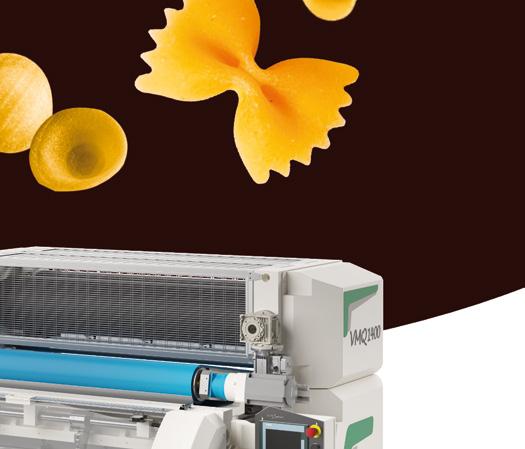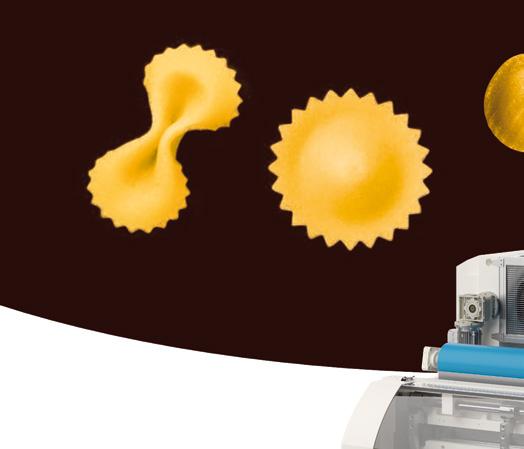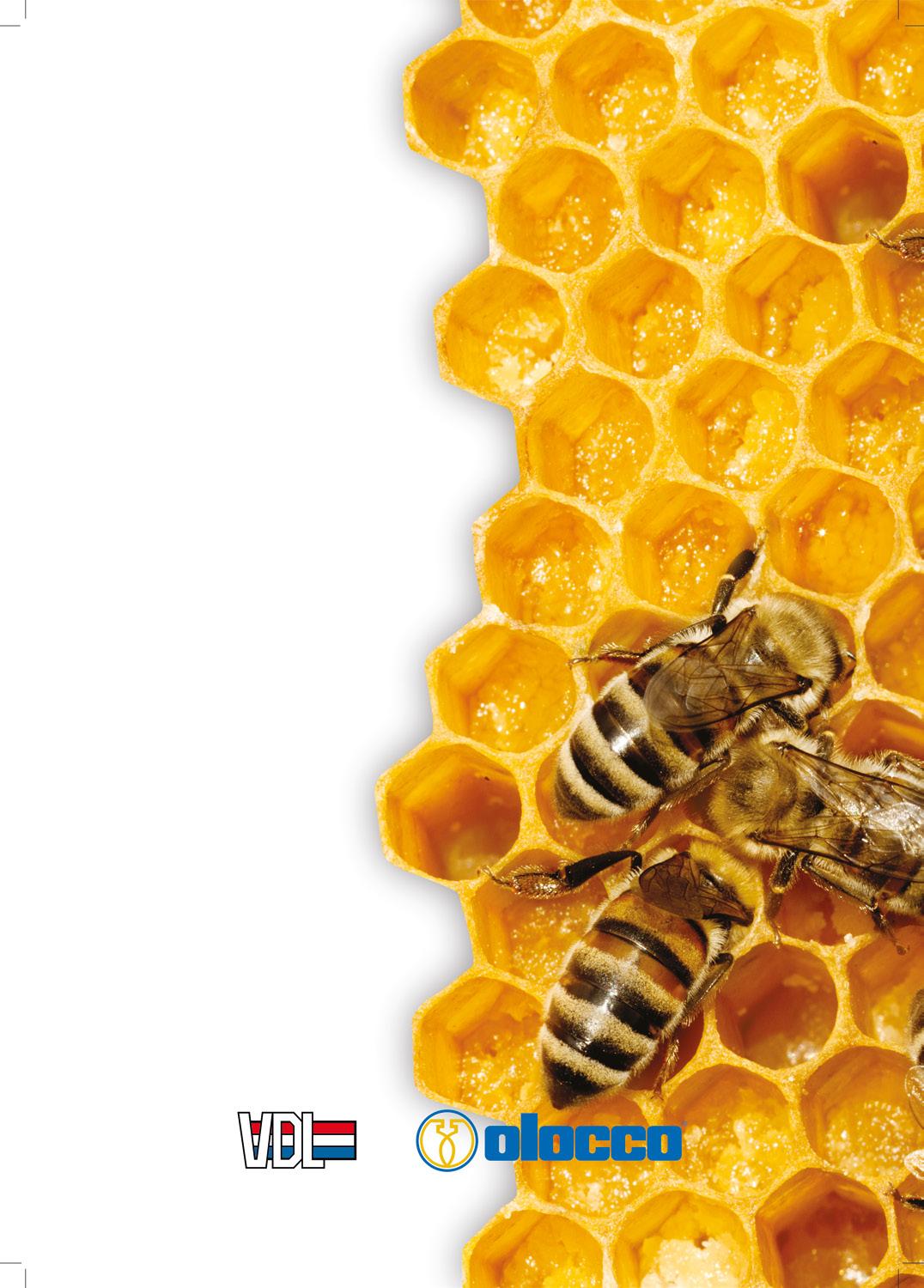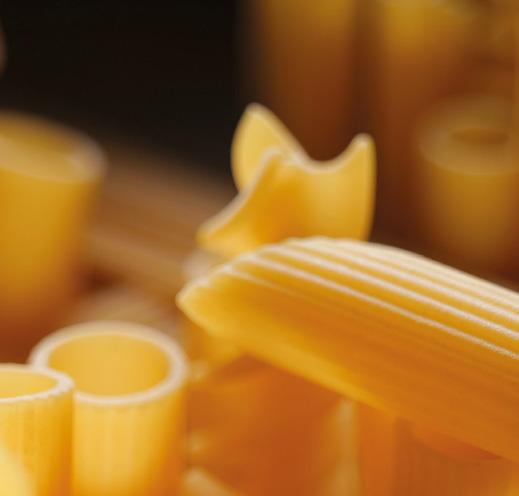
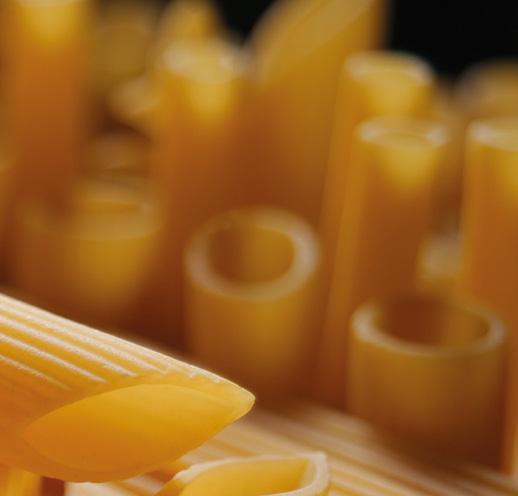
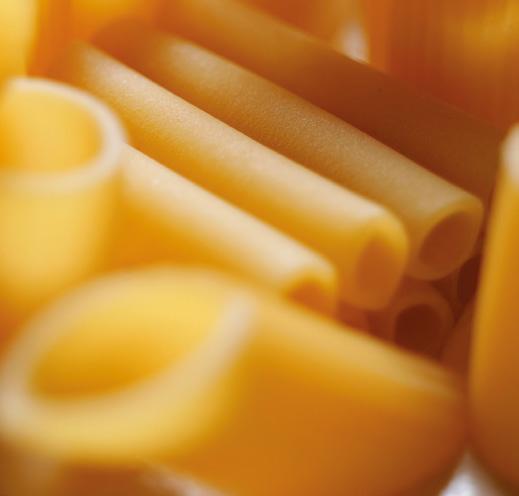


www.fava.it RESEARCH LEADS TO EXTRAORDINARY RESULTS ADV23_Cop_TM International.indd 1 12/04/2023 13:59:13 TECNICA MOLITORIA vol. 74 - n. 25 Spring issue 2023 ISSN0040-1862 10064 PINEROLO - ITALY - Tel. +39 0121393127 - e-mail: info@chiriottieditori.it Supplemento al n° 04 del 2023 di Tecnica Molitoria - Sped. in A.P. - D.L. 353/2003 (Conv. in L. 27/02/2004 n° 46) art. 1 comma 1 DCB TO - n. 1 anno 2023 - IP INTERNATIONAL WITH SUPPLIER DIRECTORY
Our results confirm it: Fava’s research leads to exceptional pasta quality levels, guaranteeing extraordinary solutions for the field. The new range of long and short-cut pasta lines, GPL 180 and TCM 100, are proof of the important technical and technological developments which, together with our innovative R&D laboratory and our ever-evolving value-added services, demonstrate the exclusive advantages of our know-how.



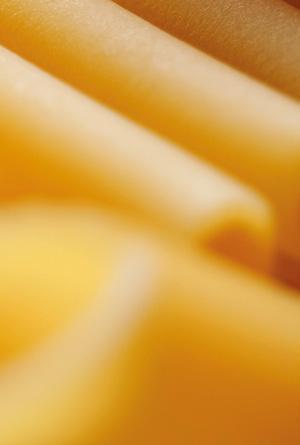
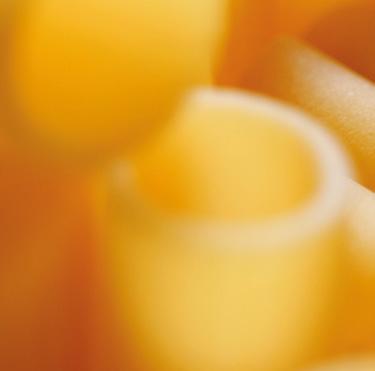
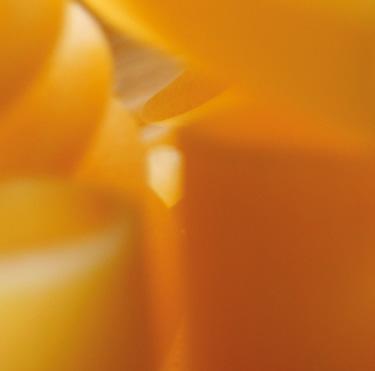
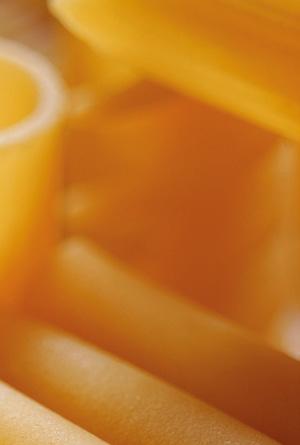
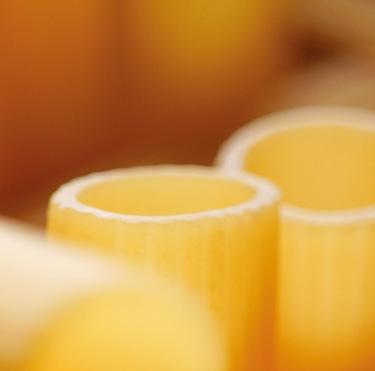
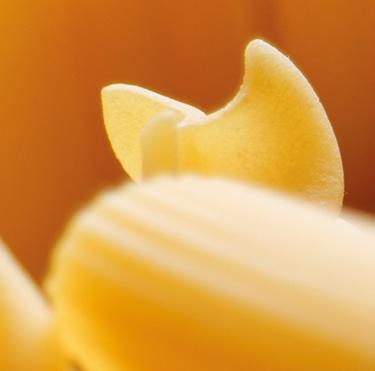
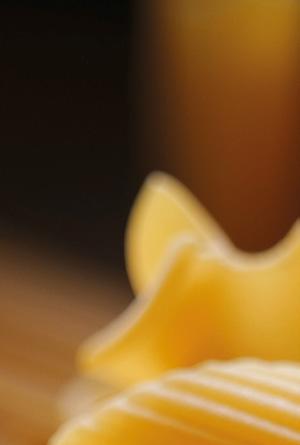


www.fava.it
RESEARCH LEADS TO EXTRAORDINARY RESULTS
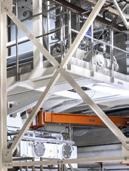
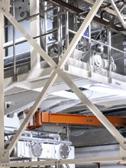



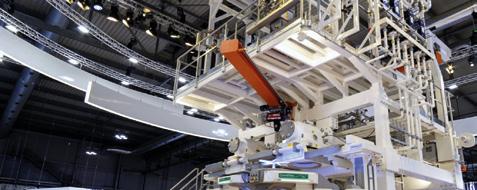






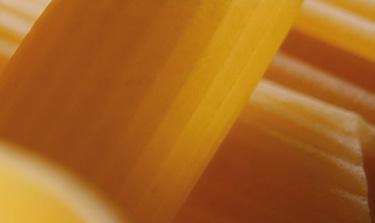
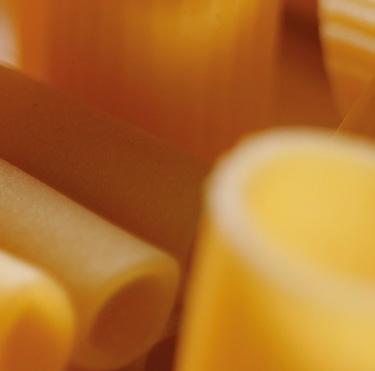
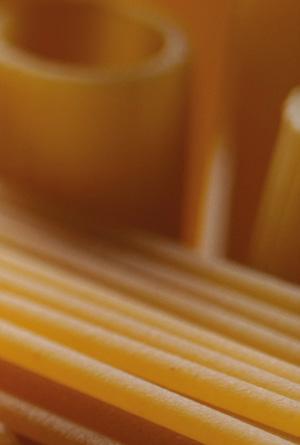
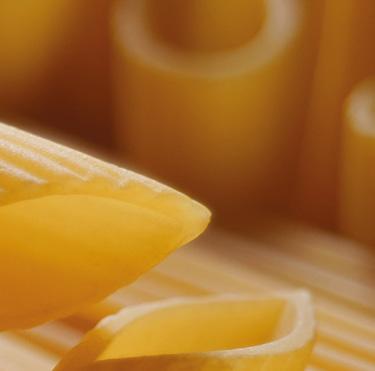


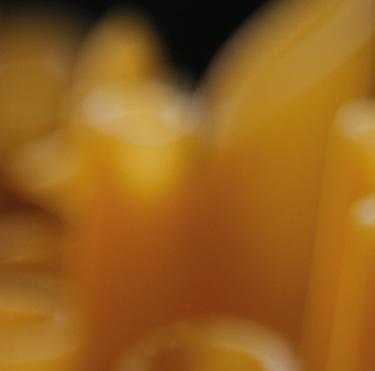

1










www.ai-lati.com 2








www.paglierani.com www.ocrim.com O u r es s e n c e li e s i n t h e f o r m s t h r o ugh w h i c h w e s h o w o u r s e l v e s . W e offe r j u s t wh a t w e a r e . A l w a y s . 3
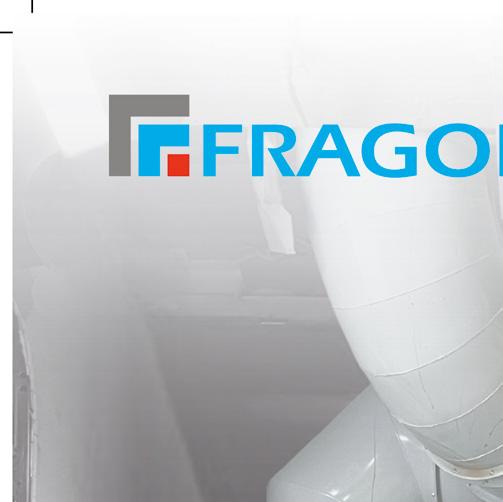
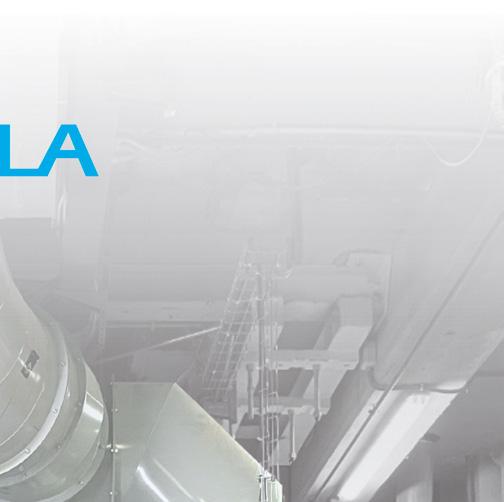
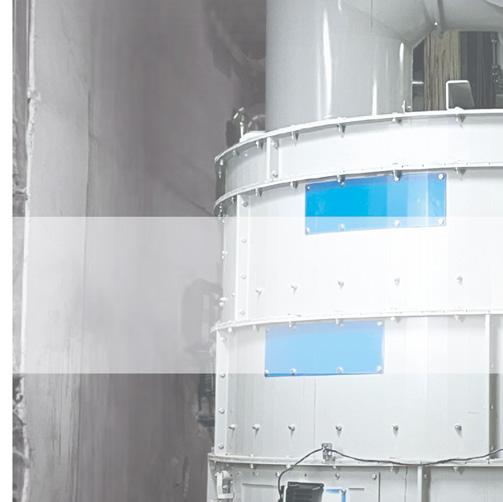
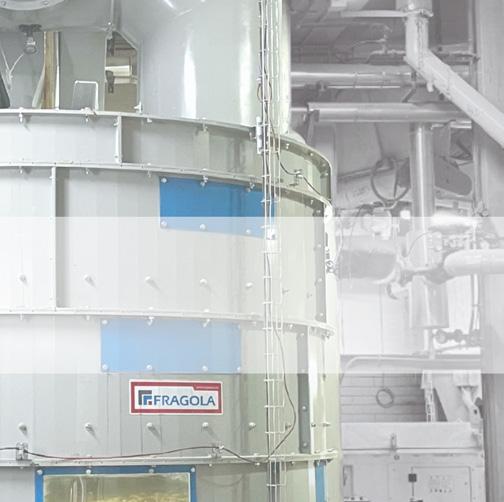

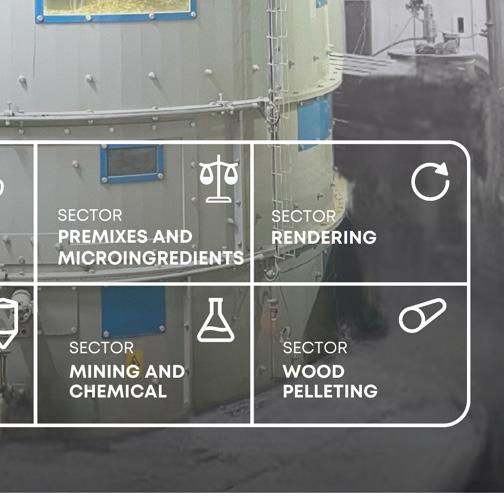

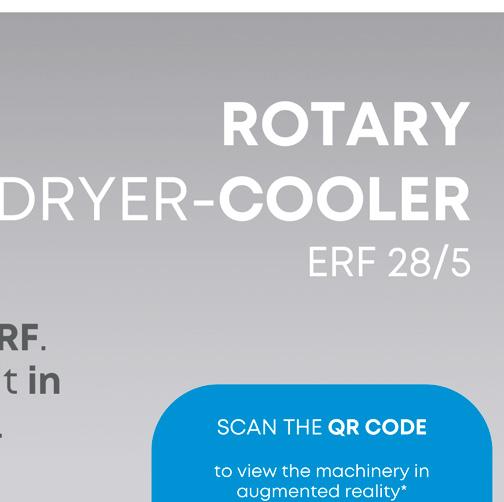


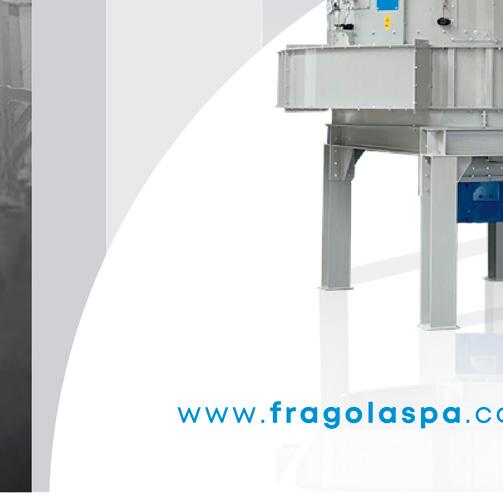

5
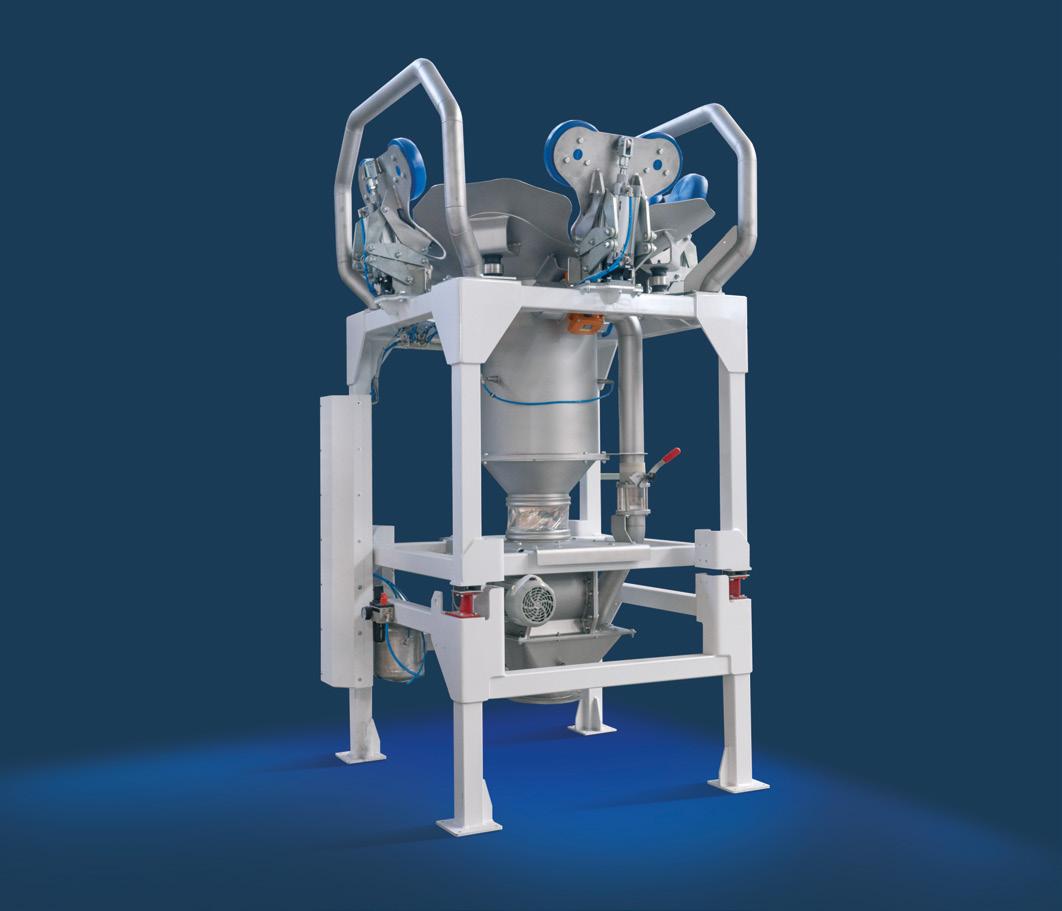







O.B.R. BULGARELLI srl Via Parri, 3 - 42045 LUZZARA (RE) Tel. +39 0522 976972 - www.obr.it - obr@obr.it * HAMMERS * PLATE * SIEVES
VARIOUS ACCESSORIES FOR FLOUR AND FEED MILLS
*


7
WE CONTINUE TRADITION, ENSURING GREATER PRECISION, EFFICIENCY AND PRODUCTIVITY
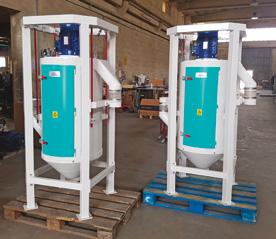



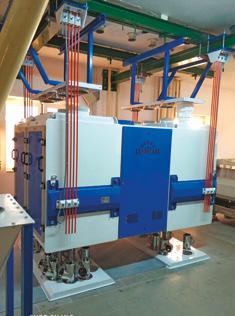
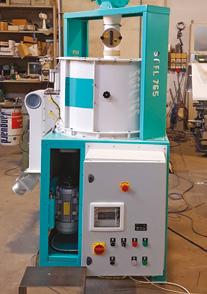

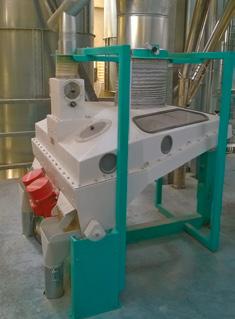

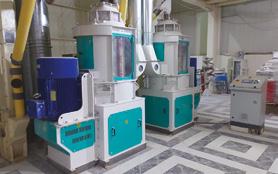
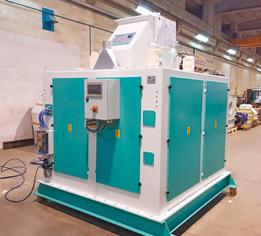

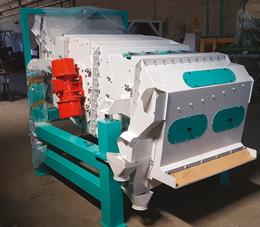
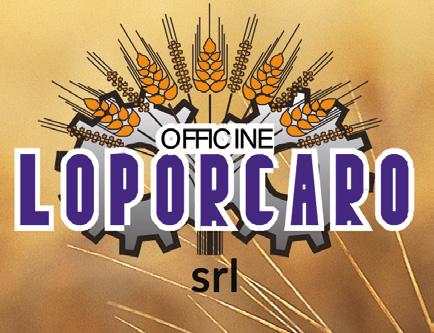
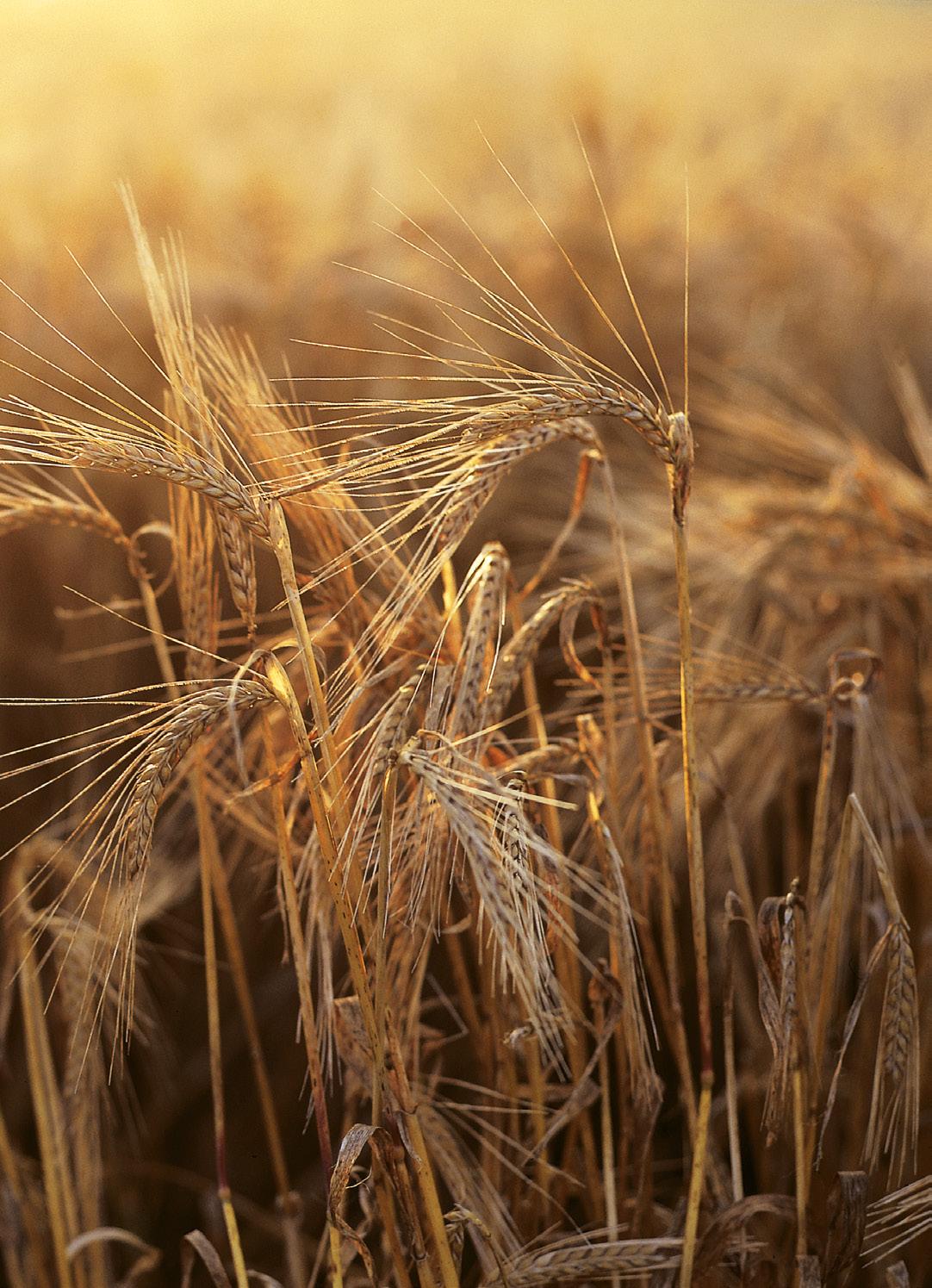
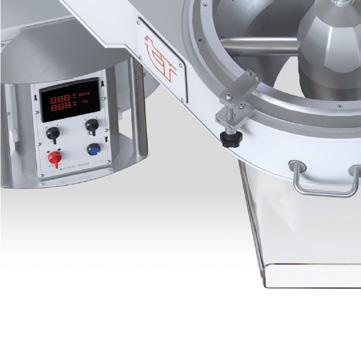
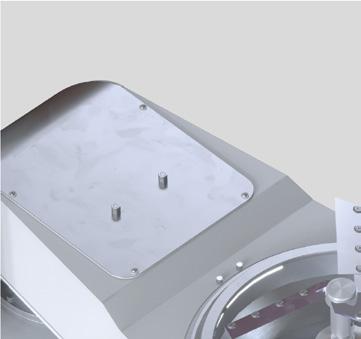
www.loporcaro.it S.S.96 Km.78,800 - Z.I. Via del Grano 1 70022 Altamura (BA) Italy
PRESSTRAPEN family
THE INCREASINGLY EFFICIENT CUTTING UNITS.
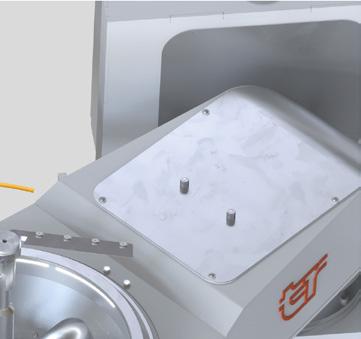

• NEW HEAD DESIGN WITH DIFFERENTIATED AND OPTIMISED VENTILATION

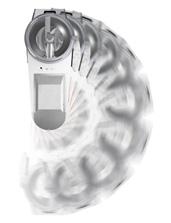
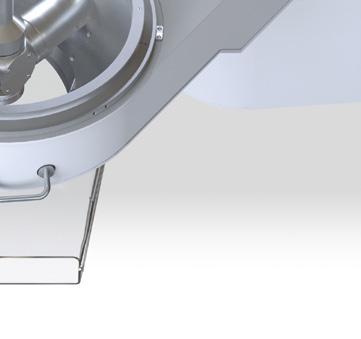
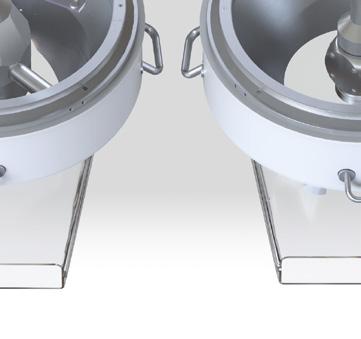

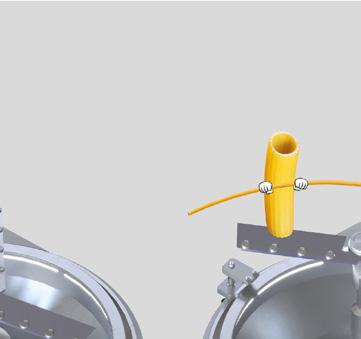
• BRUSHLESS MOTOR (PATENTED SYSTEM)
• COLOR TOUCH SCREEN
• FRESH PRODUCT DISCHARGE (OPTIONAL)
• MAXIMUM EASE OF OPERATION AND MAINTENANCE
• ALL WITH A SINGLE FAN!
Making our customers’ head spin for over 30 years.
9
Approvedby P ta!
WWW.NICCOLAI.COM
DOWNLOAD OUR CATALOGUES
PATENTED





10









MACHINES AND PLANTS FEED AND
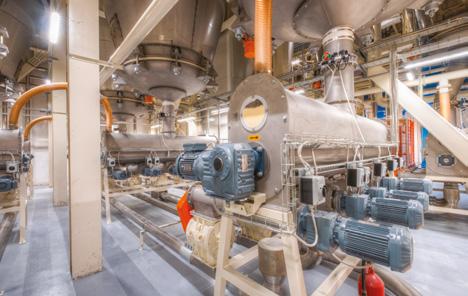
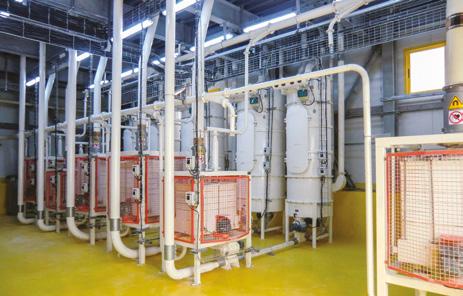
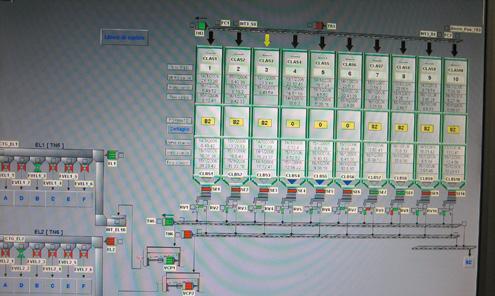

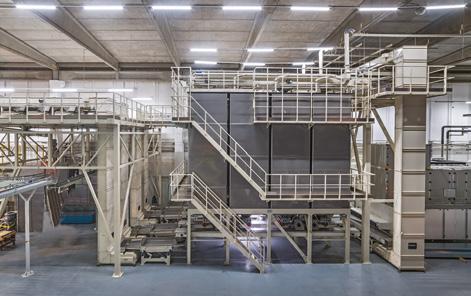
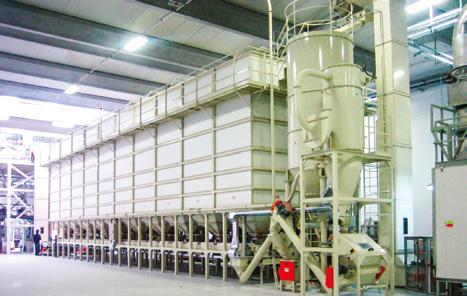

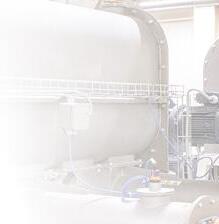
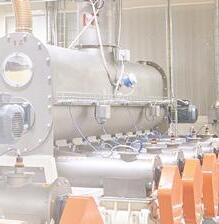
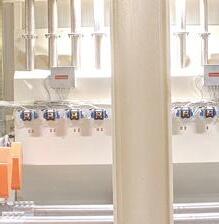
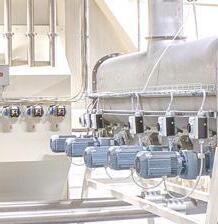


GAMMA PRODUTTIVA








• Impianti completi di stoccaggio prodotti granulari e polverosi.


• Impianti completi di insilamento paste corte ed alimentazione confezionatrici.
• Impianti completi di dosaggio e miscelazione.
• Impianti di presminuzzatura e macinazione sfridi ed archetti di pasta.
• Trasporti pneumatici in compressione ed aspirazione.
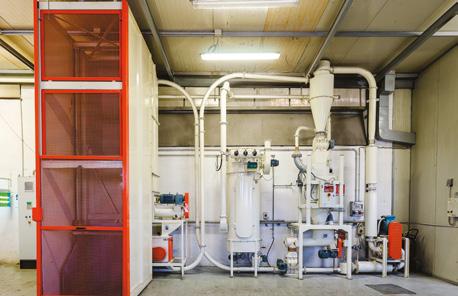
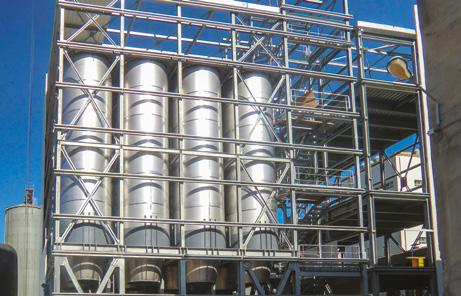


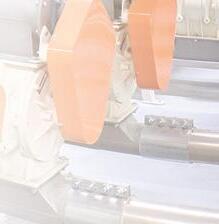
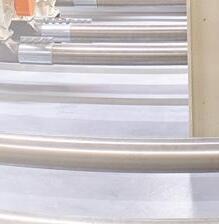
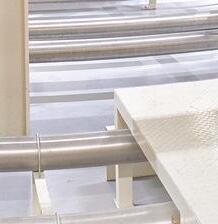

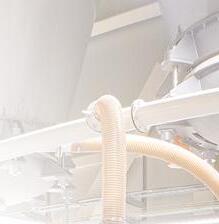



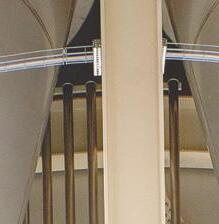
• Trasporti meccanici: trasporti a nastro, a catena ed a coclea.
• Elevatori a tazze: verticali, inclinati ed a zanca.
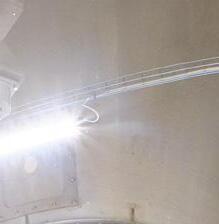

• Filtri autopulenti e statici.
• Quadri di comando con P.L.C. e computer.
12
PRODUCTION RANGE
• Systems complete with granular and dusty product stockings.

• Systems complete with short format pasta ensilage and packaging machine feeding line.






• Systems complete with dosing and mixing units.







• Systems for scrap and waste pre-crumbling and grinding.








• Compression and suction pneumatic conveying lines.



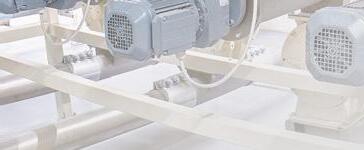

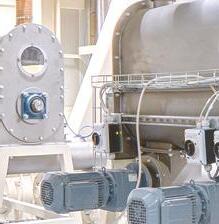
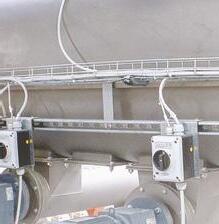
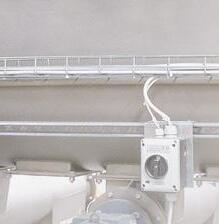



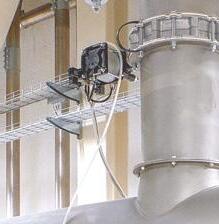


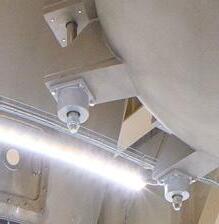
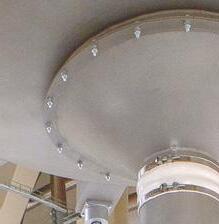
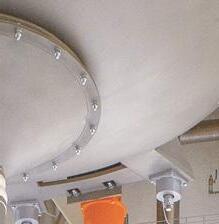

• Mechanical conveyance: belt, chain and Archimedean screw conveyors.
• Vertical, sloped and Z bucket elevators.
• Static and self-cleaning filters.
• Control panels with P.L.C. and computer.
S.I.R.C.E.M. C.M. S.p.A. Uffici e Stab.: Via A. Diaz, 19 84018 SCAFATI (SA) ITALY Tel. +39 081 8631205 (r.a.) Fax +39 081 8630301 sircem@sircem.it - www.sircem.it PLANTS
FOR FOOD INDUSTRY, CHEMICAL
13
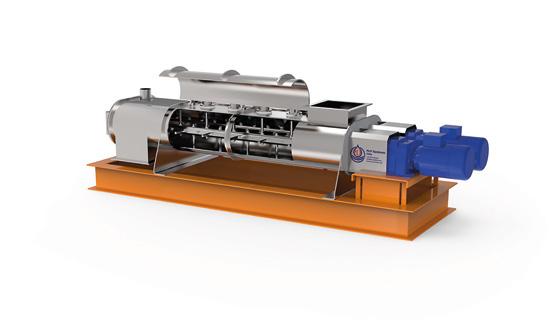

















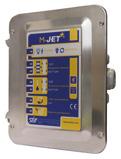
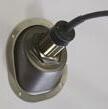



14 K
M-JET LINK Connection box
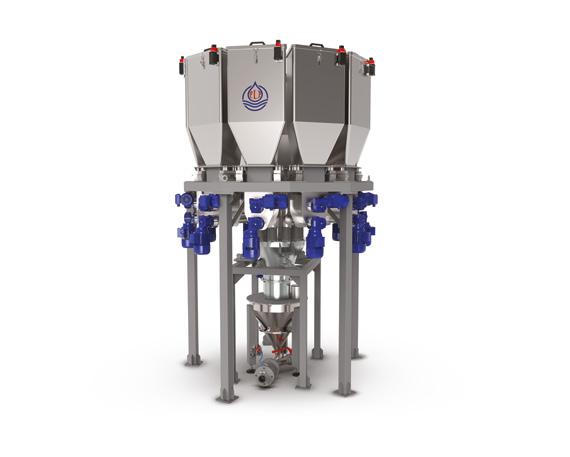
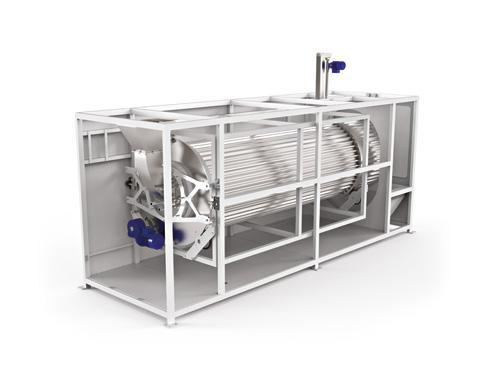



15
Tailor-made technology, driven by innovation
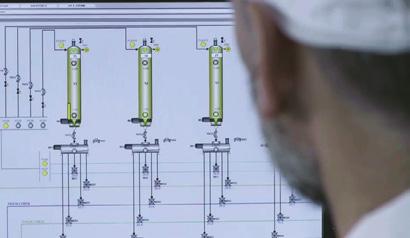

Discover Brambati’s experience and continuous research in equipments for raw materials handling in food industry: pasta, confectionery and bakery.
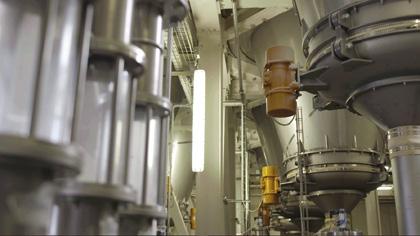
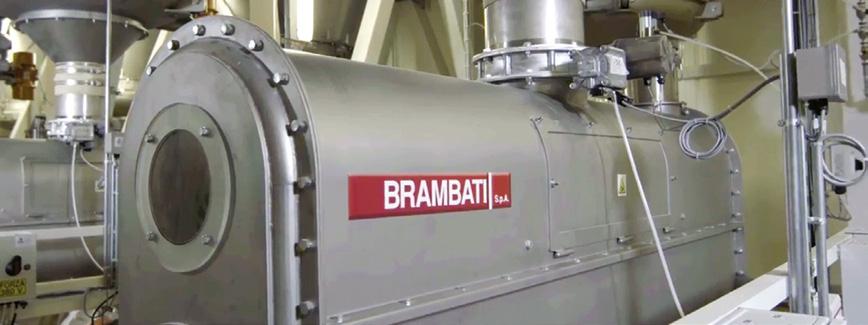
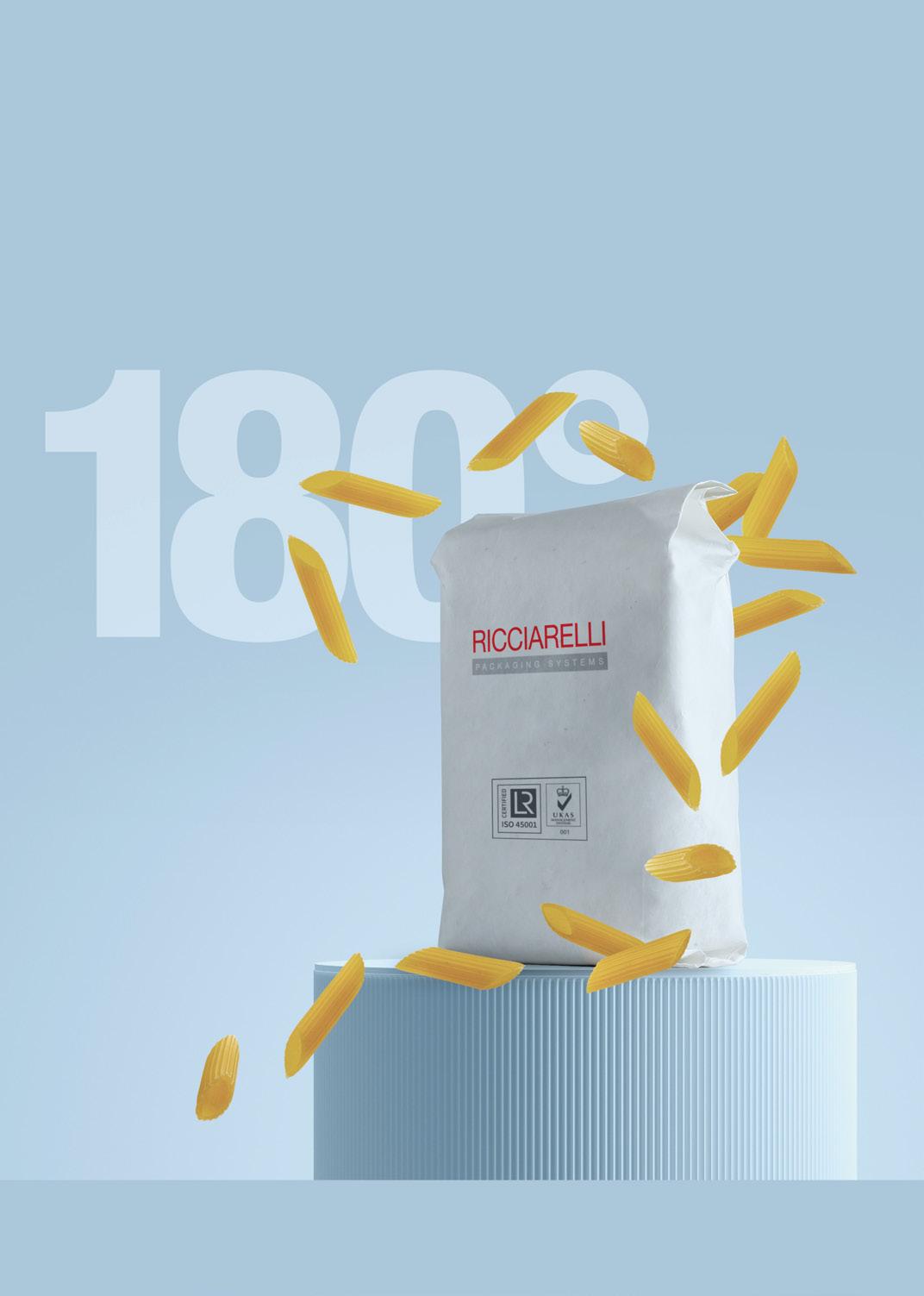
BRAMBATI S.p.A — via Strada Nuova, 37 27050 Codevilla (PV) ITALY tel: +39 0383 373100 | www.brambati.it | info@brambati.it
16

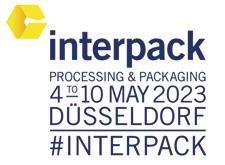
17
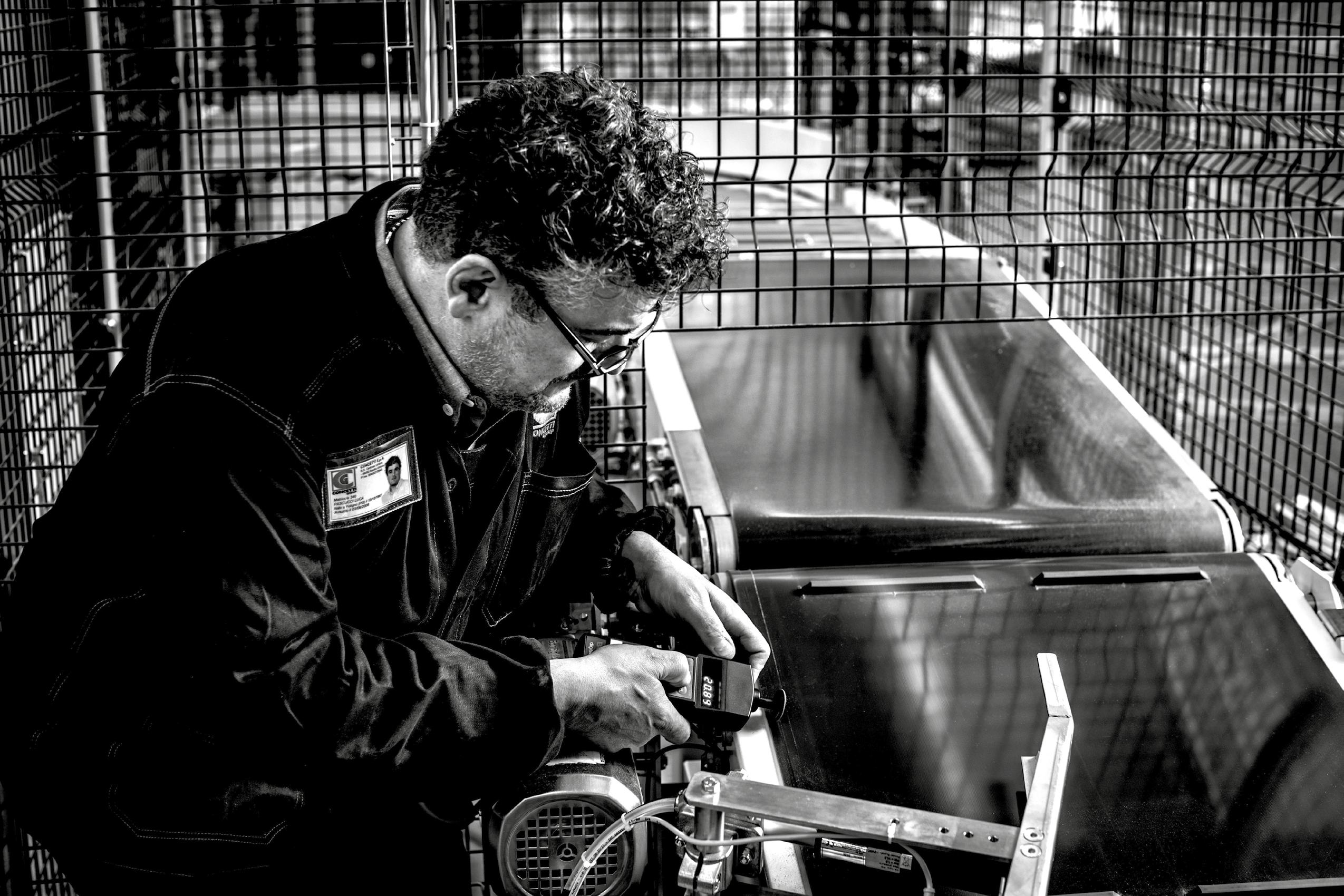

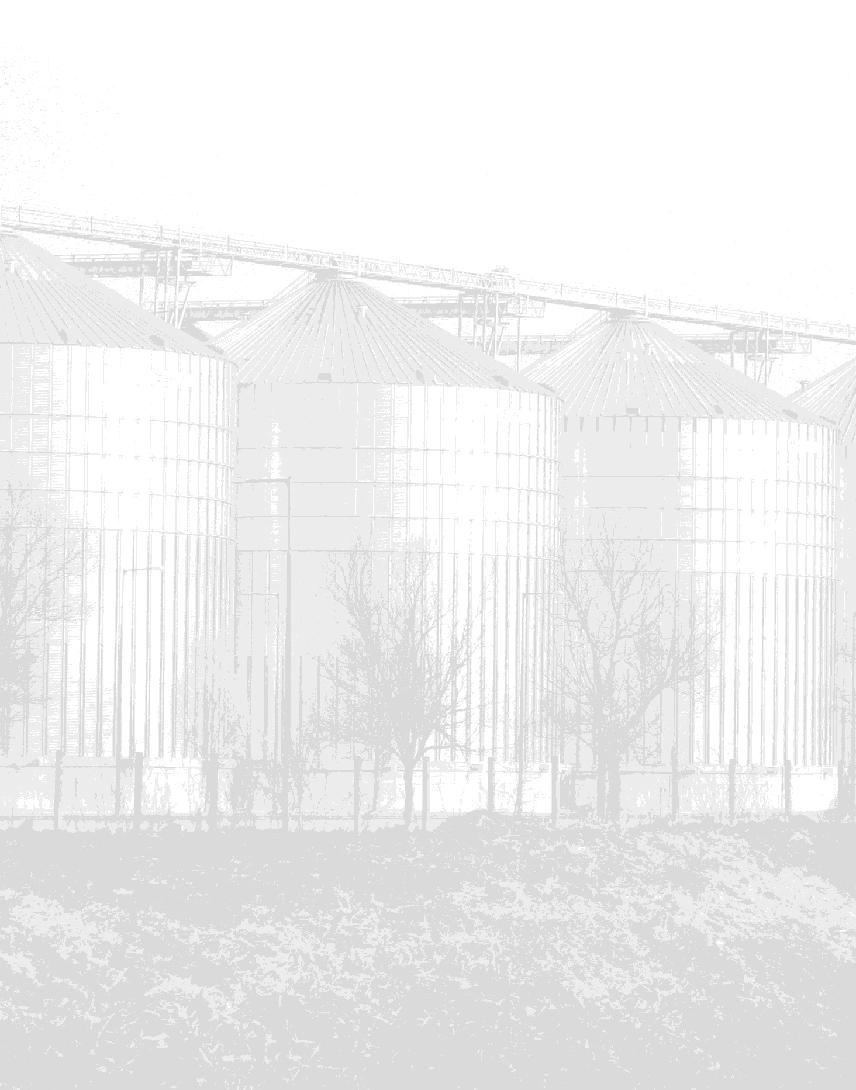
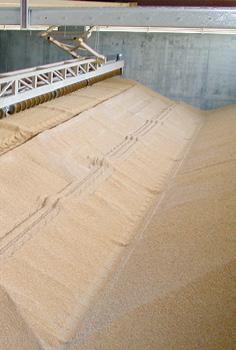

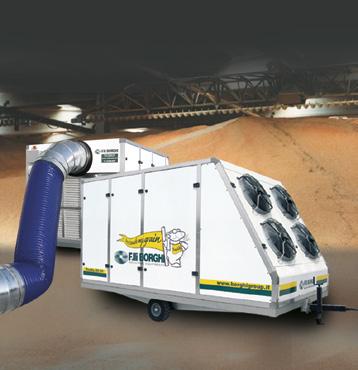

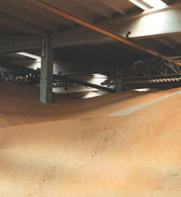



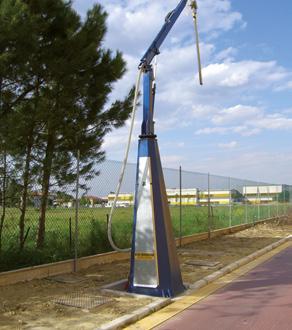

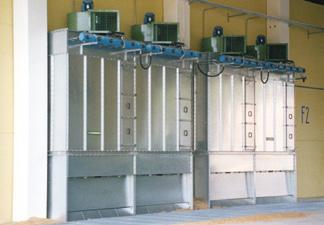
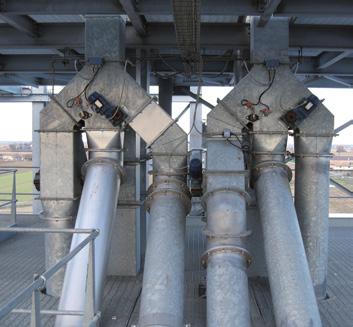
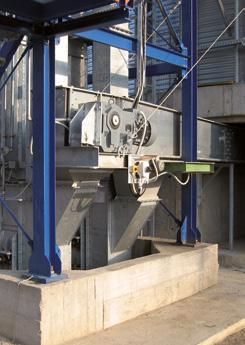
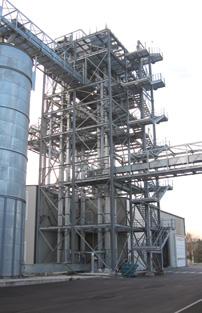




18 CONSERVATION, HANDLING AND GRAIN STORAGE SOLUTIONS & SYSTEMS 360° in Your Service 08611
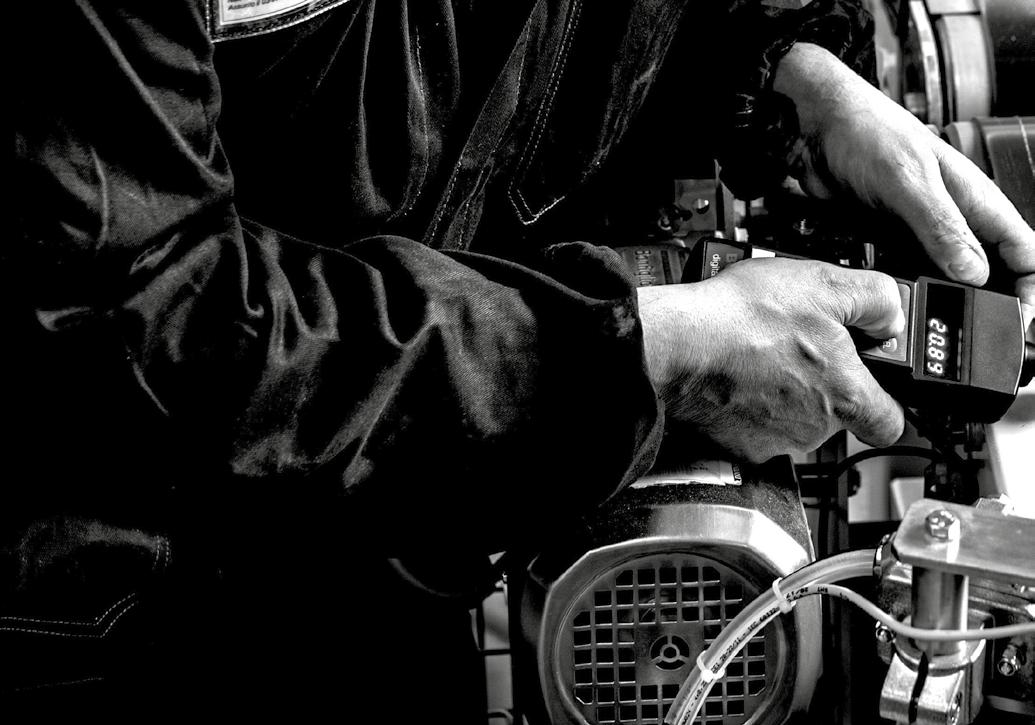



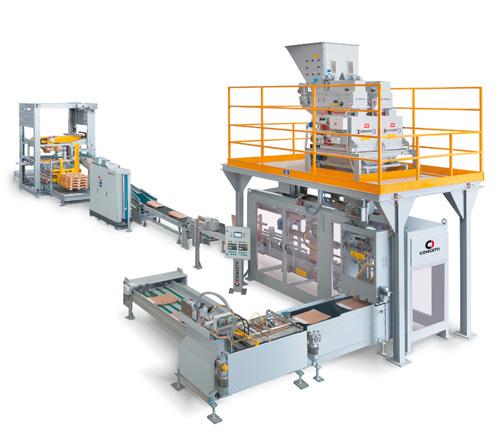







19

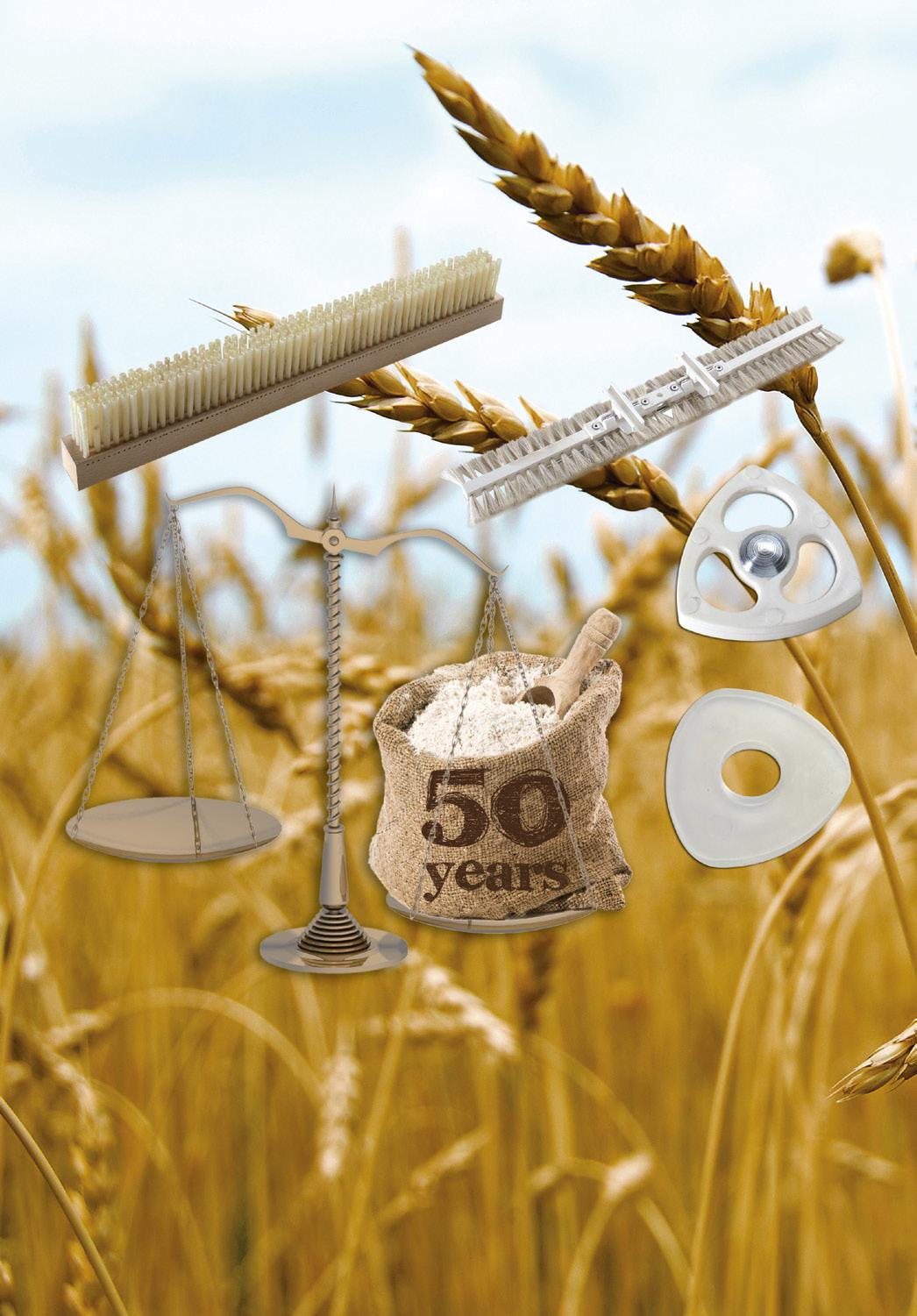



TECHNOLOGIES FOR THE STORAGE INDUSTRY
Technobins srl operates since 1995 in the sector of plant for the storage of granular and powdery products in general and in particular:
• Cereals and oil seed


• Flour and semola
• By products (bran, husk, etc)
• Feed
• Pasta
Technobins supplies all types of metal silos and operate for the supply of silos and steel structures to end customers or to main contractors. We also supply turnkey plant complete of mechanisation and electrical automation.
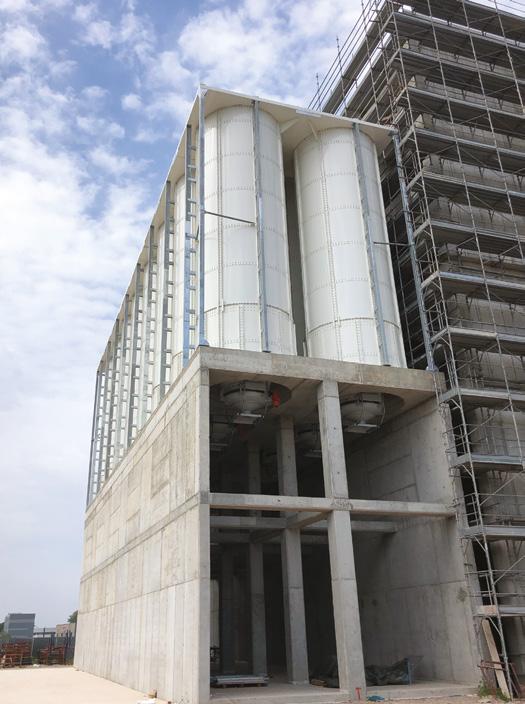

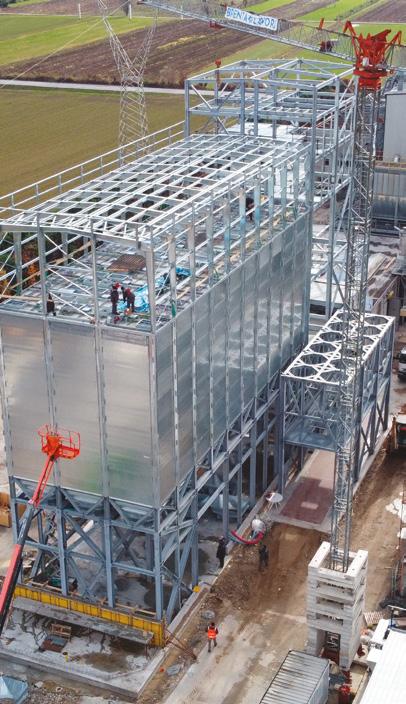

Technobins has a long experience in the installation of square and round bins integrated in industrial buildings, including the supporting steel structure, cladding and roof cover.
Technobins Srl
Via P. Nenni, 4
42048 Rubiera (RE) Italy

Tel. +39 0522 943002
Fax +39 0522 494105
info@technobins.it



21



























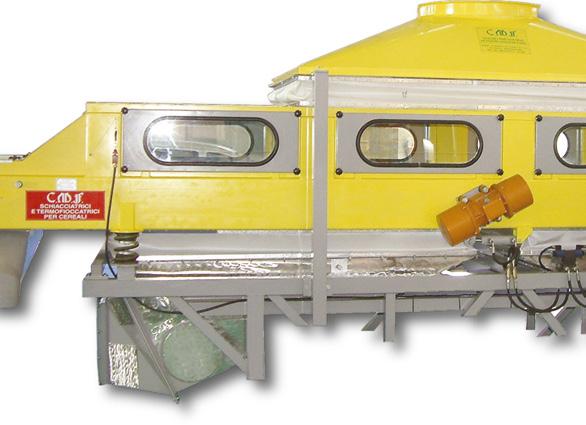
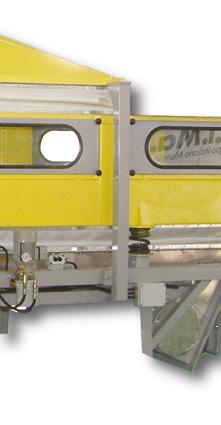


C.M.F. Ferrari Carlo s.r.l. Via Venezia, 3 25037 PONTOGLIO (BS) Tel. +39 030 7376774 - Fax +39 030 7470892 www.cmf-italia.it ferrari-giuseppe@cmf-italia.it - ferrari-alberto@cmf-italia.it C.M.F. Ferrari Carlo s.r.l. plants for CEREAL THERMAL FLAKING FLAKES AND CRUSHED CE performing 5-10 T/ho T h e r e p r e s e n t e d m a c h i n e s a r e i n s t a l l e d t o : M O U L I N S C H Y N S S . A .B e l g i u m ollers mm 1000X1200 Total weight: kg 24.000 NEW r l - Vi Ve eziaR our EAL DRIER - ROSTER performing 5-10T/hour COMPLETE Starch Gelatinization! 22
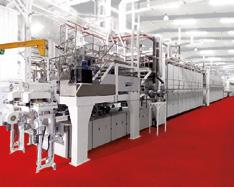
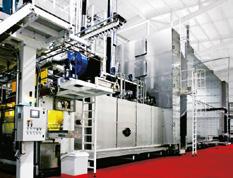
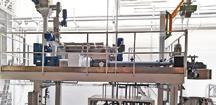

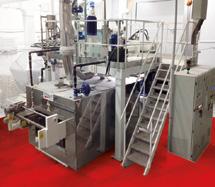



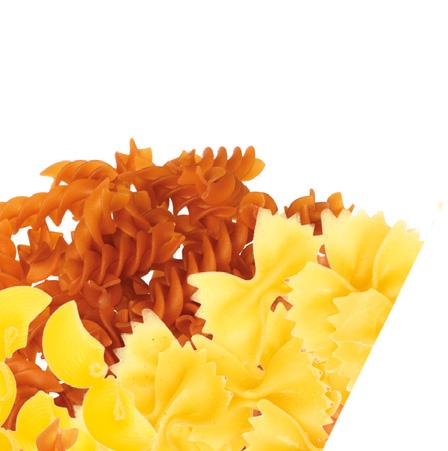
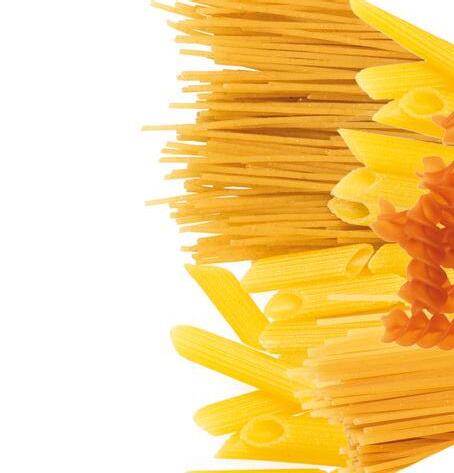
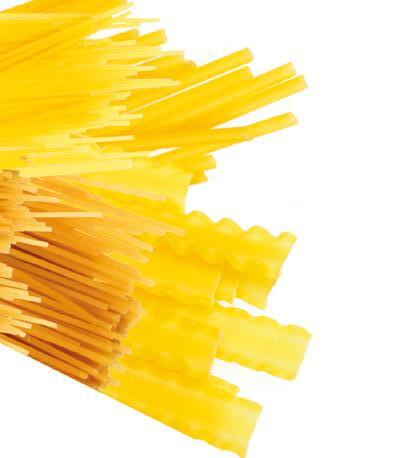

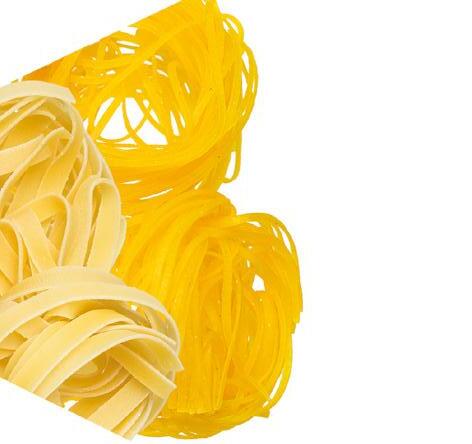
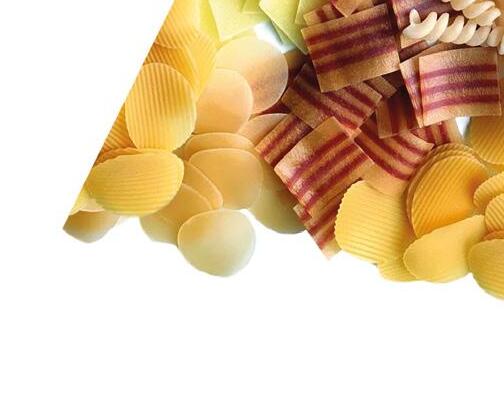

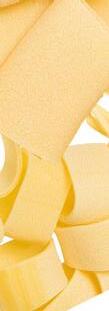
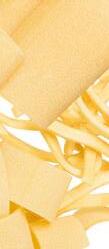
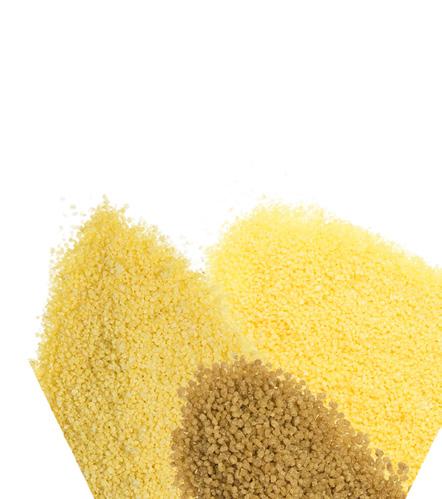


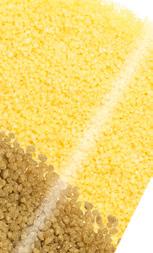

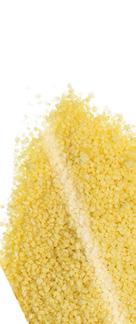
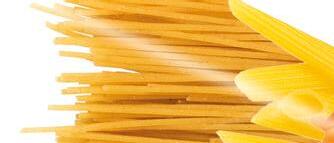
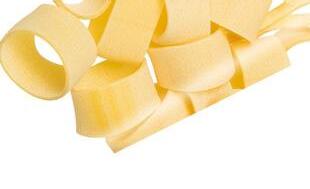
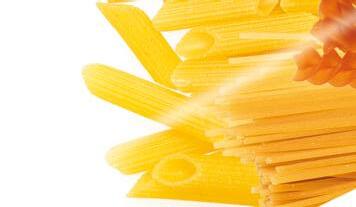
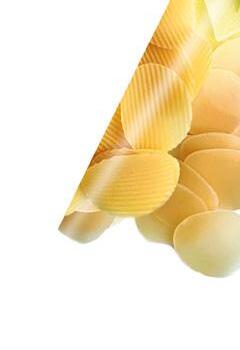


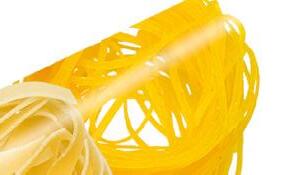
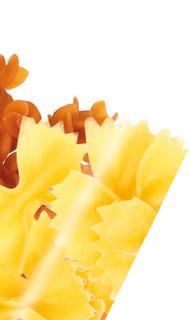

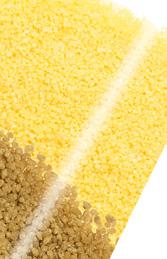

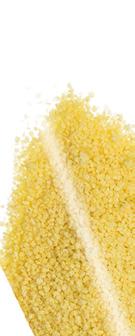

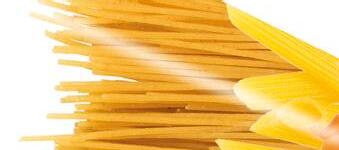
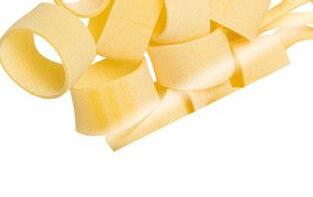
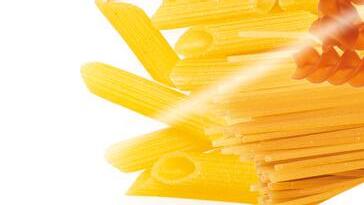



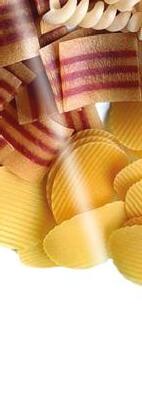
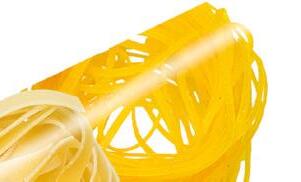


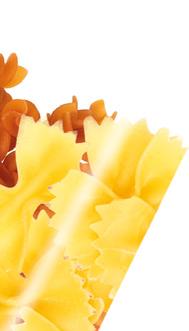
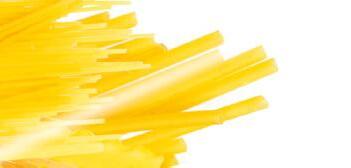






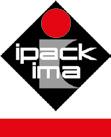


























































23
We treasure the future of our planet


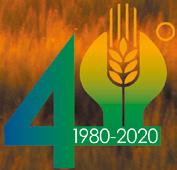




Agriculture as a restart as a certainty as S.I.M.A.
24
The new generation of food storage*

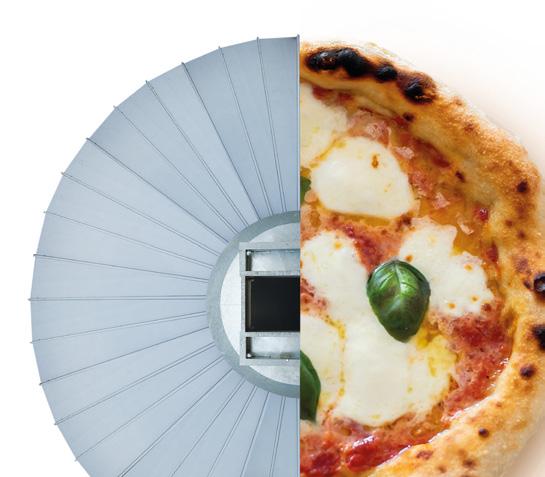
*Silos for the storage of cereals, flours and semi-finished products for food use, produced according to the standards of the Declaration of Conformity for the M.O.C.A. (Materials and Objects in Contact with Food).
M.O.C.A. is a certification that guarantees compliance with mandatory food hygiene requirements where the products are made in compliance with Regulation (EC) 1935/2004 of the European Parliament and of the Council of 27 October 2004.



STORAGE FEED SEEDS Campo San Martino PD Italy |Via Palladio, 7 | T. +39 0499638211 | mulmix@mulmix.info MULMIX.IT 25
for over 40 years we manufacture:









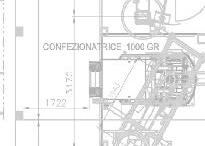








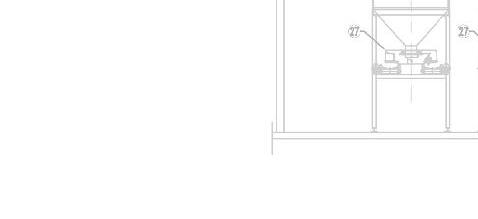
STORAGE PLANTS AND HANDLING SYSTEMS FOR SHORT- CUT PASTA AND GRANULAR PRODUCTS

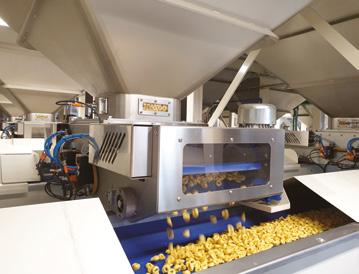
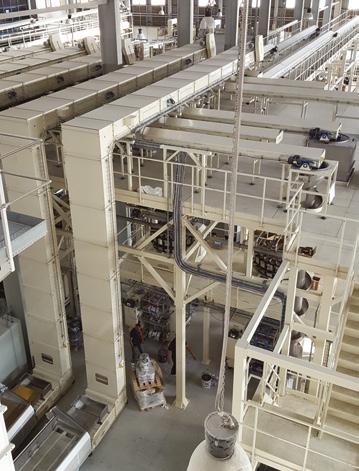








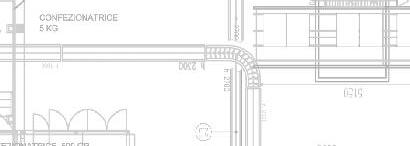












BUCKETS ELEVATORS - BELT CONVEYORS - SIEVES -VIBRATOR FEEDERS - LONG- CUT PASTATRANSPORT SYSTEMS
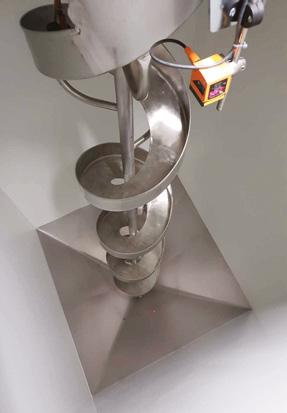


















SEMI-AUTOMATIC LINES FOR SHORT-CUT PASTA, LONG-CUT PASTA, NEST PASTA
AUTOMATIC DESTACKER ANDTRAY’S FEEDER,TRAY’S STACKER, TRAY’S DOWNLOADING SYSTEM, STATIC DRYERS
26 VIA GUIDO ROSSA, 13 A 16012 BUSALLA (GE) - ITALY TEL. +39 010 9642386 - FAX. +39
9760838 INFO@PRO-TECHITALIA.COM WWW.PRO-TECHITALIA.COM
010

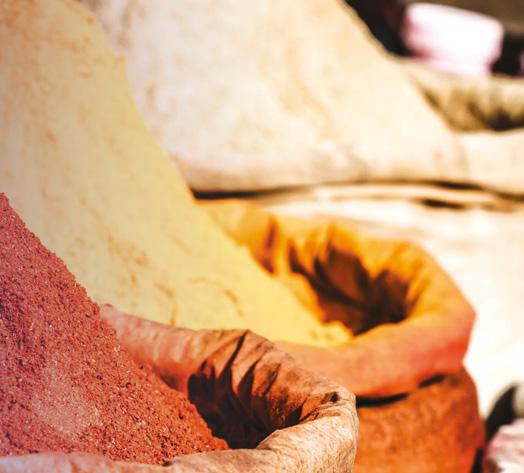
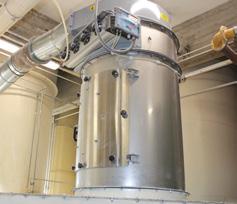
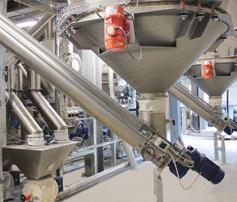
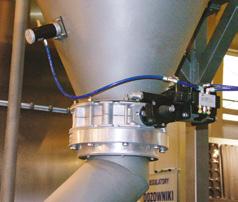
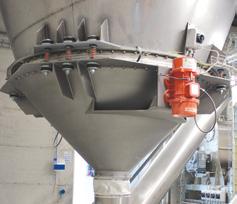
27
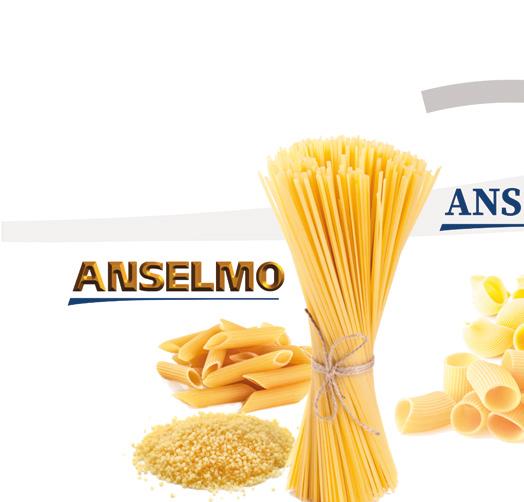
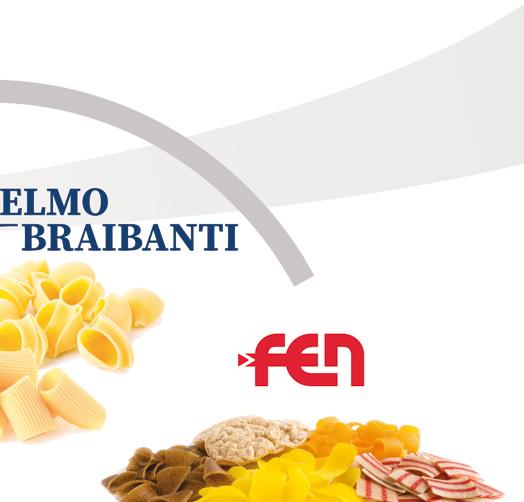
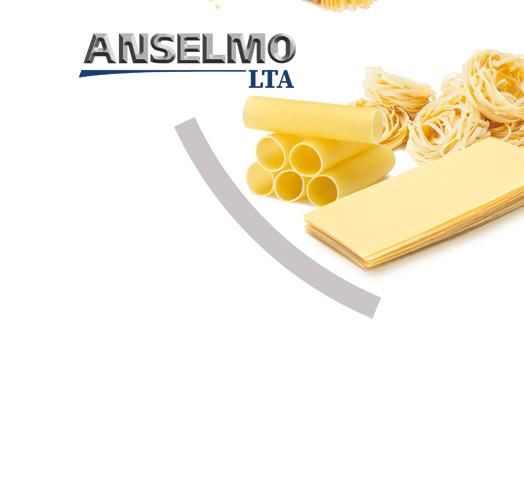
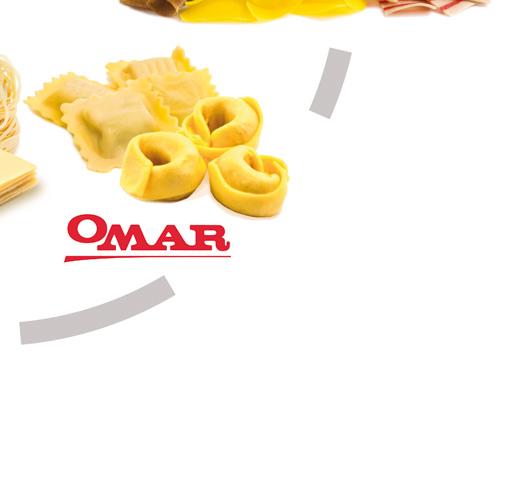


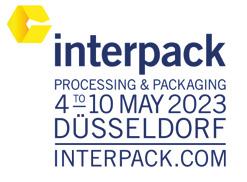








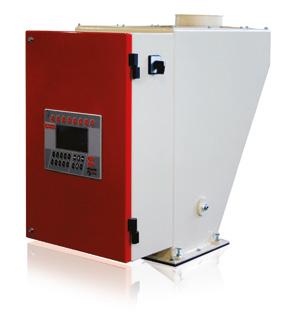
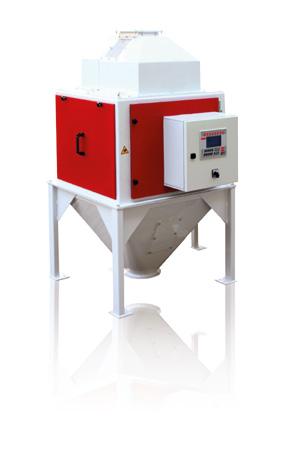
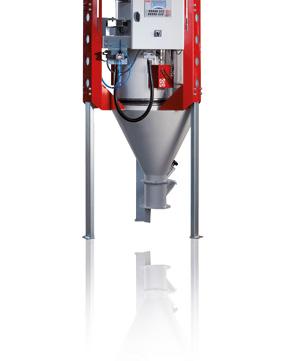
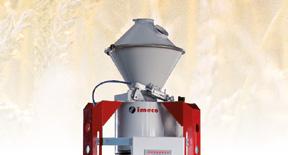




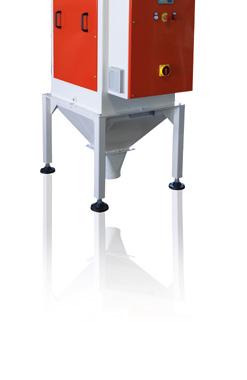
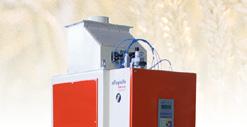









FORTY YEARS OF EXPERIENCE IN PROVIDING THE BEST WEIGHING, DOSING AND PACKAGING SOLUTIONS FOR BULK PRODUCTS IDM Automatic Dampening Controller TSE Electronic Single Weighing Hopper Process Weigher IMECO • Cremona (CR) - Italy (+39) 0372 496826 • sales@imeco.org www.imeco.org Electronic Twin Weighing Hopper Process Weigher DDC Electronic Flow Regulator



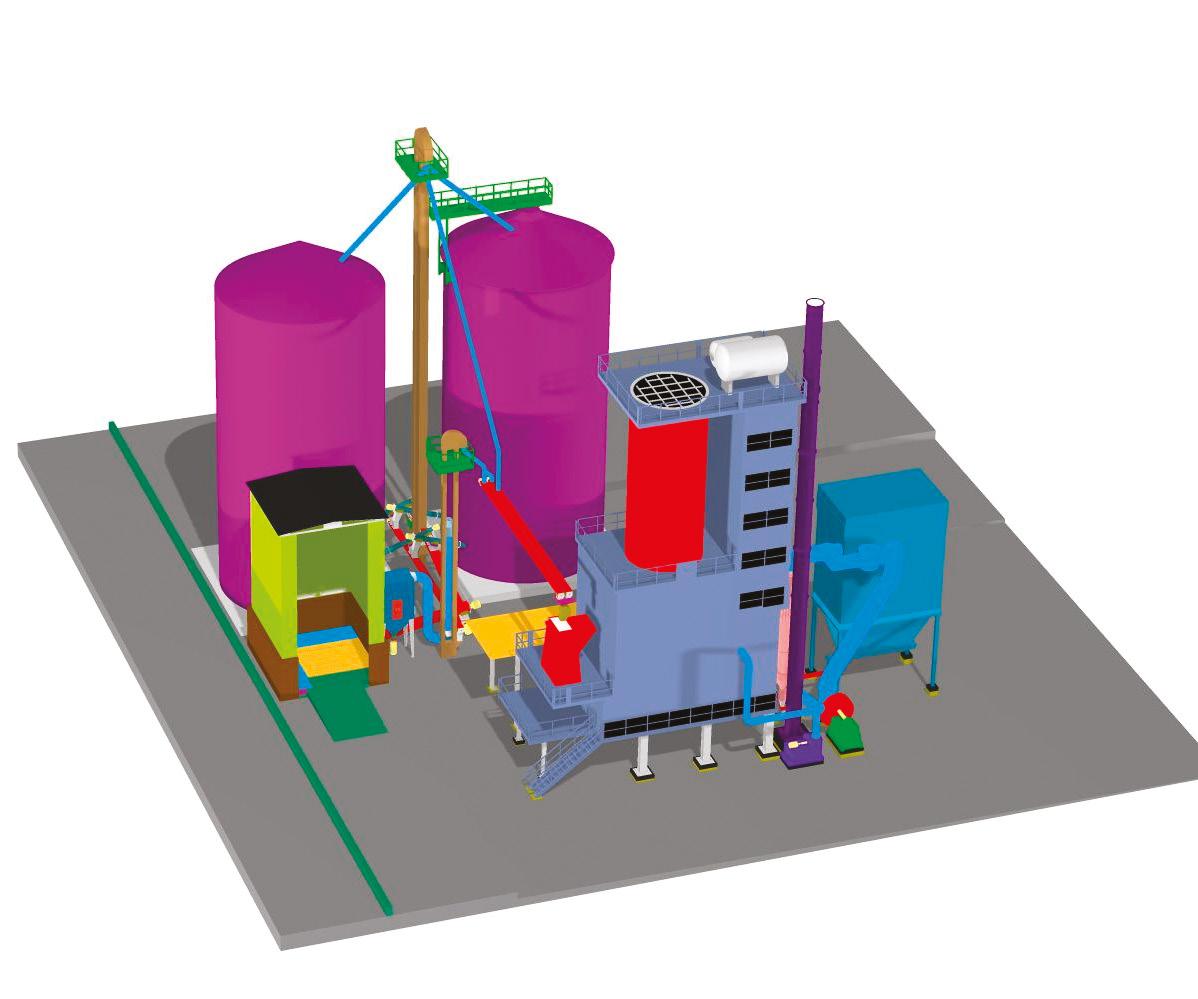


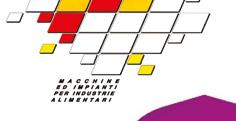
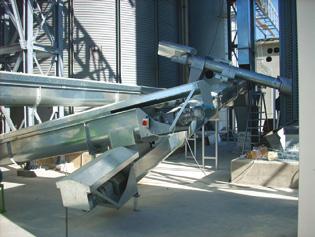

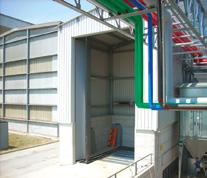
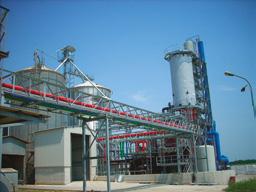
SYSTEM OF RECEIPT AND TRANSPORT LOLLA MM MAA ACC CHH HII INN NEE ESS S AA ANN NDD D PP PLL LAA ANN NTT TSS S FF FOO ORR R FF FOO OOO ODD D II INN NDD DUU USS STT TRR RII IEE ESS S I .M.M.A.C. S.r.l. Sede e Stabilimento Via Strada Nuova, 25 27050 Codevilla (PV) Italy Tel. ++39 0383 373044 Fax ++39 0383 73835 www.immacsrl.com E-Mail info@immacsrl.com 30
INNOVAZIONE SENZA FINE


There is a history that for over 70 years has supported customers all over the world in the design and construction of made-in-Italy plants for grinding, mixing, dosing and storing bulk products. It is our story. T Together we build that of your company





31
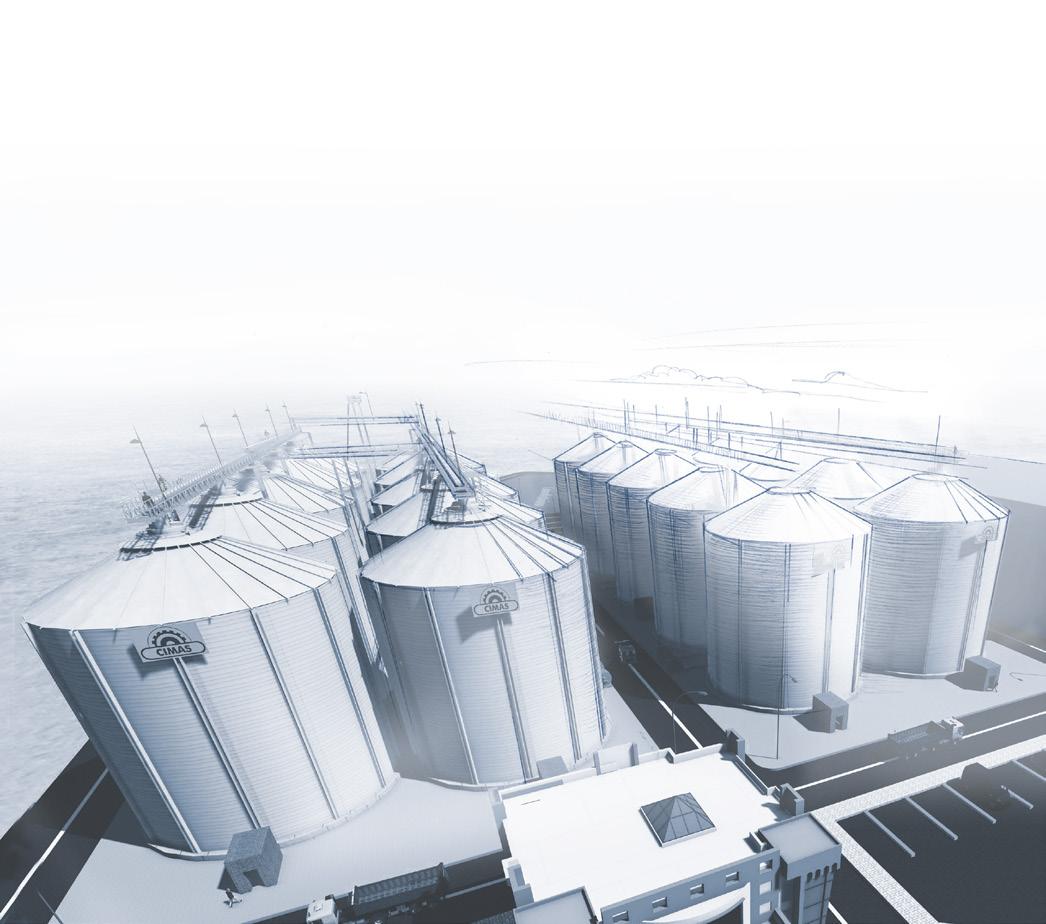

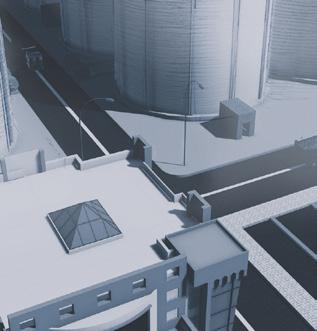






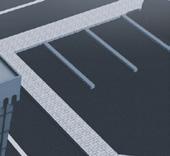
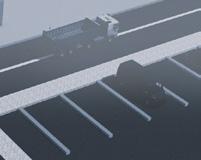




32
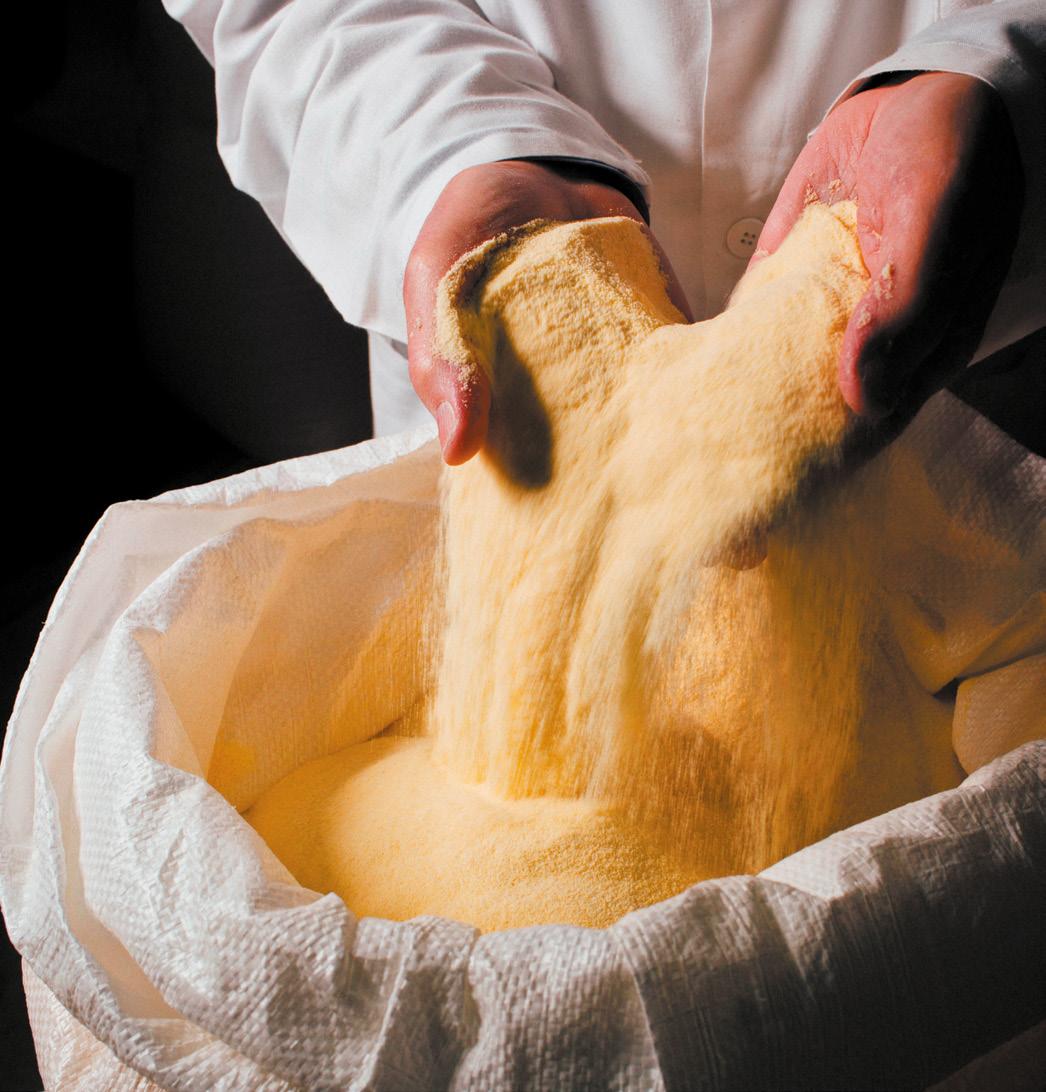
33 Contrada Torre la Macchia 70022 Altamura (BA) Italy | www.molitecnicasud.it | +39 080 310 10 16 | info@molitecnicasud.it
and Agri-food Plants
and 100% Made in Italy
and Agri-food Plants
and 100% Made in Italy
Milling
Customized
Milling
Customized
Milling Culture in the World”
“Spreading
Food and Milling Culture in the World” 001 % M ADEIN ITALYCERTI F I C ETA ITPI
Our Vision: “Spreading Italian Food and
Our Vision:
Italian
Optical sorting is evolution and specialization: a new OPTICA’s generation is born.

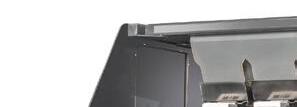

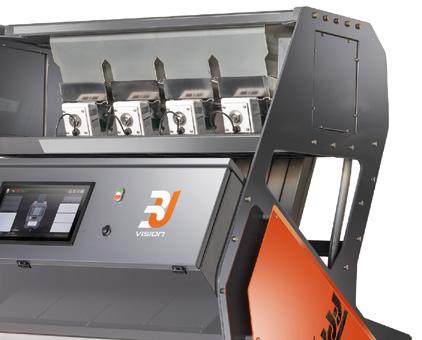
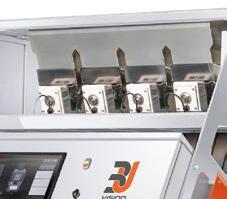

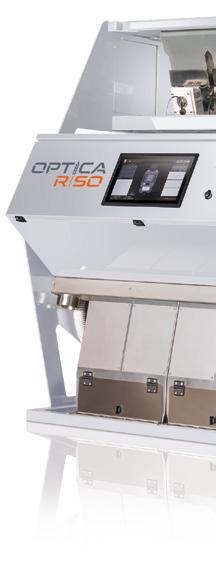
OPTICA HD: higher resolution, doubled detail, suitable for all applications.
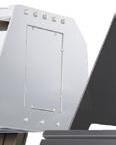







OPTICA RISO: expressly designed for an accurate selection of any kind of rice.


34 3U Vision Srl Via Ugo La Malfa 20 40026 Imola, Italia 0542 1881791 info@3uvision.com www.3uvision.com
EVOLUTION OF SPECIES
Viale Rimembranza, 60 - 10064 Pinerolo - TO - Italy Tel. +39 0121 393127
info@chiriottieditori.it www.chiriottieditori.it shop.chiriottieditori.it


PUBLICATION MANAGER Alberto Chiriotti
EDITOR-IN-CHIEF Livia Chiriotti
EDITOR CONTRIBUTING EDITORS Simonetta Musso, Laura Sbarato, Elena Folco, Chiara Mancusi, Rossella Contato, Matteo Barboni

EDITOR Federica Diaferio: diaferio@chiriottieditori.it
CIRCULATION Monica Primo: primo@chiriottieditori.it
SUBSCRIPTIONS Marilù Cianflocca: Tel. +39 0121 378147 - abbonamenti@chiriottieditori.it

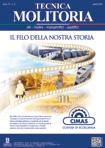
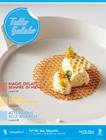
GRAPHICS Anna Boscolo
MARKETING MANAGER Monica Pagliardi: pagliardi@chiriottieditori.it
ADVERTISEMENT Luca Russo: russo@chiriottieditori.it
GENERAL MANAGER Giuseppe Chiriotti
PRINTED BY La Stamperia Pinerolese srls - Pinerolo (To)
COPYRIGHT © 2023 Chiriotti Editori srl - All rights reserved
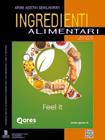
Supplemento a Tecnica Molitoria n. 4 Aprile 2023 - ISSN 0040-1862
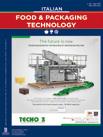
Spedizione in abb. postale Torino

Autorizzazione n. 172 (5-5-1950) e n. 233 (30-1-1961) del Tribunale di Pinerolo
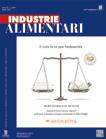

Aderente a: Copyright ClearanCe Center
Unione Stampa Periodica Italiana
Socio Sostenitore:
CHIRIOTTI EDITORI MAGAZINES
Tecnica Molitoria the Italian milling journal since 1950

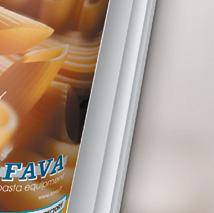



“Tecnica Molitoria International” is the English language son of the Italian monthly magazine “Tecnica Molitoria” published by Chiriotti Editori, which enjoys worldwide prestige as the most complete journal dealing with all branches of pasta making, wheat milling, feed mills, silos, and cereal research.


Tecnica Molitoria
The Italian language “Tecnica Molitoria” journal first appeared in 1950, and now runs 12 issues each year. Technical and scientific articles by Italian and foreign experts



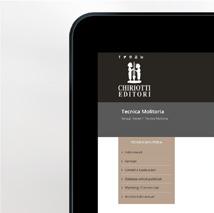

36 ˙ Spring issue 2023 Tecnica Molitoria International riempitivi TM per sito.indd 1 17/04/23 10:56
The web page www.tecnicamolitoria.com where “Tecnica
updated
Molitoria”
indexes can be found.
(with English abstracts), descriptions of new machinery, equipment, technologies and services, economical and legislative news, exhibition and congress reportages, and current activities are regularly published each month. The summaries of the technical and scientific articles published in the last and in the past issues of “Tecnica Molitoria” can be viewed at the English language web page www.tecnicamolitoria. com. Further to the subscription of “Tecnica Molitoria” hard copy by air-mail, they are available the PDF for tablet and PC as well the iPad and iPhone subscriptions.
Tecnica Molitoria International
Since the year 2000 “Tecnica Molitoria International” is published as well. It is issued once a year completely in English language. This magazine is sent abroad for free, in order to promote the Italian technology, machinery, and research worldwide.
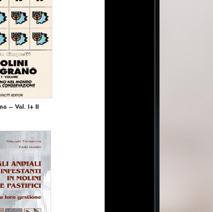
“Tecnica Molitoria International” is also available on-line for free, together with several other English language technical magazines of Chiriotti Editori publishing house, at the web page www.chiriottieditori.com (click “Digital magazines”).


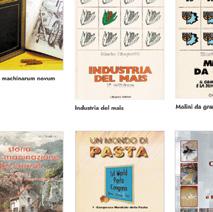






(Chiriotti Editori - Viale Rimembranza 60 - Pinerolo - TO - ItalyTel. +39 0121 393127 - www.chiriottieditori.com)


tecnica molitoria Tecnica Molitoria International Spring issue 2023 ˙ 37
“Tecnica Molitoria International” is freely available on-line to be downloaded at shop.chiriottieditori.it
riempitivi TM per sito.indd 2 17/04/23 14:33
CONTENTS
Tecnica Molitoria
36 - Tecnica Molitoria, the Italian milling journal since 1950

Marketing
39 - The maize flour market to 2031 - Feed premix market trend
Cereals
44 - Updates on the world cereal market - FAO forecasts on cereal supplies in 2022/23 - New purple and red rice varieties - To enhance wheat yield - Europe’s first GE wheat trial produces less acrylamide - Strengthening sorghum against a fungal threat - Grain silage rehydrated with water or acid whey
Milling
54 - Preharvest and flour quality - Variability of carbohydrate composition and pasting properties of oat - Increases iron and zinc concentrations in wheat flour - Hydrothermal treatment parameters on oat grindingComparative study of separate and mixed fine grinding methods
Feedstuff
60 - Polyphenols, isoflavonoids, and their metabolites in milk samples - Exhausted bergamot by-product for pigs - Protein sources for cattle diet - Energy reduced diets for broiler - Feed supplementation with silage in pigs - Sustainable business models for insect-fed poultry production
Pasta
66 - Addition of high-amylose wheat - Raspberry powder as a functional ingredient - Rapid detection of common wheat flour addition to durum wheat flour - Spirulina enriched gluten free protein maize (QPM) pastaOptimization of pasta supplemented with tef and chickpea flours - Gluten-free pasta enriched with protein
Bread
72 - Sodium chloride substitution with Salicornia ramosissima powder - Properties and in
vitro digestibility of a bread enriched with lentil flour - Addition of wheat bran - Bran particle size on rheology properties and baking quality of whole wheat flour - X-Ray microtomography of a white bread from plasma functionalized flour - Effect of wheat and barley malt addition - Gluten composition and baking quality of wheat
Machinery and equipment
80 - Molitecnica Sud: Italian milling and food culture around the world - Production lines for pasta, couscous and snack pellets - Single Shaft Ribbon Blender - Pasta scraps recovery - New complete plant for storage and rapid bulk return of meat flour - Business between the Rummo pasta factory and Cusinato has been strenghtened - Mobile hopper - New automatic bagging machine - Brushes for milling - Complementary systems for pasta production lines - Avantgarde packaging machines - New goals in Africa for OcrimThe solution for sorting and grading cereals with maximum accuracy - Micro powder dosing systems - Hygienical storage systems and handling systems - Semi-automatic spre sampler - Fava’s research achieves new objectives - Creativity and professionality, the winning combination - Cimas in a strategic continent - Accessories for milling industry
News
111 - The seek for nutrient-dense foods - A new identity - Olocco joins the VDL Groep
Agenda
114 - Retail Plaza by TuttoFood, the format to discuss the future of retail - Trade show Solids gets Italian flair - Host 2023, where innovation gets a sneak preview - In Rome the Symposium on gluten free cereals - Diary of international events in Italy and worldwide events
119 - Supplier directory
128 - Advertisers index - Companies index
SPRING ISSUE 2023
The maize flour market to 2031
According to a research by Allied Market Research, the global maize flour market was valued at $32.7 billion in 2021, and is projected to reach $51 billion by 2031, growing at a CAGR of 4.6% from 2022 to 2031.
Maize flour is derived from the ground and desiccated seeds of maize or corn plant. Vast majority is made of yellow and white maize flour. Maize flour is healthier and tastier as compared to other flours. In addition, it is suitable for patients with high cholesterol as it has been shown to have an anti-atherogenic effect on cholesterol levels, which reduces the risk of various cardiovascular diseases.
The pandemic disrupted the food & beverage industry all across the globe. Consumers’ buying behavior has changed by their perception of the risk associated with Covid-19. To reduce the risk of infection, consumers preferred online services for acquiring daily essentials. As a result, buying foods from restaurants and hotels was discouraged. Global trade restrictions, on the other hand, put strain
on regional economy. The closure of restaurant and food chains further caused setbacks to the market.


In long term, as the situation begins to stabilize, consumers are focusing on appropriate solutions for food items made up of maize flour. Maize flour firms are rethinking their strategy, rationalizing their product lines, and evaluating the robustness of their supply chains and route-to-market networks, going to simplify and optimize e-commerce. Manufacturing companies will be looking to set up their business into an omnichannel to cater to the market demand and increase their sales.
Consumer preference toward food is changing, and preference for nutritionally enriched is increasing as people are now more concerned about their health. The high cost of raw materials may affect the growth of the maize flour industry as the cost of corn, the main raw material used in the production of corn flour, has been steadily increasing in recent years. This has made corn flour less affordable for consumers, resulting in a slowdown
Tecnica Molitoria International Spring issue 2023 ˙ 39
marketing
in market growth. According to the United States Department of Agriculture National Agricultural Statistics Service, the price of corn for June 2022 is 7.37 $/ bushel, which is at an all-time high. The global maize flour market analysis is segmented on the basis of product type (yellow and white), end-user (commercial and household), distribution channel (hypermarkets/supermarkets, convenience stores, online retail...), and region (North America, Europe, Asia-Pacific, and LAMEA). On the basis of product type, the
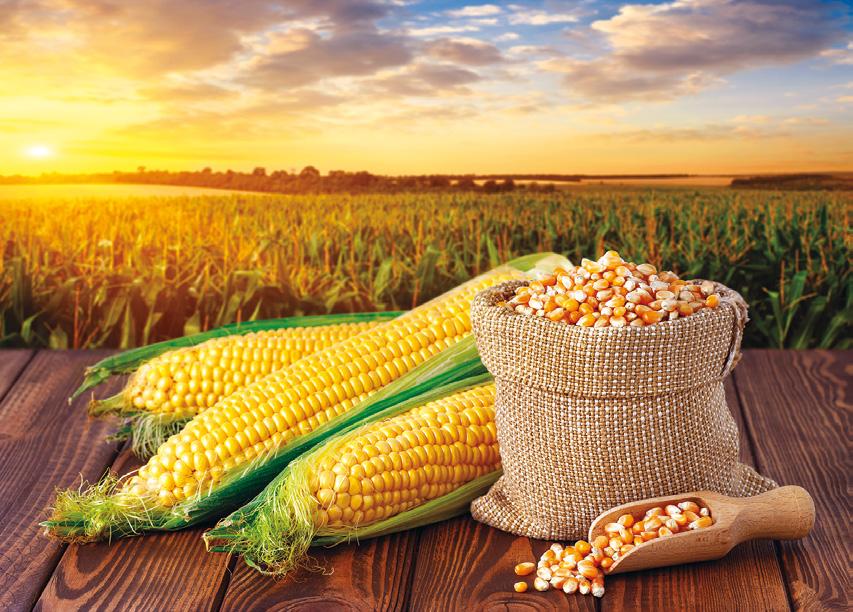
white maize flour segment dominated the market in 2021 due to its use for various dishes like cornbread and other baked items. As for the market size, the commercial segment has the highest maize flour market share with $18,541.3 million and is expected to dominate throughout the forecast period at a CAGR of 5.0%. For the distribution channel, hypermarkets/supermarkets would be the fastest growing segment over the forecast period, and, of region-wise, North America dominated the global market in 2021.

40 ˙ Spring issue 2023 Tecnica Molitoria International
Feed premix market trend
According to a research by Allied Market Research, the global feed premix market was valued at $5.1 billion in 2021, and it is projected to reach $11.4 billion by 2031, growing at a CAGR of 8.8% from 2022 to 2031.
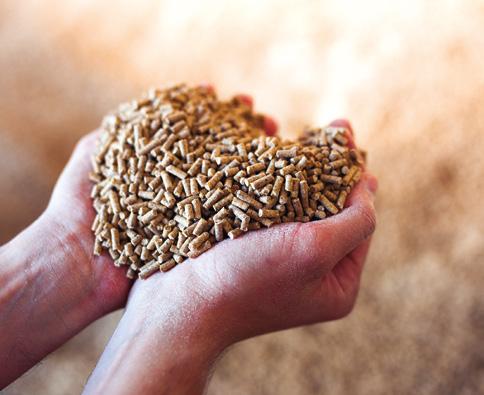
Premix is a mixture of feed additives or a mixture of one or more feed additives with feed materials or water employed as transporters, not intended for direct feeding to animals. Typically, this premix is added into the compound feed at a rate of 0.2 to 0.5%.
For the growth and development of farm animals, an increase in the demand for and consumption of livestock-based products such dairy and dairy-based products, meat, and eggs is anticipated to boost the use of feed additives. The FAO reports that by 2025, the world’s meat production is expected to increase by 16%. Due to its great demand, low production costs, and low product pricing in both, developed and emerging nations, poultry meat is the main factor driving the expansion of global meat production. According to statistics provided by the FAO, the output of chicken meat reached 120.5 million tons in 2017, compared to 118.7 million tons for swine, 70.8 million kilograms for cattle, and 14.9 million tons for ovine. There is a growing trend for animal-sourced protein in the form of meat, eggs, or milk because of the expanding understanding of the dynamics of food nutrients, particularly protein, on total physical and mental growth and development.
Due to the overuse or improper usage, antibiotic use decreased after the EU im-

posed its prohibition in several nations globally, particularly in China, India, and the U.S. companies were obliged to discontinue using antibiotics in feed premixes because of restrictions on the use of antibiotics as a growth booster in feed in many countries. This poses a significant obstacle for producers of feed premixes based on antibiotics.
In 2017, the combined demand from emerging economies in the Asia-Pacific and Latin America regions represented 47% of global consumption. According to the FAO report, “World Agriculture: Towards 2015/2030”, the population of developing nations in the Asia Pacific region, including India, China, Indonesia, Vietnam, and Thailand, is predicted to consume meat at a rate of 2.4% annually until 2030. To improve the meat weight and quality of the animals, the
marketing Tecnica Molitoria International Spring issue 2023 ˙ 41
demand for premium feed concentrates and premixes have boosted. To fulfill the rising demand for feed premixes, major players to start premix production facilities in these areas. Similar to this, Brazil had the greatest population of cattle in South America in 2017 with a headcount of 330 million, and the FAO anticipates that it will continue to increase faster than the average for the region. A high Feed Premix Market Demand is anticipated due to increased consumer awareness of nutrient-dense foods and the need for meat products of export quality.
The feed premix market is segmented into livestock, type, form, and region. Depending on livestock the market is divided into swine, ruminants, poultry, aquatic animals, and others. On the basis of type, the market is segregated into vitamins, minerals, amino acids, and antibiotics. On the basis of form, the market is bifurcated into organic and conventional. Region-wise, the market is analyzed across North America, Europe, Asia-Pacific, and LAMEA. North America accounted for more than 35% share of the total revenue in 2021, followed by Europe and Asia-Pacific.
Poultry
This segment dominated the global market in 2021: population expansion, urbanization, and rising wages in developing nations have been the main drivers of growing demand. Due to its widespread affordability, low-fat content, and lack of significant religious and cultural barriers, chicken dominates the Feed Premix Industry.
Type

In 2021, the vitamin segment established itself, having to act on vitamin deficiencies. Although just a tiny portion of dietary nutrients, such as vitamins, are necessary for normal physiological processes like growth, development, and reproduction as well as animal welfare and general health status, vitamins are vital micronutrients.
Form
The conventional segment had the major Feed Premix Market Size in 2021 and it is likely to be the fastest-growing segment during the Feed Premix Market Forecast year. Many governments, especially those in North America and Europe, are now concerned about feed safety. Consumers are becoming more knowledgeable and conscious of the external characteristics of the meat they eat. These elements have increased the value of organic feed among consumers globally. For instance, in 2017, Belgian and Dutch authorities discovered eggs contaminated with the insecticide, fipronil; problem with the quality of meat and eggs surfaced in Germany in August 2017; Aldi, a large grocery chain, removed eggs from its shelves after tests revealed the potential for insecticide contamination. In the same year, stores and warehouses in these nations had to recall millions of eggs, and other nations, including Slovakia and South Korea, prohibited the importation of pork from Germany in the same year. These occurrences have increased the need for wholesome, secure feed, including organic feed premix that gives
42 ˙ Spring issue 2023 Tecnica Molitoria International
animals a balanced diet and shields them from such dangerous threats. In addition to preserving the integrity of feed items, organic feed premix provides nutrients that increase livestock output. To protect animals from pesticide contamination, growers in this region are concentrating on manufacturing organic feed, which is expected to fuel the expansion of the global organic feed premix market.
Region
North America led in terms of Feed Premix Market Share in 2021 and is expected to retain its dominance during the forecast period. According to the International Health, Racquet & Sports Club Association (IHRSA), due to the growth of the U.S. health and fitness industry, the consumption of animal protein is likely to increase and is expected to grow at a faster rate during the forecast period. This is attributed to the rising number of U.S. consumers adopting a healthy lifestyle or indulg-

ing in activities that promote an active and healthy lifestyle. Presently, about 20% of U.S. adults have fitness club memberships, and the number is expected to increase in the future, boosting the demand for better feed premix in the process.
The study provides Porter’s five forces analysis to understand the impact of various factors such as competitive intensity of competitors, the bargaining power of suppliers, the threat of substitutes, the threat of new entrants, and the bargaining power of buyers of the Feed premix market.
The players operating in the global feed premix market have adopted various developmental strategies to increase their market share, gain profitability, and remain competitive in the market. Between them, DSM, BASF SE, Cargill, Incorporated, Nutreco N.V., InVivo Group, Jubilant Life Sciences, Koninklijke Coöperatie Agrifirm U.A., Phibro Animal Health Corporation, Archer Daniels Midland Company, Agrofeed, and Novus international.

marketing Tecnica Molitoria International Spring issue 2023 ˙ 43
cereals
Updates on the world cereal market

According to the latest bulletin from the US Department of Agriculture USDA, global production for 2022/23 is forecast higher this month on larger crops in Kazakhstan, Australia, and India. Global trade is forecast up with higher exports,

mainly from Kazakhstan, Australia, and Brazil, more than offsetting smaller exports for Argentina and India. Imports are forecast up mostly on higher demand from Kazakhstan, Saudi Arabia, and Azerbaijan. Global consumption is
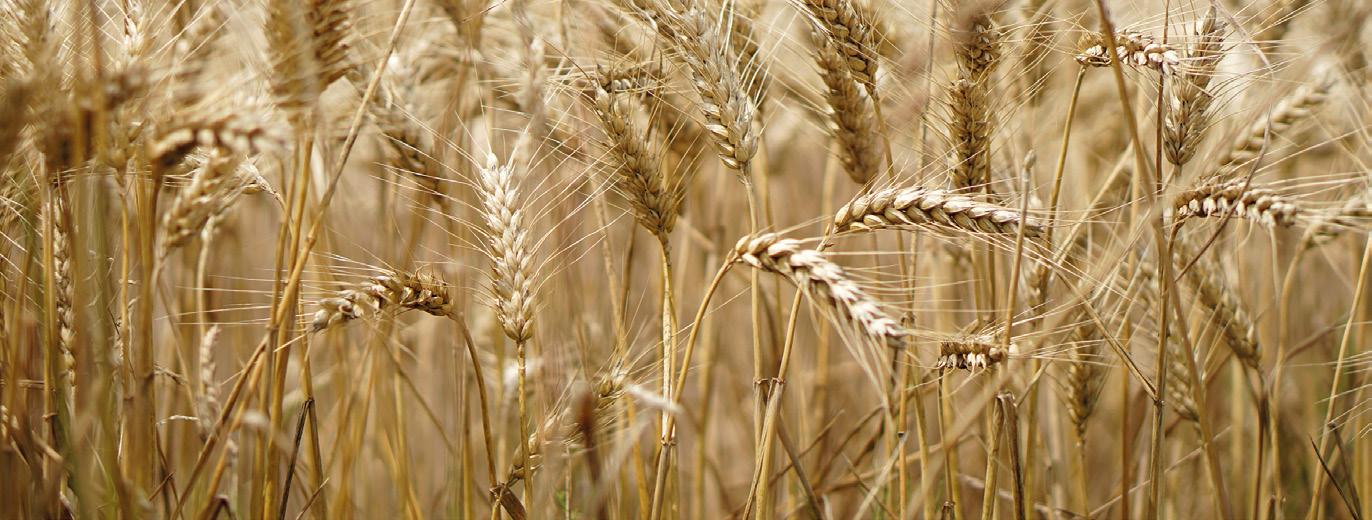
44 ˙ Spring issue 2023 Tecnica Molitoria International
raised with more consumption for food, seed, and industrial use in India and more feed and residual use in Kazakhstan.
Stocks are forecast lower, continuing a multi-year decline. The U.S. seasonaverage farm price remains at 9.00 $/ bushel.
Rice
For 2022/23 global rice production is up, due to a larger crop in India. Global consumption is forecast up, also mostly in India. Exports are projected higher, largely from India, and imports are up particularly for China, Nigeria, and Vietnam. U.S. rice exports are forecast at the lowest volume since 1985 due to loss of U.S. market share in key markets, includ-

ing Mexico and several other Western Hemisphere countries.
Global stocks are forecast higher, most notably in India as well as China.
Corn
For 2022/23 global corn production is forecast lower with a substantial cut to Argentina exceeding increases in India, Paraguay, and Turkey. Global trade is forecast lower as lower exports from Argentina and the United States are only partially offset by increased exports from Brazil, India, and Ukraine. Global imports are also forecast lower with cuts across a number of importing countries led by Iran, Malaysia, and Turkey. The U.S. season-average farm price is down 10 cents to 6.60 $/bushel.
FAO forecasts on cereal supplies in 2022/23
According to FAO, the benchmark index of international food commodity prices declined in January for the tenth consecutive month. The FAO Food Price Index averaged 131.2 points in January, 0.8% lower than the previous month and 17.9% below its peak reached in March 2022. The index tracks monthly changes in the international prices of commonly-traded food commodities. The price indices for vegetable oils, dairy and sugar drove the January decline, while those for cereals and meat remained stable.
In January, the FAO Cereal Price Index was unchanged (up a mere 0.1 percent) from December and stood 4.8% above its level of one year earlier. International wheat prices declined by 2.5% as production in Australia and the Russian Federation outpaced expectations. World maize prices rose marginally due to strong demand for exports from Brazil and concerns over dry conditions in Argentina. International rice prices, however, jumped by 6.2% from December, influenced by tighter availabilities, strong local demand in some Asian ex-
Tecnica Molitoria International Spring issue 2023 ˙ 45
cereals
porting countries and exchange rate movements.

The FAO Vegetable Oil Price Index declined by 2.9% in January. World prices of palm and soy oils dropped amid subdued global import demand, while those of sunflowerseed and rapeseed oils declined due to ample export availabilities.

The FAO Dairy Price Index averaged 1.4% lower than in December, with prices trending down for butter and milk powders on lighter demand from leading importers and increased supplies from New Zealand. World cheese prices rose, driven by a recovery in food services and retail sales in Western Europe following
the New Year holiday, as well as currency movements. The FAO Meat Price Index moved in January (edging down just 0.1% from December), as ample export availabilities weighed on poultry, pig and bovine meat prices, while ovine export prices rose due to stronger import demand. The FAO Sugar Price Index dropped by 1.1% from December. Strong harvest progress in Thailand and favourable weather conditions in Brazil outweighed the impact on prices due to concerns over lower crop yields in India, higher gasoline prices in Brazil, which support demand for ethanol, as well as the Brazilian real’s appreciation against the United States dollar.
46 ˙ Spring issue 2023 Tecnica Molitoria International
New purple and red rice varieties
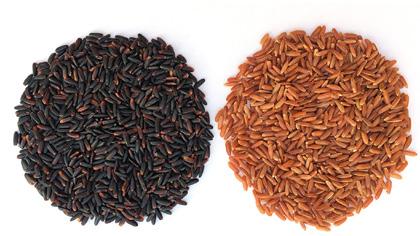
USDA’s Agricultural Research Service (ARS) releases newly-developed purple and red varieties of rice. In addition to being beautiful, the novel grains pack a nutritional punch, and offer farmers a distinct new opportunity. The latest addition is a purple variety, named USDA-Tiara. Anna McClung, research geneticist at the Dale Bumpers National Rice Research Center in Stuttgart, AR, developed the pigmented purple and red varieties to enable American farmers to enter an important market: “This is an opportunity for our domestic growers to have access to that market, which has greater economic potential than white milled rice”. With conventional rice, the bran, which contains most of the nutrients, is removed during the milling process. When the bran is removed, only the starch is left. In the pigmented bran varieties, McClung and her team found that, in addition to the basic nutrients that brown bran possesses (vitamin E, fiber, and other vitamins), there is additional nutritional value in the pigmented bran. The pigments purple and red are like those that you find in grapes and berries and dif-
ferent fruits and vegetables, and some of those compounds — tannins, flavonoids, and phenolics — have been shown to have antioxidant properties, which have a potential health-beneficial effect.

Originally from China, the purple rice made its way to Brazil via a scientist who recognized its potential, improved it through breeding, and ultimately brought it to McClung’s attention. Over the last 15 years, she has worked to breed an improved version of that strain from Brazil. It has since been released in the U.S. and commercialized; it is the parent of the new Tiara strain.
The Scarlett rice is the first red rice ever bred for commercial production in the United States, and, in the past, it was regarded as a weed. The geneticist has discovered that the weedy species had yield-enhancing genes and she identified several farmers willing to try growing the new varieties. Relative to conventional varieties, it was found that the flavor and aroma expression is more relevant.
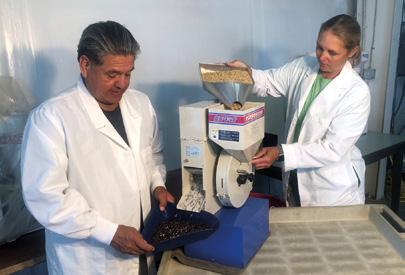
Tecnica Molitoria International Spring issue 2023 ˙ 47 cereals
New purple (left) and red (right) rice varieties developed by ARS.
Life sciences technicians Luis Coral (left) and Laduska Sells (right) shell USDA-Tiara purple rice.
To enhance wheat yield
Scientists from the Chinese Academy of Sciences and Peking University reported that gene editing of an APETALA2/ethylene responsive factor (AP2/ERF) transcription factor, DUO1, could lead to better wheat grain yield.


Wheat is one of the most important food crops worldwide. To help improve food production, it is vital to pinpoint new locations in the wheat genome that can help improve its yield. Thus, the researchers analyzed the key genes involved in spikelet number. They investigated Brachypodium distachyon spikelet mutant bdduo1, which has an increased number of spikelets per spike. They further clari-
fied the role of BdDUO1 in the regulation of spike shape in Brachypodium distachyon through a series of tests. Then, using CRISPR-Cas9, they edited the gene and came up with wheat plants exhibiting multiple spikelets in the lower middle part of the spikes. Furthermore, live imaging showed that there were more and larger cells in the basal spikelet primordia of the gene-edited wheat compared to the wild type which may imply that the gene is involved in regulating cell division. Field tests showed that the gene-edited wheat plants developed more grains per spike than the wild type, indicating an increase in yield per unit area.
48 ˙ Spring issue 2023 Tecnica Molitoria International
Europe’s first GE wheat trial produces less acrylamide
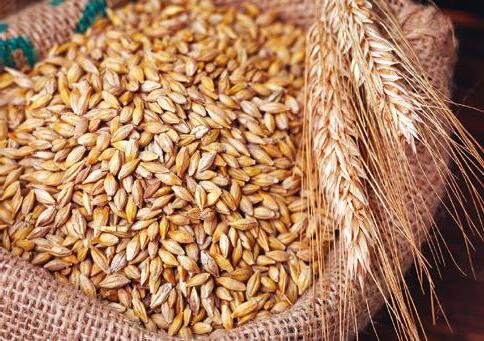
The results of Europe’s first ever field trial of a gene edited (GE) variety of wheat have shown a reduction of the potential carcinogen acrylamide when the flour is baked.
A study appeared on Plant Biotechnology Journal in which researchers at Rothamsted Research in the UK used a geneediting technology called CRISPR to “knock out” a gene in the wheat which they hoped would lower formation of asparagine. When cooked, this amino acid is converted to acrylamide – a potential carcinogen that food processors are keen to control.

Levels of asparagine (acrylamide’s precursor) in the GE wheat were up to 50% lower than the control variety Cadenza. Once ground into flour and cooked, the amounts of acrylamide formed were also reduced by up to 45%.
The field trail was an important step in determining whether the new GE wheat would be viable. Indoor trials under glass had proved successful, but only by planting out in experimental fields could the research team be sure that the new strain could deliver for farmers.
Prof. Nigel Halford, who led the research, says: “The study showed that gene editing to reduce asparagine concentration in the wheat grain works just as well in the field as under glass. This is important because the availability of low acrylamide wheat could enable food businesses to comply with evolving regulations on the presence of acryla -
mide in food without costly changes to production lines or reductions in product quality. It could also have a significant impact on dietary acrylamide intake for consumers”.
Regulatory framework could put brakes on GE in Europe
While Halford was bullish on the potential impact gene editing could have in helping the food sector develop health-
ier products, he warned that an uncertain regulatory environment could limit the development of the technology: “GE plants will only be developed for commercial use if the right regulatory framework is in place and breeders are confident that they will get a return on their investment in GE varieties”.
The results of the trial are timely as the Genetic Technology (Precision Breeding)
Tecnica Molitoria International Spring issue 2023 ˙ 49 cereals
Bill, which will make provision for the release and marketing of GE crops, is in the final stages of its passage through the UK Parliament. Some scientists suggest CRISPR represents an exciting development for the food industry that will become increasingly important to keep up with the changing environment, but regulation has limited the use of the technology in agriculture.
Both gene editing and genetic modification are banned by the EU, although Brussels is reviewing its stance on CRISPR crops.
CRISPR can be used as an advanced plant-breeding tool that facilitates crop breeding by making cuts at specific locations in a plant genome. Subsequent repair of the cut by the cell’s endogenous repair mechanism can introduce precise

changes. Unlike GMOs, no new genetic material is added.
The UK Department for Environment, Food and Rural Affairs believes gene editing techniques, such as CRISPR, have the potential to produce abundant, healthy food and to reduce the environmental impact of a growing global population. It further believes gene editing techniques, when used to breed crops that could have been developed using traditional methods, should not be regulated as GM crops. It complains that despite the differences between genome editing with CRISPR and GM, genome edited plants are currently treated in the same way as GM under EU regulations, essentially blocking the use of a technology that is gaining official approval in many other parts of the world.
Strengthening sorghum against a fungal threat
A gene discovered by a team of Agricultural Research Service (ARS) and Purdue University scientists could help fortify the defenses of sorghum to anthracnose, a disease of the cereal grain crop that can inflict yield losses of up to 50%. The study opens the door to breeding disease-resistant sorghum cultivars that are less reliant on fungicides to protect them, reducing growers’ production costs and safeguarding grain yields and quality, among other benefits.
Sorghum is the fifth-most widely grown cereal grain crop worldwide, providing consumers not only with a source of food
containing 12 essential nutrients, but also forage for livestock and material for bio-based energy. However, unchecked with fungicides or other measures, anthracnose will attack all parts of a susceptible cultivar, often forming reddish lesions on leaves and the stem as well as causing damage to the plant’s panicles and grain heads.
Genetic-based disease resistance is the most effective and sustainable approach to combating anthracnose in sorghum. However, how this resistance works in the plant is poorly understood, according to Matthew Helm, a research
50 ˙ Spring issue 2023 Tecnica Molitoria International
molecular biologist at ARS’s Crop Production and Pest Control Research Unit in West Lafayette, Indiana. That knowledge gap is worrisome because of the genetic variability among different races (or types) of the anthracnose fungus and their potential to overcome a cultivar’s resistance genes over time. Additionally, anthracnose resistance can be temperature-dependent, leaving a sorghum crop vulnerable to infection if temperatures soar above a certain threshold.
A team of Purdue University scientists have begun to close this gap. They identified a disease-resistance gene that orchestrates a series of defense responses to early infection by the anthracnose fungus, preventing its spread to the rest of the plant and grain heads.

Additionally, sorghum plants carrying the resistance gene, known as “ANTHRAC-

NOSE RESISTANCE GENE 2” (ARG2), successfully withstood the fungus even when greenhouse temperatures were increased to 38°C. This temperature stability could be a boon for sorghum production regions of the world where growing season temperatures can reach those levels.
The team also determined that ARG2 helps make (“encodes for”) a protein that is concentrated in the plasma membrane of resistant sorghum cells. There, it acts as a kind of intruder alert that’s triggered by certain proteins used by the anthracnose fungus to infect the plant. ARG2 and its protein don’t protect sorghum from all races of anthracnose. However, combining ARG2 with other similar genes could help broaden that protection—either through conventional plant breeding methods or biotechnological ones.
Tecnica Molitoria International Spring issue 2023 ˙ 51
cereals
Grain silage rehydrated with water or acid whey
A Brazilian study appeared on Semina: Ciencias Agrarias, aimed to evaluate the effects of rehydration with water or acid whey, as well as the effects of bacterial-enzymatic inoculant on fermentation losses, aerobic stability, and chemical composition and in vitro digestibility of corn grain silages.

The treatments consisted of corn kernels (Zea mays) ground through a 3-mm sieve and rehydrated with chlorine-free water or unsalted whey (NaCl) combined or not with bacterial-enzymatic inoculant. This was a 2x2 factorial randomized design with sources of rehydration (water or whey) and absence and presence of bacterial-enzymatic inoculant with eight replications. Water and acid whey were added to ground corn with 12% mois-
ture in order to increase it to 35%. Rehydrated corn was ensiled in Polyvinyl chloride (PVC) minisilos and stored for 60 d. The bacterial-enzymatic inoculant used was composed of Lactobacillus curvatus, L . acidophilus, L . plantarum, L . buchneri, L . lactis, Pediococcus acidilactici, Propionibacterium acidipropionici and Enterococcus faecium, in concentrations of 1,010 CFU g-1 and 5% cellulose-based enzyme complex. The aerobic exposure of silages was evaluated for 120 hours. There was interaction (P=0.02) between the sources of rehydration and the use or not of the inoculant on the values of silage temperature during aerobic exposure. There was a difference for dry matter (DM) losses (P=0.38) between rehydrated corn silages with and without inoculant. DM losses were 37.51% higher in silage without inoculant compared to silage with inoculant (3.84% DM). There was no difference between the sources of rehydration on DM losses (P=0.39), with a mean value of 4.99%. Corn rehydration using acid whey (P<0.01) increased 2.19 and 31.36% DM and ash content compared to water, an average of 66.14 and 1.28%. There was no interaction (P=0.30) between the sources of rehydration and the use of inoculants on the in vitro digestibility of DM (mean of 79.26%). The use of the bacterial-enzymatic inoculant improved the fermentation characteristics, aerobic stability and nutritional value of corn grain silage rehydrated with water or whey.
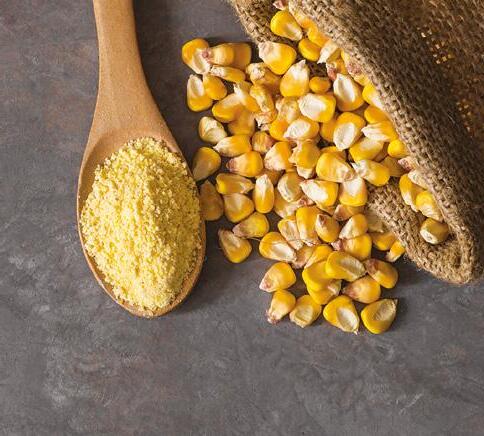
52 ˙ Spring issue 2023 Tecnica Molitoria International
We reciprocate everything... ...especially your confidence.





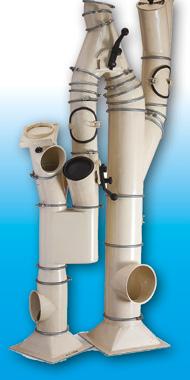


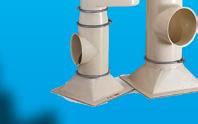




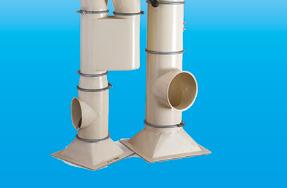














































































































































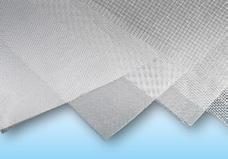





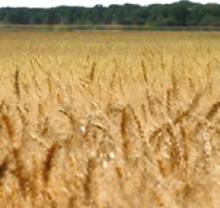
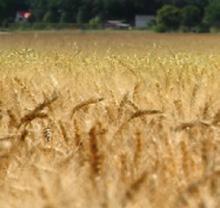
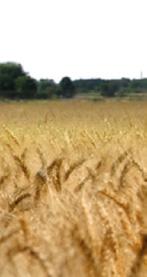


SAVIGLIANO (CN) • WWW.AGRINOVA.IT • INFO@AGRINOVA.IT • TEL. 0039 0172 71 54 88
ARTICLES & SPARE PARTS FOR MILLS, AGRICULTURE & INDUSTRIES
OFFICIAL DEALER
Preharvest and flour quality


Preharvest sprouting (PHSing) of wheat induces more heterogeneous germination in the field than in a controlled laboratory setting.
In a Korean research published on Cereal Chemistry, the impacts of field-weathering (FWing) /PHSing in soft wheats on resulting flour quality and baking performance, for soft wheat-based baked products, were explored for twelve soft wheat cultivars. FWing/PHSing in soft wheats affected test weight, break flour yield, falling number, alpha-amylase activity, and solvent retention capacity. Starch-pasting profiles for flour samples with different wheat harvest
times appeared to show four groups of behavior. However, the impacts of FWing/ PHSing in the wheats studied were negligible on the resulting baking performance of pancakes, cookies, and crackers, but were dramatic for Japanese-type sponge cake. Effects of FWing/PHSing in soft wheats on resulting wheat and flour quality, milling performance, and baking performance were confirmed.
The set of tested flours in the study, milled from field-weathered (FWed) /PH sprouted (Sed) soft wheat grains, exhibited four groups of behavior in starch-pasting profiles, which varied with wheat genotype.

54 ˙ Spring issue 2023 Tecnica Molitoria International
milling
Variability of carbohydrate composition and pasting properties of oat
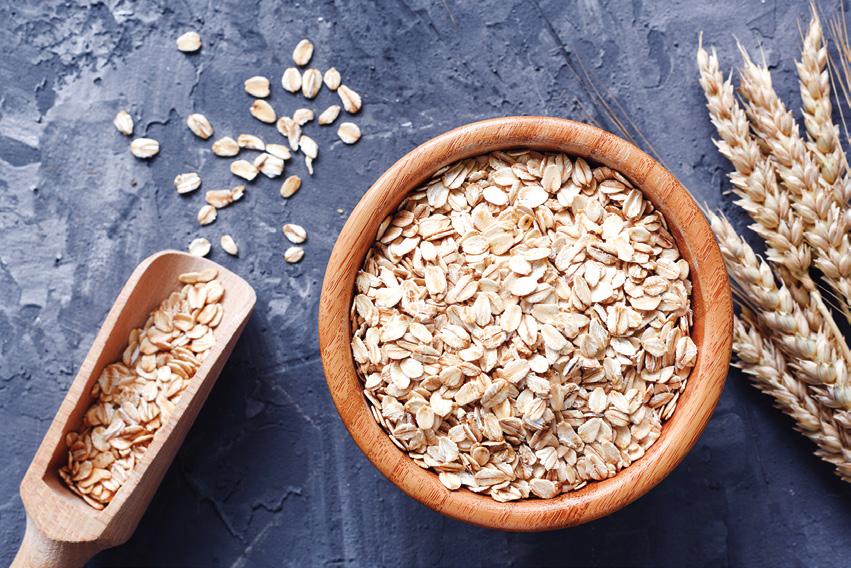

A Finnish study appeared on Food Chemistry characterised the starch and dietary fibre properties and their significance to the pasting characteristics of oat flakes and flours produced from 30 Finnish pure cultivar oats with or without the industrial scale milling process. Variation in carbohydrate characteristics was observed, the insoluble dietary fibre content of flours was 2.45.7 % and soluble dietary fibre was 4.98.0 %. The oat milling process induced a significant amount of starch dam -
age (p<0.05), a fourfold increase from 1 to 4% in average was observed. The pasting properties of both flakes and flours were interlinked (p<0.05) with the chemical composition of oats, i.e., high starch content of flours was connected to higher paste viscosity values. The milling process increased the peak, trough, setback, final and time to peak viscosities of oat flours.
The results show the significance of oat milling process, including kilning, to the carbohydrate quality of oats.
Tecnica Molitoria International Spring issue 2023 ˙ 55 milling
Increases iron and zinc concentrations in wheat flour
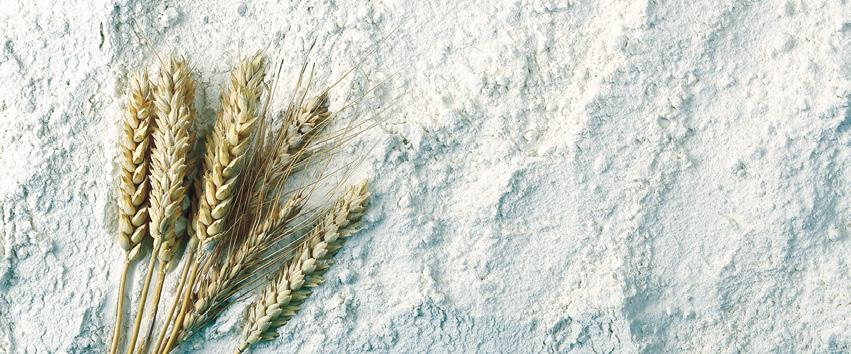

Dietary deficiencies of iron and zinc cause human malnutrition that can be mitigated by biofortified staple crops. Conventional breeding approaches to increase grain mineral concentrations in wheat (Triticum aestivum L.) have had only limited success, and the understanding of the genetic and physiological barriers to altering this trait is incomplete. In England, a study appeared on Plant Physiology was conducted, which demonstrated that a transgenic approach combining endosperm-specific expression of the wheat vacuolar iron transporter gene TaVIT2-D with constitutive expression of the rice (Oryza sativa) nicotianamine synthase gene OsNAS2 increases the total concentration of zinc and relocates iron to white-flour fractions. In two distinct bread wheat cultivars, we show that the so called VIT-NAS construct led to a twofold increase in zinc in wholemeal flour, to
~50μg g-1. Total iron was not increased, but redistribution within the grain resulted in a three-fold increase in iron in highly pure, roller-milled white flour, to ~25 μg g-1. Interestingly, expression of OsNAS2 partially restored iron translocation to the aleurone, which is iron depleted in grain overexpressing TaVIT2 alone. A greater than three-fold increase in the level of the natural plant metal chelator nicotianamine in the grain of VIT-NAS lines corresponded with improved iron and zinc bioaccessibility in white flour. The growth of VIT-NAS plants in the greenhouse was indistinguishable from untransformed controls. The results provide insights into mineral translocation and distribution in wheat grain and demonstrate that the individual and combined effects of the two transgenes can enhance the nutritional quality of wheat beyond what is possible by conventional breeding.
56 ˙ Spring issue 2023 Tecnica Molitoria International
Hydrothermal treatment parameters on oat grinding
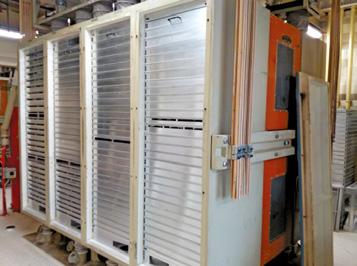


In a Finnish research on LWT - Food Science and Technology, the role of hydrothermal treatment (steaming and tempering) parameters on oat groat, flake, and flour properties was studied by us-


Three untreated oat groat cultivar samples with varying native groat hardness were studied. Among the studied factors, tempering temperature influenced both groat hardness and flour particle size in all samples. High temperature led to fragile groats and fine flours, while low temperature resulted in hard groats and coarse flours. The treatment parameters affected groat and flour properties in a similar way, but sample-specific
ing experimental design and response surface modelling approach. The modelled properties were oat groat hardness, oat flake hardness, and oat flour particle size milled from oat groats and oat flakes. In the design of experiments, the studied factors were moisture content, temperature, and duration of the hydrothermal treatment using the central composite face-centred design (CCF).
Tecnica Molitoria International Spring issue 2023 ˙ 57
milling
Via Tessara 9/11 35010 Curtarolo (PD) Italy Tel +39 049 557094 - cell. +39 3287753783 info@rambaldoantonio.com www.rambaldoantonio.com
RAMBALDO ANTONIO 2022.indd 15 22/09/22 16:38
NEW ALUMINIUM, POLYPROPYLENE OR STEEL FRAMES FOR ANY MODEL OF PLANSIFTER
differences remained in groat hardness and flour particle size after identical treatments. In the sample with the softest native groats, also the moisture content influenced groat hardness and flour particle size.
The results suggest that with a proper selection of the native groats and by adjusting the hydrothermal treatment parameters, the milling properties of oat could be optimised for specific uses.
Comparative study of separate and mixed fine grinding methods

In a Chinese study published on Food Science and Technology, the wheat millfeeds (bran, shorts, and germ) were ground separately and mixed with an ultrafine pulverizer, and the fine powders of 80, 100, 120, 160, and 200 mesh were obtained through the measurement and
adjustment of the laser particle size analyzer. The pulverizing ability of the two methods were compared, and the fine powders obtained by the two methods were added back to the wheat flour according to the original wheat milling proportion. The quality characteristics of recombined whole wheat flour obtained by two grinding methods were compared. The results showed that the shorts were easier ground than the bran and germ, and the temperature rise and energy consumption were lower. The moisture content decreased with the reduction of the ground particle size, the whiteness was increased, and the damaged starch content was increased. The water absorption of the obtained whole wheat flour was increasing, and the development time, stability time, quality index, and various extensigraph properties were decreasing. When the grinding particle size was 100 mesh, the whole wheat flour obtained by the separate grinding method had a longer stability time, higher quality index, and stronger extensigraph properties, which could be used to make whole wheat products better.

58 ˙ Spring issue 2023 Tecnica Molitoria International
QUALITY SYSTEMS FOR FLOUR AND GRANULAR PRODUCTS PROCESSING
• STORAGE SILOS
• EXTRACTORS FOR SILOS AND DISTRIBUTORS
• DOSING, MICRODOSING AND MIXING MACHINES
• GRINDING AND PRE-GRINDING MACHINES
• DUST ASPIRATION SYSTEMS WITH AUTOMATIC FILTERS
• CRUSHING MACHINES FOR SCRAPS
• SIEVING, SELECTION AND DISINFESTING MACHINES
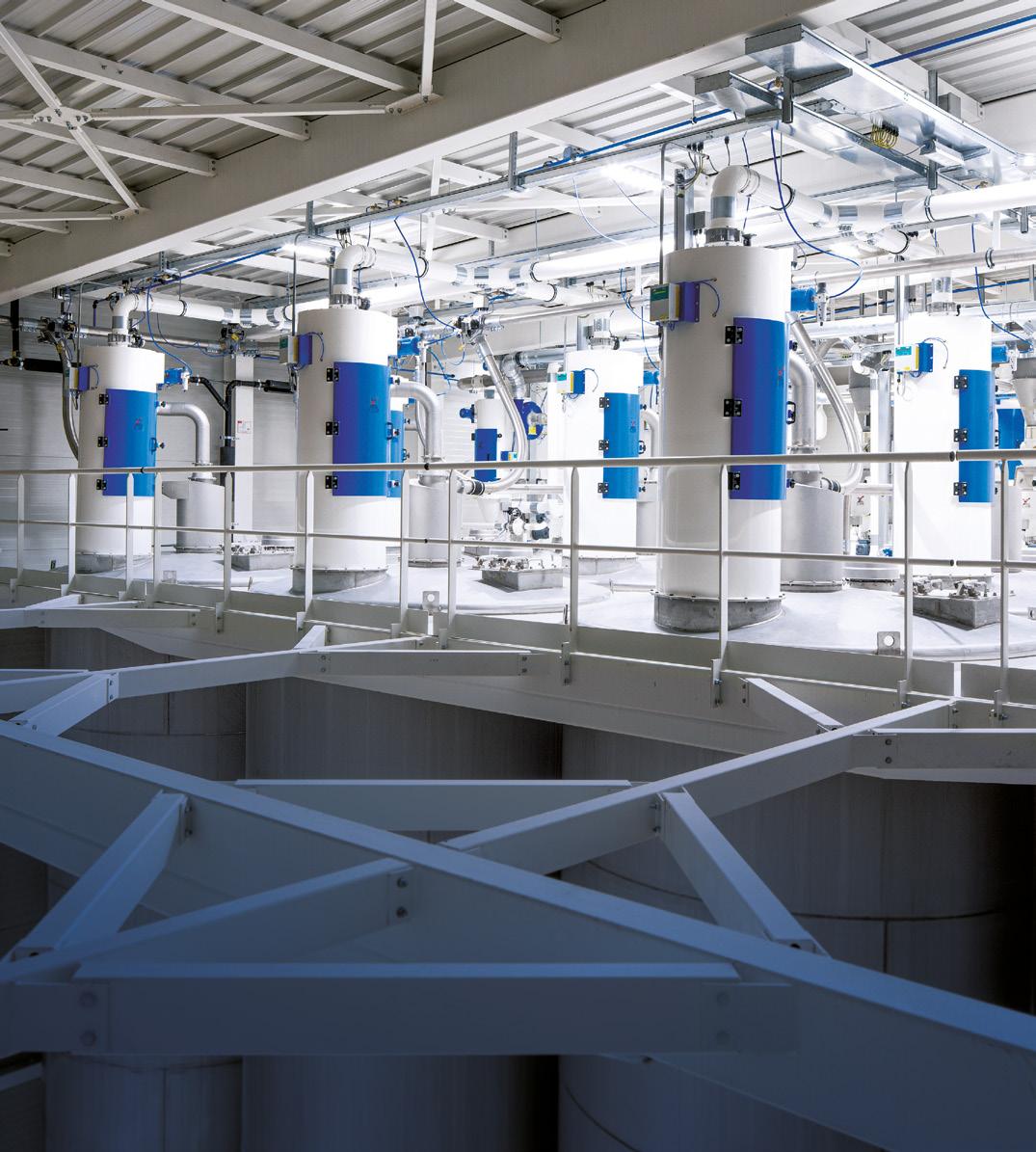
• PNEUMATIC CONVEYING SYSTEMS IN PRESSURE OR VACUUM
• MECHANICAL CONVEYING SYSTEMS BY SCREW, CHAIN, BELT CONVEYORS AND BUCKET ELEVATORS
Since 1948 we have been designing, manufacturing and installing customized, high quality systems and machines for pasta, feed, milling and chemical industries.
INNOVATIVE CONVEYING AND STORAGE TECHNOLOGIES CMB srl - Via Monte Pelmo, 8 - 35018 San Martino di Lupari (PD) IT Ph. +39 0424 780 176 - info@cmbsrl.it - www.cmbsrl.it cusinato.com
feedstuff
Polyphenols, isoflavonoids, and their metabolites in milk samples
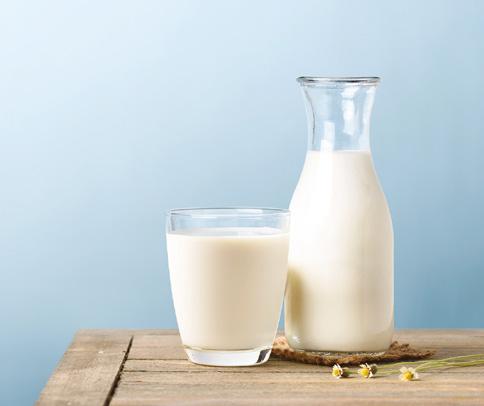

In a work made by the Department of Animal Science, Food and Nutrition of the Università Cattolica del Sacro Cuore of Piacenza, Italy, published on Dairy, milk samples collected in a cohort of intensive dairy farms of the Po Valley (Italy) were screened for their (poly)-phenolic profile to check the occurrence of phenolic metabolites of biological interest. The selected dairy farms were classified on the basis of their cow feeding system, considering the utilization of corn silage as
the main ingredient of the rations. Overall, high-pressure liquid chromatography coupled with mass spectrometry using an Orbitrap analyzer, followed by unsupervised and supervised statistics, allowed identifying clear different phenolic distributions in the milk samples. Accordingly, a great variability in the phenolic profiles of the different milk samples was observed, with two main phenolic clusters outlined by the unsupervised hierarchical clustering approach and not fully correlated to the nutritional strategy considered. The variables’ importance in the projection approach allowed selecting the most important metabolites, resulting in samples’ discrimination. Among the most discriminative compounds, they had been found phenolic metabolites (such as hippuric acid and 4-hydroxyhippuric acid), followed by lignans (such as enterolactone) and isoflavonoids (such as equol and O-desmethylangolensin). The results suggested that both the feeding systems and the ability of dairy cows to process parent phenolic compounds were the main factors providing the final (poly)-phenolic profile of the milk samples.

60 ˙ Spring issue 2023 Tecnica Molitoria International
Exhausted bergamot by-product for pigs
A study by the Dipartimento di Agricoltura, Alimentazione e Ambiente (Di3A)-Università di Catania appeared on Animals, in which an investigation was carried out on the effect in pig diet of supplementation with exhausted bergamot by-product, stemming from pharmaceutical industry after extraction of phenolic compounds, on growth performance and on the quality of meat and meat products. Twenty pigs were assigned to two dietary treatments and fed a conventional concentrate (control) or a concentrate including exhausted bergamot by-product at the level of 15% on a DM basis (EB). No differences between dietary treatments were found for
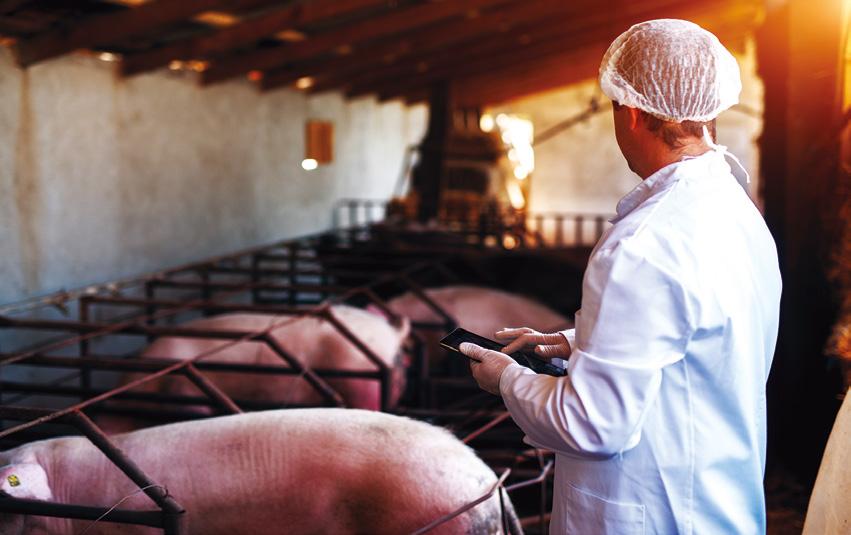
final weight (p=0.243), carcass weight (p=0.679), dry matter intake (p=0.321). In EB pork, the proportion of docosapentaenoic acid was increased (p<0.05); it tended to have a greater proportion of n-3 PUFA (p = 0.09), and the n-6/n-3 PUFA ratio was lower in EB treatment (p=0.01). In salami from EB pigs fed, the proportion of alpha-linolenic acid and the total n-3 PUFA were higher than in the control group (p<0.001). In salami, the TBARS value was lower after 5 days of storage (p<0.001) in the EB group. The results suggest that the inclusion of exhausted bergamot by-product in pig diet offers a qualitative improvement of meat and meat products.

Tecnica Molitoria International Spring issue 2023 ˙ 61 feedstuff
Protein sources for cattle diet
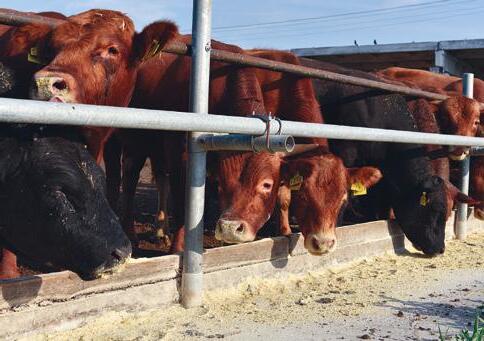

Replacing imported soybean meal (SBM) by protein sources such as grain legumes, food industry by-products or novel resource-efficient feeds is a current research focus to enhance the sustainability of ruminant production systems. In addition, grass silage replacing maize silage can contribute to dietary crude protein (CP) supply as well and complies with the natural diet of ruminants.
Animal Feed Science and Technology published an experiment with 30 Limousinsired beef bulls, performed with diets in which SBM was replaced by alternative protein sources when feeding a diet composed of, per kg dry matter (DM), 500 g grass silage, 300 g maize silage and 200 g concentrate. In the concentrate, SBM (control diet) was replaced by faba beans, pumpkin seed cake, or spirulina ( Arthrospira platensis) to result on average in 226 g CP/kg concentrate dry matter (DM). A fifth group served as negative control, which received a grain-based
concentrate with only 135 g CP/kg DM. Bulls were fed the experimental diets for the entire fattening period starting from an initial body weight (BW) of 164±2.3 kg and 4.3±0.06 months of age. At an average body weight (BW) of 275±5.6 kg and 7.4±0.17 months of age, each animal underwent a 9-day sampling period to determine individual N and energy intake and excretion (7 days of urine and faeces collection) as well as methane emission (2 days in respiration chambers). The diet had no effect on DM and nutrient intake. Apparent fibre digestibility was affected by diet, being numerically lowest with faba beans instead of SBM. Compared to the other groups, the bulls fed no additional protein had the lowest urinary N excretion (25.1 vs. 40.3g/bull/day; 366 vs. 460g/kg total faecal and urinary N). Digestive and metabolic energy utilisation were comparable among diets. Methane (CH4) production adjusted to body weight differed among groups, being numerically highest in bulls fed faba beans (547 vs. 513mg CH 4/kg BW/day in the other diets).
The results show that none of the tested protein sources, including SBM, was of benefit when feeding a diet containing 500g/kg DM grass silage complemented with maize silage and concentrate. Feeding such a diet seems to provide an adequate supply with metabolisable protein. Omitting the common protein supplementation therefore mitigated urinary N losses and thus likely N emissions from the manure at unchanged N and energy utilisation.
62 ˙ Spring issue 2023 Tecnica Molitoria International
Energy reduced diets for broiler
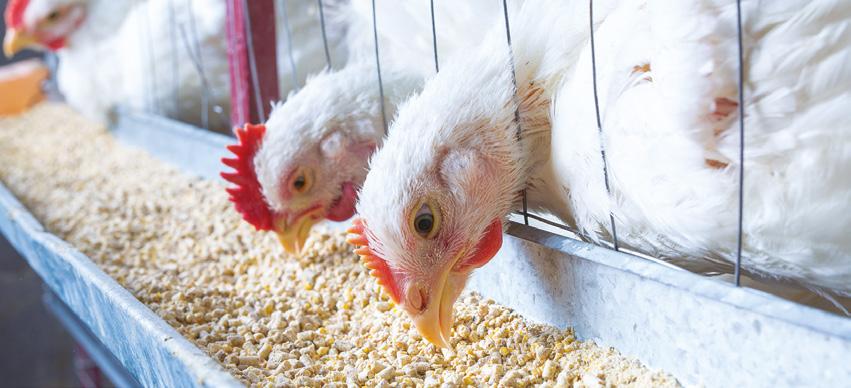

Protein sources obtained from co-products might provide an alternative to soybean meal (SBM), counteracting the dependency on other countries and increasing the sustainability. In an Austrian research that appeared on Journal of Applied Poultry Research, in an energy reduced broiler diet (-0.72 MJ AMEN), a mixture of DDGS, sunflower meal and rapeseed meal was applied as alternative fiber rich protein source (APS) to replace 100% of SBM. Furthermore, the diets were supplemented with 0.04% of a lignan-rich phytogenic component derived from bark to improve the performance. The experimental diets were fed to 3,600 broilers (Ross 308, mixed sex) from day 11 to 36 posthatch (grower and finisher phase). Overall, the broilers responded to APS diets with a increased daily feed intake and decreased body weight (P<0.05), which resulted in an impaired F: G ratio (P<00.05).
The apparent total tract digestibility of dry matter, organic matter, and gross energy with APS diets decreased. The replacement of SBM by APS resulted in higher gizzard weights (P<0.05), proventriculus weights (P<0.05) together with a decreased gizzard pH (P<0.05) and improved foot pad dermatitis score of broiler chickens (P<0.05). The results suggest that the replacement of soybean meal with alternative protein sources in energy reduced diets destined for broilers negatively affects performance and digestibility, however, improves food pad health and upper intestinal tract characteristics. The supplementation with a phytogenic component, decreased feed intake in finisher phase, however improved F: G ratio and increased the breast weight (P<0.05). Furthermore, it indicated a positive statistical interaction with APS diets regarding certain digestibility values (P<0.05).
Tecnica Molitoria International Spring issue 2023 ˙ 63 feedstuff
Feed supplementation with silage in pigs
In organic pig husbandry, the use of roughage is mandatory as dietary supplement.
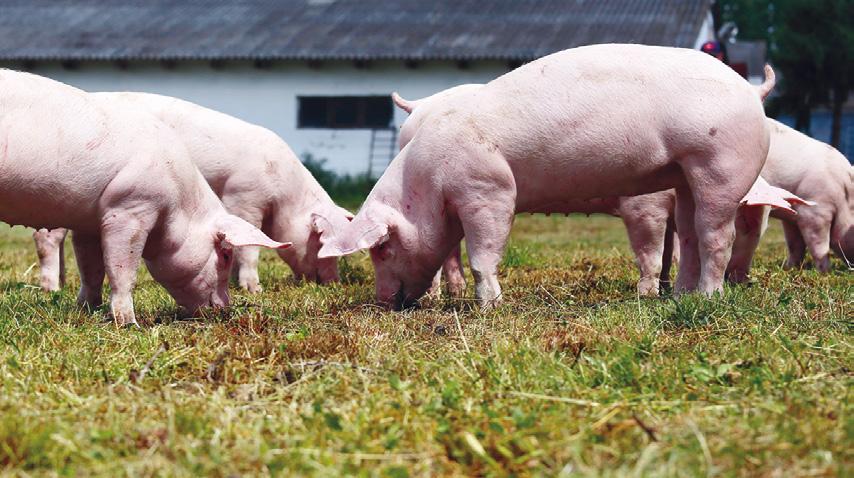
In a study appeared on Annals of Animal Science, Spanish researchers studied the effects of oat silage on the fatty acid composition, in entire males and gilts, as well as indole and skatole levels in perirenal adipose tissue of entire males. Entire males and gilts (forty-five to forty-eight pigs/sex) were assigned to two dietary roughage feeds (control with straw vs. oat silage). There was no effect of silage or sex on total SFA and MUFA in pork fat. However, the oat silage increased the total PUFA n-3 and decreased the PUFA n-6/n-3 ratio.

The content of boar taint compounds (skatole and indole) in the entire male pigs did not differ between diets, although human nose scoring rejected in a greater extent more pork fat from entire males supplemented with oat silage, compared with those only supplied with straw. Approximately 50% of the entire males (90 to 97 kg of carcass) had low skatole values (<=0.1 mµg/g), that were below the range of boar taint detection, regardless of the feeding regime.
These results indicate that more studies should be performed to avoid the problem of taint detection in entire males under organic production.
64 ˙ Spring issue 2023 Tecnica Molitoria International
Sustainable business models for insect-fed poultry production
During the last decade the potential of insects for human nutritional protein is increasingly recognised. Direct consumption of insects contributes to a reduction of the ecological footprint of human food production and is claimed
sociated with insect-derived protein for feeding poultry.
A Dutch research published on Journal of Insects as Food and Feed explores the insect-fed poultry production value chain through an interdisciplinary approach.
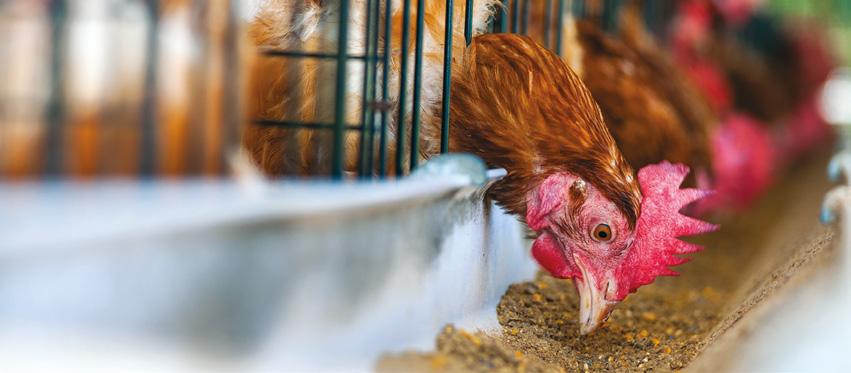

to have health benefits. An alternative is feeding poultry (broilers and layers) with insect-derived protein. This offers several additional advantages, e.g. a more extensive use of (new sources) of organic by-products of food industry for insect production. Implementation of a People-Planet-Profit (PPP) sustainable way of utilising these opportunities requires the development of sustainable business models. Such business models need to be based on the opportunities of insect-derived protein in feeding poultry but should also include the risks as-
First, the essential features of this value chain are described. Then, an inventory and classification is made of the main opportunities and risks of this value chain. Finally, the opportunity-risk trade-offs are discussed, as well as their implications for developing sustainable business models. For PPP-sustainable business models, management of the asymmetric tradeoffs between opportunities and risks related to possible contamination of organic by-products used as substrate for insect production should receive prime attention.
Tecnica Molitoria International Spring issue 2023 ˙ 65 feedstuff
pasta
Addition of high-amylose wheat
In a study by the Università Campus Bio-Medico of Rome, Italy, which appeared on International Journal of Food Science & Technology , pasta samples were produced by replacing durum wheat semolina with high-amylose bread wheat semolina-type flour in
proportions of 30%, 50% and 70%. Resistant starch content in uncooked pasta samples varied from 4.9% of total starch in high-amylose pasta with 30% substitution of semolina, to 15.3% of total starch in 100% high-amylose semolina pasta, achieving the lev -
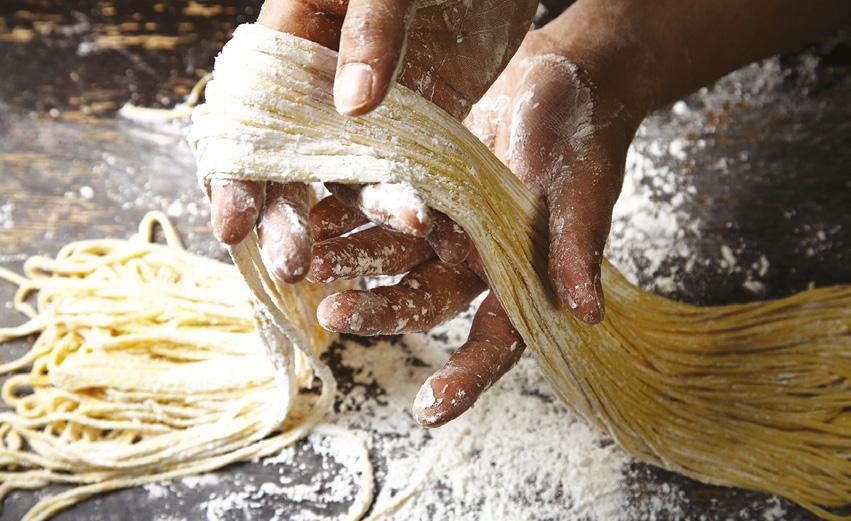
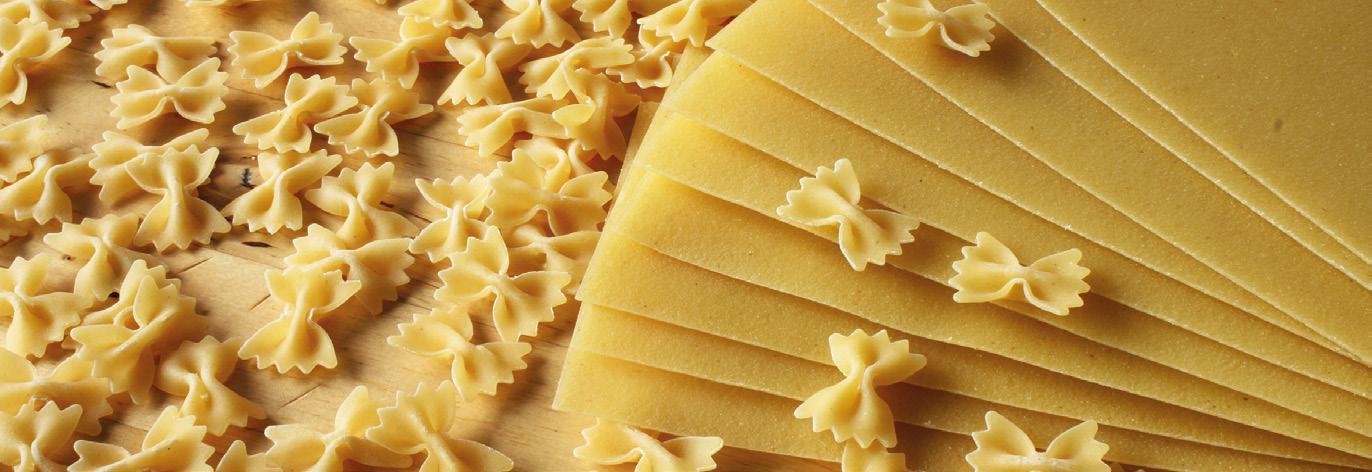

66 ˙ Spring issue 2023 Tecnica Molitoria International
els established for the health claim. The high amount of resistant starch in cooked pasta caused a reduction of starch digestion rate in all samples with high-amylose flour substitution compared to control. The expected glycaemic index lowered from 53.8 in control pasta (durum wheat semo -

lina) to 48 in 100% high-amylose pasta (bread wheat semolina). The inclusion of high-amylose flour in proportion of 70% combined the best cooking and nutritional properties, but it is expectable a further improvement in pasta quality with the adoption of tailored processing protocols.
Raspberry powder as a functional ingredient
Raspberry powder consists mainly of raspberry peels and seeds, rich in polyphenols and fibres. The recovery of this waste by drying and fine grinding gives a powder suitable for many applications.

A study by the Dipartimento per la Innovazione nei Sistemi Biologici, Agroalimentari e Forestali-Università della Tuscia, published on International Journal of Food Science & Technology, is aimed to assess the technical quality, functional properties, and consumer acceptability of five pasta samples produced by replacing durum wheat semolina ( Triticum durum) with 3.70, 5.61, 7.69, 9.88, and 12.00% raspberry powder. The control sample was 100% hard semolina pasta.
The cooked pasta (RP) with 7.69% raspberry powder replacement showed higher acceptability values, a slight decrease in hardness, compactness, and time of optimal cooking (OCT) than the control semolina pasta (CP). Furthermore, the “half of the maximum
inhibitory concentration” (IC50), evaluated through the 2,2-diphenyl-1-picrylhydrazyl (DPPH) and 2,2’-Azino-bis (3-ethylbenzothiazoline-6-sulphonic) acid (ABTS) tests, showed an increase of about twice the antioxidant activity compared to the semolina paste, both before and after cooking.
Tecnica Molitoria International Spring issue 2023 ˙ 67 pasta
Rapid detection of
common wheat flour addition to durum wheat flour
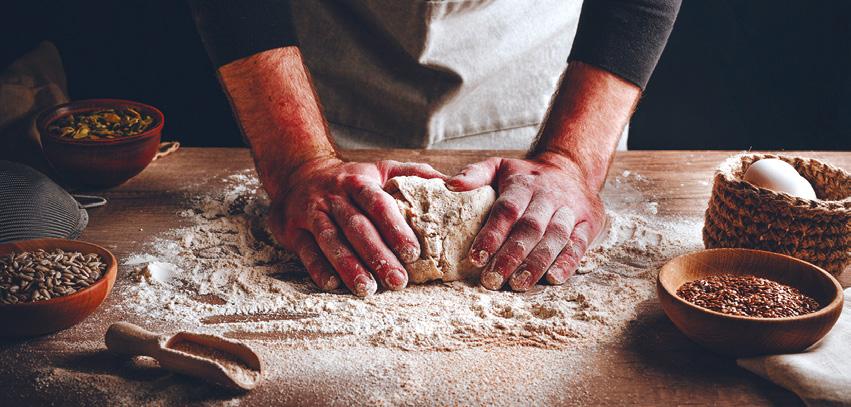
Attenuated total reflectance Fouriertransform infrared spectroscopy (ATRFTIRS), near-infrared spectroscopy (NIRS), and synchronous fluorescence spectroscopy (SFS) combined with chemometrics, were used in a Turkish study,
of determination (R 2) values of the prediction curves for ATR-FTIRS were found as 0.900 and 0.903 for flour and pasta samples. Similarly, R 2 for the prediction of NIRS was 0.867 and 0.895 for flour and pasta samples. Since, NIR spectros-
published on Journal of Cereal Science, to determine common wheat (Triticum aestivum) flour in durum wheat (Triticum durum) flour and common wheat farina addition to durum wheat pasta. The main objective was to determine the most suitable spectroscopic methods to predict adulteration level in flour and pasta. It was found that among the spectroscopic methods tested, ATR-FTIRS had the lowest limit of detection (LOD) values for blended flour (0.68%) and pasta samples (0.49%). The coefficients
copy is used in food industry for quality control, it might have a good potential to detect the adulteration of common wheat flour in durum wheat flour and farina in the durum wheat pasta. SFS demonstrated a weaker predictive ability for low levels of adulteration with its higher root mean square error of prediction (10.750).
The study demonstrated that ATR-FTIRS had better specificity and accuracy compared to other spectroscopic methods for the detection of adulteration.

68 ˙ Spring issue 2023 Tecnica Molitoria International
Spirulina enriched gluten free protein maize (QPM) pasta
The gluten-free Quality Protein Maize (QPM) and pasta made from such grains would have far-reaching implications for achieving nutritional stability. The aim of an Indian study appeared on Emirates Journal of Food and Agriculture was to check whether QPM combined with legume flours could be used to make gluten-free pasta (pasta without gluten protein). Furthermore, the effect of adding legume flours and spirulina to QPM pasta (2, 4, 6, 8 and 10%) on color, appearance, cooking, physical, nutritional and sensory quality was examined. The best-accepted combination of QPM (QPM flour 60%, black gram flour 30%, defatted soy flour 8%, and guar gum 2%-Q) and QPM pasta enriched
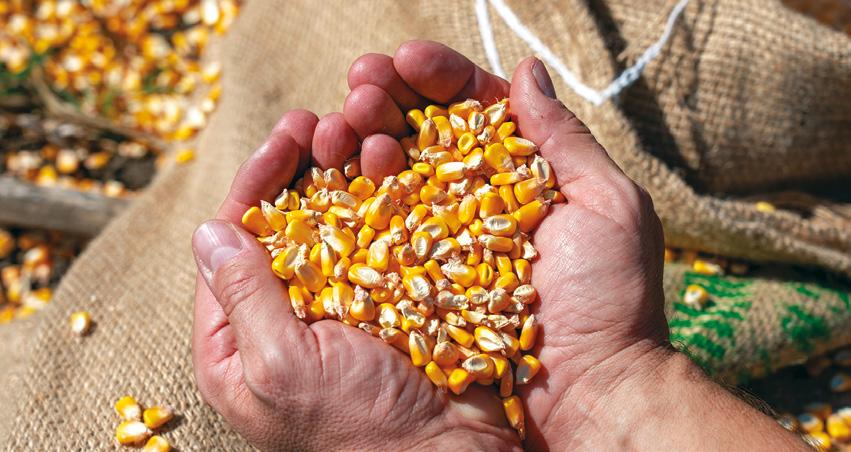
with spirulina (QPM flour 60%, black gram flour 30%, Spirulina 6%, defatted soy flour 2% and guar gum 2%-S) were compared to the control (100% whole wheat flour-C). The functional and cooking parameters such as bulk density (0.54 kg/m3), swelling index (1.3 g/g), and cooked weight (11.0 g) of the spirulina pasta were higher with a cooking loss of 7.6%. The nutrients such as protein (21.6%), calcium (44 mg%), iron (8.6 mg%), lysine (3.1 g/100 g protein), and tryptophan (0.81 g/100 g protein) were reported in the dietary composition of QPM pasta enriched with 6% spirulina (S). Further addition of spirulina resulted in 16-fold increase in the carotenoid content.

Tecnica Molitoria International Spring issue 2023 ˙ 69 pasta
Optimization of pasta supplemented with tef and chickpea flours
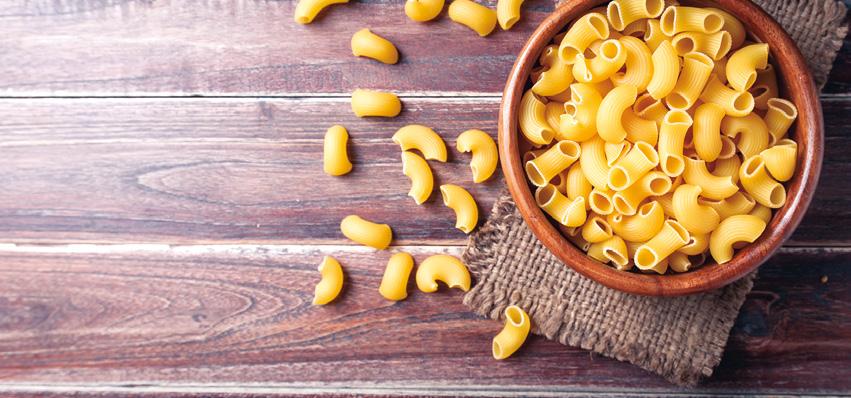

Durum wheat semolina is the preferable ingredient for pasta products, but it has low protein quality, micronutrient and fiber composition.
In a study conducted in Ethiopia and published on International Journal of Food Properties, response surface methodology was applied to optimally formulate a pasta by supplementing durum wheat semolina with tef (0 to 40%) and chickpea (0 to 15%) flours. The aim was improving the nutritional quality of the product while maintaining the cooking quality. Supplementing the durum wheat semolina (S) with tef (T) and chickpea (C) flours improved the Water Absorption Capacity and Index (WAC and WAI) (p<.05). Among the 11 flour blending ratios of S:T:C, ([60: 40: 0%], [85: 0: 15%], [60: 25: 15%], and [68: 28: 4%]) improved the WAC and WAI
of the semolina flour by 36, 8, 25, 7, 32, 9, and 31, 3%. With the same blending ratios, the cooking weight and the WAC of the control macaroni increased by 15, 15, 10, 19, 17, 18, and 22, 23% (p<.05). Interestingly, these blending ratios reduced the wet gluten content of the semolina by 58, 28, 53, and 42% (p<.05). With higher tef and chickpea incorporation, the pasta had lower and higher firmness. The macaroni prepared with incorporation of chickpea 3.5-15% appeared to have better color and comparable overall acceptability score with control.
The optimum formulation of pasta for desirable sensorial and cooking quality (better firmness, lower stickiness and cooking loss) was 73.46 g/100 g semolina, 11.55 g/100 g tef flour, and 14.25 g/100 g chickpea flour.
70 ˙ Spring issue 2023 Tecnica Molitoria International
Gluten-free pasta enriched with protein



The objective of an American work appeared on Journal of Culinary Science & Technology was to optimize the formulation of a protein enriched gluten-free pasta. A mixture design of experiments (MDOE), using isolated protein from pea (PPI) and fava (FPI) as the protein sources, was used to optimize the pasta formulation. Formulations were tested for extrusion feasibility, optimal cooking time, cooking loss, swelling index, color, and hardness. Two optimized protein ratios, 30:70 and 43:57 PPI:FPI, resulted from the MDOE analysis. The optimized formulations were compared to semolina pasta for the same properties. Hedonic sensory evaluation of the optimized formulations, semolina, and whole wheat pastas was conducted: glutenous pastas showed higher liking scores. The results shows that, by using PPI, FPI and MDOE, it is feasible to formu-






















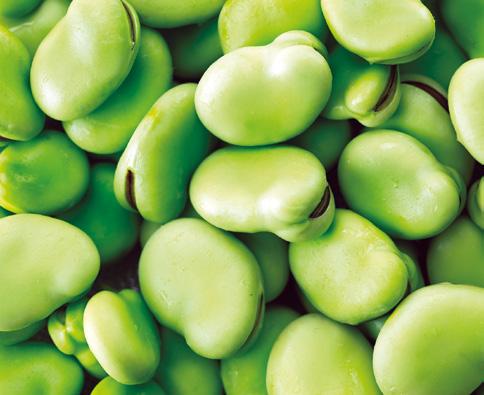

late protein enriched gluten-free pasta, while further optimization is needed to fully mimic their regular glutenous counterparts.






























Tecnica Molitoria International Spring issue 2023 ˙ 71 pasta
shop.chiriottieditori.it RIEMPITIVO LIBRI 2023_TM.indd 2 02/02/23 10:35
bread
Sodium chloride substitution with Salicornia ramosissima powder
Sodium chloride is known to influence several technological and sensory characteristics of bread, but the high dietary daily intake of sodium, however, raises concern because of serious health implications.
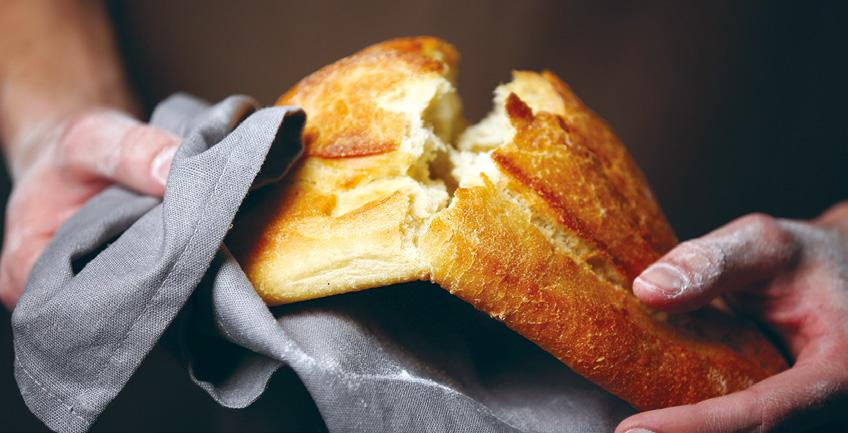

In a study by the Dipartimento di Scienze dell’Agricoltura-Università di Sassari, published on Journal of Functional Foods, response surface methodology was used to optimize the extent of sodium
chloride reduction (0.6-1.2-1.8%) and its replacement with Salicornia ramosissima powder (0-50-100%), to achieve the best low-sodium wheat bread, while meeting dough quality standards. Mixing, viscoelastic, extensional, and fermentation properties of doughs, as well as specific volume, textural, and color features of breads, were evaluated as response variables. After applying optimization criteria via desirability function, results

72 ˙ Spring issue 2023 Tecnica Molitoria International
evidenced that, using 1.8% salt with a substitution ratio of 65.24%, is the best combination to obtain both doughs with longer development times, high stability, better viscoelastic properties and similar
fermentation capacity, and breads with higher specific volumes, softer and less chewy crumbs, but higher green tones, than those containing only sodium chloride.

Properties and in vitro digestibility of a bread enriched with lentil flour
An article by the Dipartimento di Agricoltura-Università di Napoli appeared on Food Structure, regarding the effects of three leavening times (60, 105 and 150 min) on structure and some physico-chemical and nutritional properties of bread added with 20% of green lentil flour were investigated. Leavening time affected bread physicochemical properties, leading to a reduction in moisture content, an increase in weight loss and a darker appearance of bread crumb as leavening time increased. Besides, crumb of bread leavened for the longest time (B150) showed a compact structure and the highest resistance to the compression, while the Young’s modulus increased with the rising of leavening time. By contrast, breads leavened for shorter times (B60 and B105) had a more porous structure with more circular bubbles compared to B150, exhibiting lower deformation resistance. Different bread macrostructure had an impact on the in vitro protein and starch digestibility. The alpha amino nitrogen release and the estimated Glycemic Index (eGI) at the end of digestion reached the lowest values in bread leavened for the longest time (B150).
In particular, eGI showed a linear correlation both with the Young’s modulus (R 2 =-0.926) and macrostructural properties (R 2 =0.902), suggesting that modelling bread structure by acting on leavening time can be a novel approach to develop healthier products.

bread Tecnica Molitoria International Spring issue 2023 ˙ 73
Addition of wheat bran
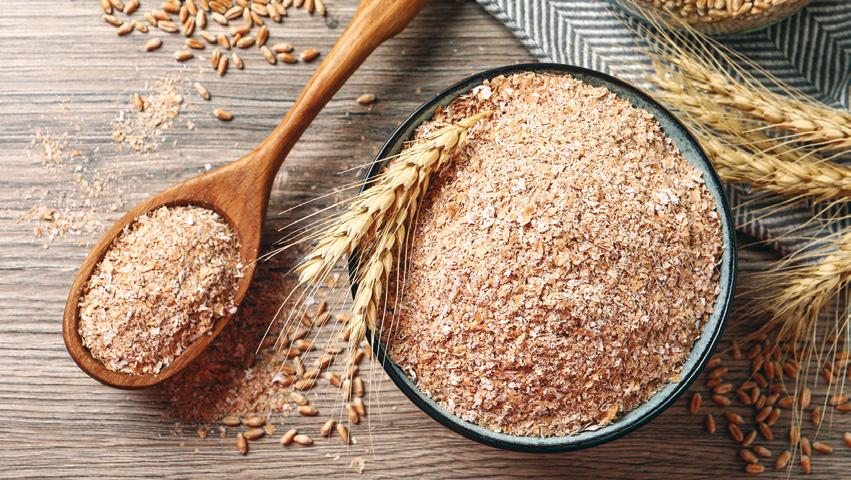
The functional and nutritional properties of bread could be improved by incorporating wheat bran. However, there are disadvantages technological, sensory and rheological associated with the use of wheat bran directly in bread processing. To eliminate these problems, wheat bran can be subjected to different pretreatments.
The aim of a Turkish research published on Journal of Cereal Science was to apply hydrothermal treatment to the wheat bran at different temperatures and investigate the effect of the hydrolysates of the pretreated wheat bran on the rheological properties of dough. The hydrothermal treatment process was applied at 130°/160°C for 30 min. The amounts of reducing sugar, fur -
fural, acetic acid and phenolic substances in the hydrolysate increased with the increase of the hydrolysis temperatures. It was determined that the addition of the hydrolysate obtained at 150°C to dough had a positive effect on its rheological properties.
It reduced the dough development time and increased the water holding capacity. However, some drawbacks started to occur in the dough’s rheological properties with the use of the hydrolysates obtained at higher than 150°C.
The results showed that hydrothermal treatment had the advantage of eliminating the technological and rheological problems caused by the direct addition of wheat bran.

74 ˙ Spring issue 2023 Tecnica Molitoria International
Bran particle size on rheology properties and baking quality of whole wheat flour
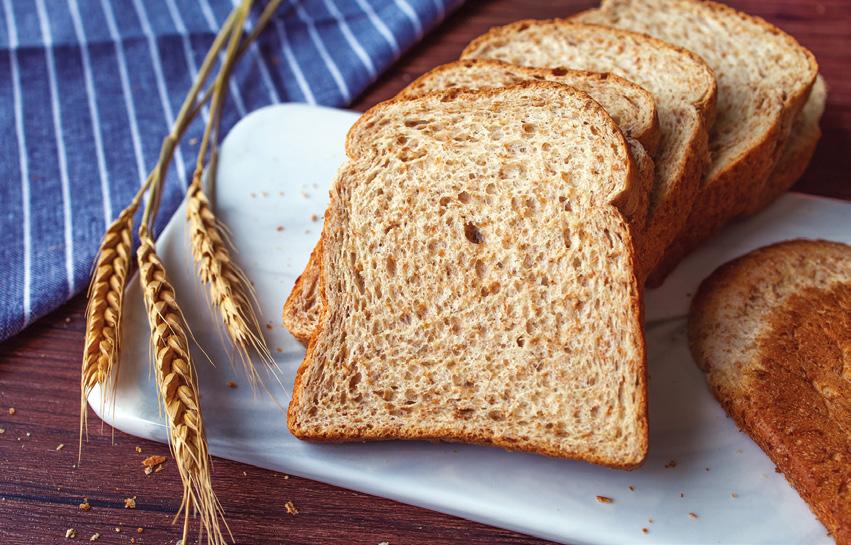

In an American study published on LWTFood Science and Technology the effect of bran particle size on whole wheat flour (WWF) bread-making performance was investigated using four different varieties with protein levels of 9-15 g/100 g. Five different bran particle size ranges from 590.5 to 159.7 mµm were obtained using various milling methods. Mixolab tests revealed that white flour had a lower water absorption (56.2-59.2 g/100 g) than the corresponding whole wheat flours (63.2-67.0 g/100 g). Larger specific loaf volume was observed for white bread
with a higher flour protein content, but this was not always associated with the trend for the WWF. For most wheat varieties, the bread from WWF with the fine bran had the lowest specific loaf volume, darker crumb color, and larger hardness value than bread made with white flour or with WWF of other particle sizes. Overall, WWF with medium to coarse bran size was more suitable for bread production. The findings contribute to the standardization of whole flour bran particle sizes for quality assessment and effective industrial production.
bread Tecnica Molitoria International Spring issue 2023 ˙ 75
X-Ray microtomography of a white bread from plasma functionalized flour
Cold plasma (CP) technology has emerged as a novel non-thermal technology with the potential to improve food quality or impart functionality to ingredients. The previous studies on wheat flour demonstrated how the structure and functionality of wheat flour might be modified using CP to provide an alternative to chemical additives (Chaple et al ., 2020). However, understanding of the further effects of plasma functionalized ingredients in existing or new product formulation is limited.

In a study published on LWT - Food Science and Technology , Irish researchers investigated the effects of CP treatment of wheat flour on traditional white pan bread development. The bread was formulated using plasma functionalized flour (PFF), and critical product characteristic responses were analyzed. Plasma treatment of flour positively affected the bread expansion ratio, crust color, and water activity. Farinograph analysis suggests improvement in water absorption capacity, dough development time, and dough stability.
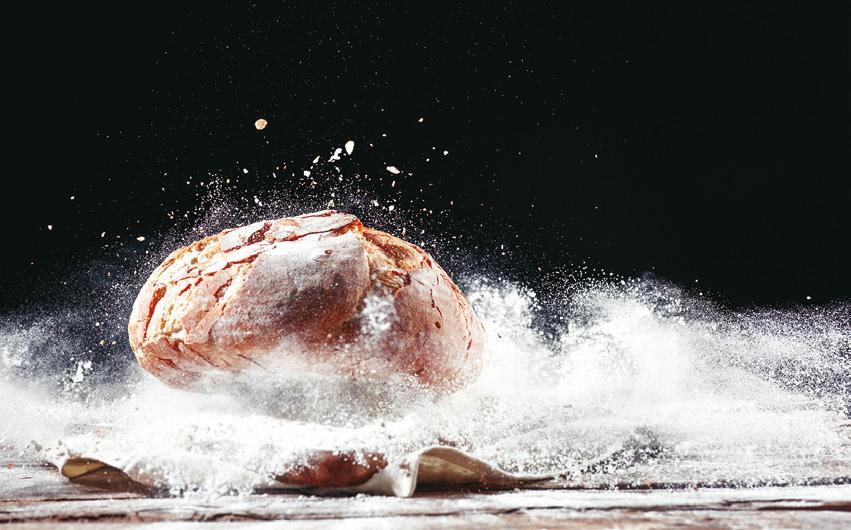
76 ˙ Spring issue 2023 Tecnica Molitoria International
X-Ray Microtomography (XRMT) analysis was conducted to understand how plasma functionalising the flour impacted the microstructure of bread. The 3D scans suggested no macro-change in the bread matrix compared to control; however, the porosity decreased in line with the increasing plasma treatment duration of the flour.
The texture profile analysis showed an improvement in the gluten network developed in the dough developed from
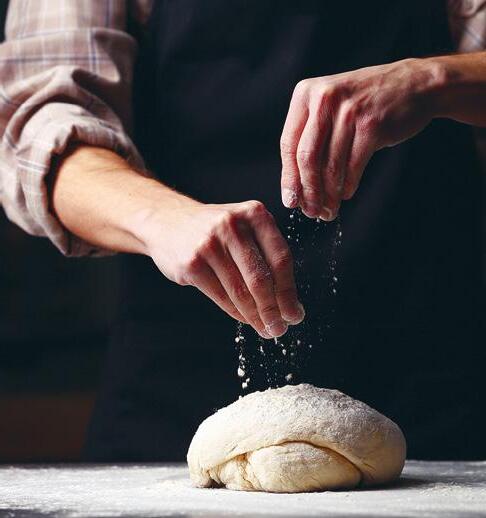

PFF. Sensory analysis results showed overall acceptance for bread formulated with PFF compared with a commercial sample.
Overall, CP treatment of the flour improved the functionality in relation to dough and bread preparation and can thus provide an alternative to chemical additives in bread making. The CP processes may be modulated to deliver tailored effects for bread product development.
Effect of wheat and barley malt addition
Wheat grain obtained from agricultural overproduction is stored for along time ingrain warehouses, which reduces its baking value.
The aim of a Polish study, appeared on Polish Journal of Food and Nutrition Sciences, was to use barley and wheat malt flours as additives to flours obtained from grain of different wheat varieties stored for 12 months under optimal conditions, to improve their baking properties. The addition of barley malt flour at a mean rate of 0.5% or wheat malt flour at a mean rate of 0.7% reduced the time needed for the wheat gel to reach its maximum viscosity by 67.2%, compared to the control sample (without malt flour added). Bread made of flour blends with malt flours added was characterised by a higher loaf volume and specific volume as well as darker crust and crumb. The addition of malt flours also led to reduced hardness, gumminess, and chewiness of bread crumb.
The study demonstrated that it is possible to use long-stored wheat grains for bread making, applying wheat malt flour or barley malt flour as enhancers.
bread Tecnica Molitoria International Spring issue 2023 ˙ 77
Gluten composition and baking quality of wheat
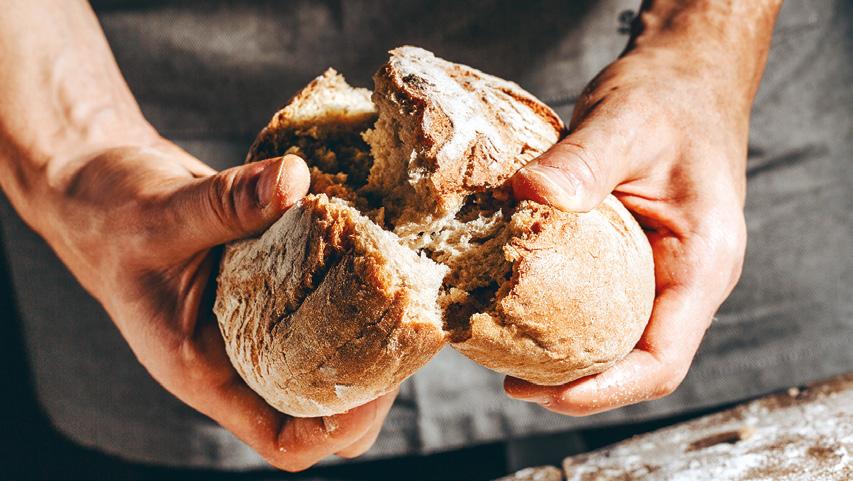

Protein and gluten content and composition are important for the baking quality of wheat flours. The aim of a German study published on Cereal Chemistry was to provide a comprehensive characterization of 82 wheat flours to analyze the influence of protein composition on rheological and baking quality parameters. Protein composition, starch gelatinization behavior, as well as rheological (microfarinograph, gluten aggregation, extensibility), and baking parameters were determined. The correlation matrix showed no correlations between gluten composition and loaf volume. Parameters of the gluten aggregation test allowed a prediction of
gluten, gliadin, and glutenin content with an absolute root mean square error of cross validation of 7.5, 6.0, and 3.2 mg/g, using partial least squares regression. Starch gelatinization temperature had an effect on gluten aggregation. The gluten aggregation test was suitable to predict gluten, gliadin, and glutenin content. The lack of correlations between protein composition and loaf volume indicates that baking quality is the result of a complex combination of different parameters. The results show that flour blends can reach excellent baking quality even if quality indicators like crude protein or extensibility are low.
78 ˙ Spring issue 2023 Tecnica Molitoria International
JW SERIES BUCKET ELEVATORS WITH INTEGRATED CLEANING SYSTEM
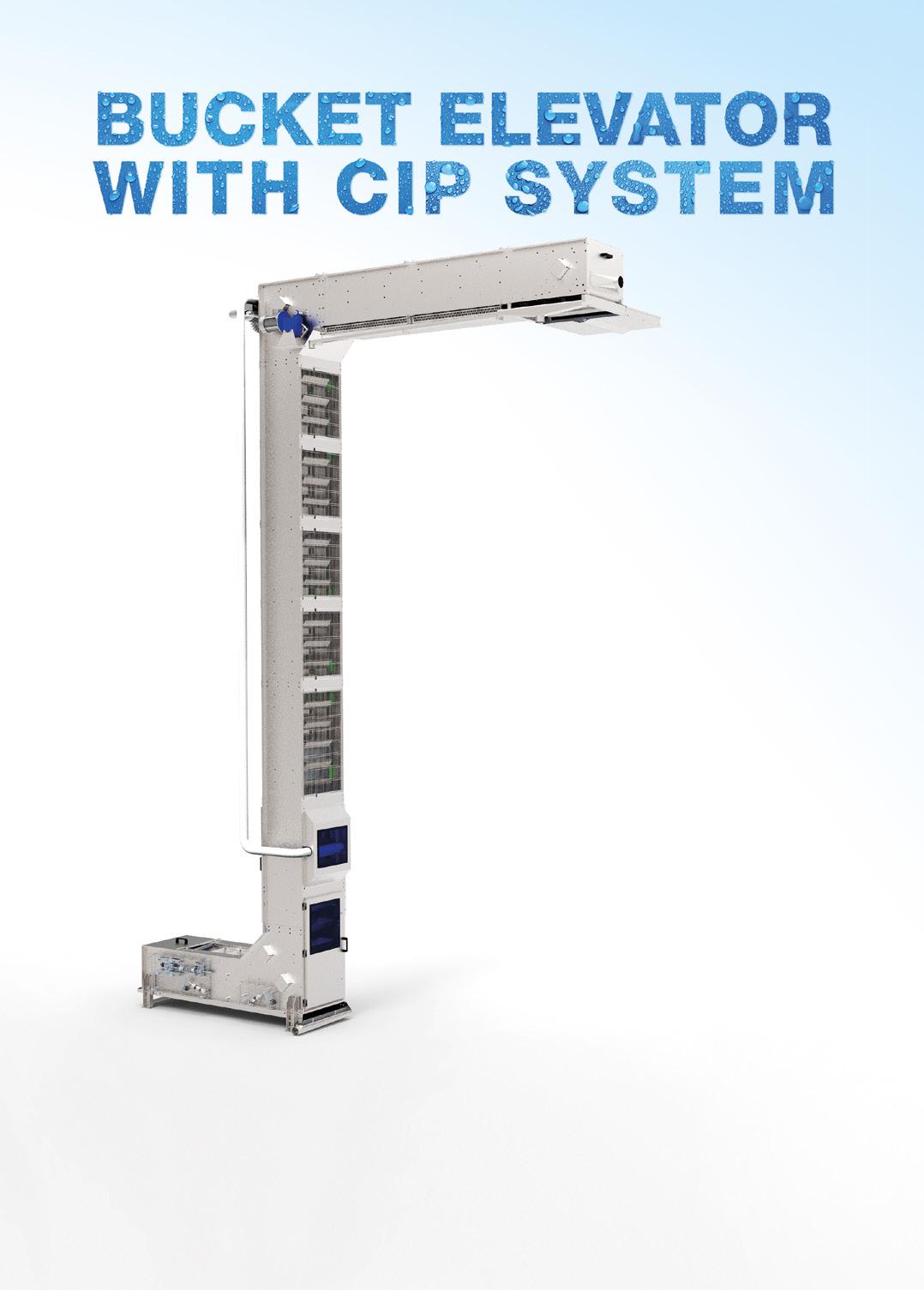
They represent the ideal solution for handling food products while ensuring the best conditions of cleanliness and hygiene.
Strengths:
• Washing programs can be created or customised to optimise the use of water and detergents;
• Automated discharge point closure system during washing;
• Specially designed components and buckets;

• Multiple technologies for post-wash drying;
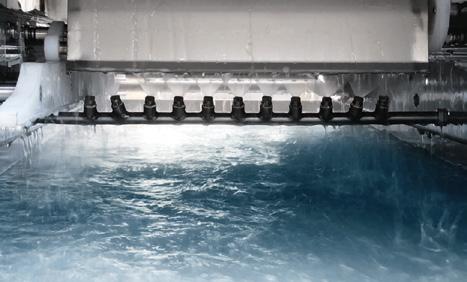
• Wide choice of bucket models by capacity or type of product handled;
• Also available in a basic version with washing system that can be integrated into the customer’s plant or with manual washing system.
Since 1964 CUSINATO has been designing and manufacturing high quality machineries and systems for storing and handling fragile granular products for the food industry, including pasta, pet food, snacks, dried fruit, cereals, candies... And also from the non-food sector, such as pellets, fertilisers, detergents and many more.
The JW series Bucket Elevators with CIP (Clean-In-Place) are equipped with an effective integrated bucket washing system by using high-pressure water with detergents.
INNOVATIVE CONVEYING AND STORAGE TECHNOLOGIES www.cusinato.com Via Monte Pelmo, 8/11 - 35018 San Martino di Lupari (PD) IT Tel. +39 049 9440146 - info@cusinato.com
JW Series bucket elevator made entirely of stainless steel
WATER HIGH PRESSURE SOLUTION
machinery and equipment
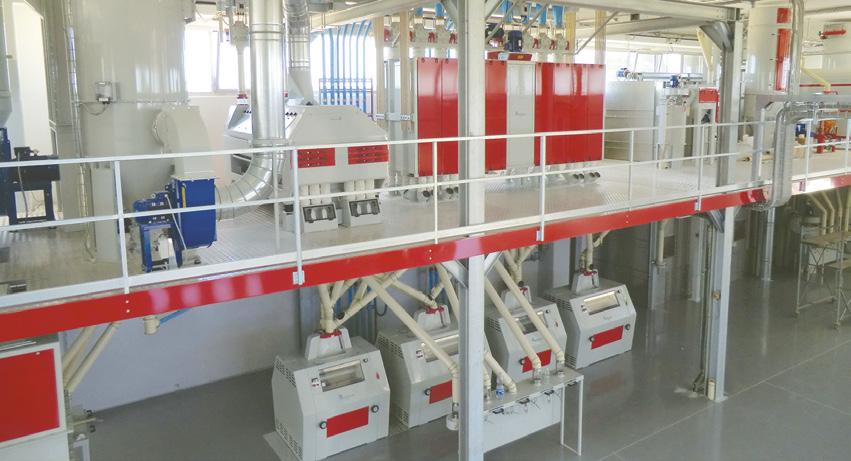

Molitecnica Sud: Italian milling and food culture around the world

Molitecnica Sud is a metalworking company founded in Altamura, Italy, more than 50 years ago by Giuseppe Pellicola, with the aim of building unique machines for mills. His four sons developed the company to such an extent that it is now able to satisfy new sectors. Today, the third generation of the family works to carry on the same founder’s passion, but with a more global vision: “spreading Italian milling and food culture
around the world”. To achieve this goal, Molitecnica Sud has built up a network of partners to offer complete solutions for the food industry, also for the foreign market. In addition to milling plants, the company is now able to supply pasta and industrial bakery plants, compact milling plants, stockage systems, auxiliary machines and 24-hour automatic shops. Committed to the national and international market, it is capable to satisfy the
80 ˙ Spring issue 2023 Tecnica Molitoria International
Milling plant produced by Molitecnica Sud.
needs of customers from all over the world, in Eastern Europe, in the African continent and the Middle East. The results in global markets have also been achieved through the 100% Made in Italy certification. In fact, the Institute for Protection of Italian Manufacturers attests that Molitecnica Sud’s products respect the requirements of the “IT01 - 100% Original Italian Quality” system. This means not only that the machines and the plants are produced exclusively in Italy, but also certifies the quality of the materials used and the respect of work, hygiene and safety rules.
In addition, Molitecnica Sud offers a rich package of services: preventive analysis, grinding diagrams, personnel training, remote assistance, maintenance, consultancy and pre- and post sale technical assistance. Its flagship is certainly customised design, dealing with tailormade projects, analysing the requirements of each individual customer.
machinery and equipment
The Research and Development (R&D) area is fundamental, because the solutions proposed are the result of in-depth studies. Molitecnica Sud has embraced Industry 4.0 to make plants highly technological. In fact, it is possible to request plants with sensor technology capable of providing real-time data on production, safety and machine status. In addition, the possibility of automation is offered to automate and lead the plants remotely. One of the most important innovations is the use of Augmented Reality. Molitecnica Sud has recently implemented this technology to show a preview of the installations requested. The technicians go to the customer’s empty factory and, with the use of visors, they are able to project the machines in real size in the position where they will be installed.
(Molitecnica Sud - S.P. per Ruvo di Puglia km 1,300 - C.da Torre La Macchia - 70022 Altamura - BA - Italy - Tel. +39 0803101016 - www.molitecnicasud.it)

Production lines for pasta, couscous and snack pellets
Since 1984, after 20 years of experience, Pietro Guidolin, founder of Tecalit, has reached important technical and technological results with foresight and skilled collaborators, thanks to the support of his sons Pierpaolo, industrial engineering at the University of Padua, and Adriano, food technologist at the University of Udine. The product range includes: short-cut pasta, long pasta, nest pasta, special
shapes, instant pasta, fresh pasta, gluten free products, cous cous, and snack pellets. The production lines are appreciated for the technical and construction reliability 100% Made in Italy, with advanced technology that assures high quality of the final product, appreciated by our customers and final consumers. Since year 2000, Tecalit has developed its own technology for production of gluten
Tecnica Molitoria International Spring issue 2023 ˙ 81
free pasta using different raw materials, such as corn, rice, quinoa, chickpeas, peas, lentils, beans... The customers are all over the world and in particular areas where raw materials are more accessible, profitable and sustainable, with respect for the environment.
During the last 10 years, the company has invested in new technologies and increased its services offered, thanks to the new laboratory for Research and Development. With final realization of new production lines for cous cous, pre-cooked instant pasta and snack pellets.
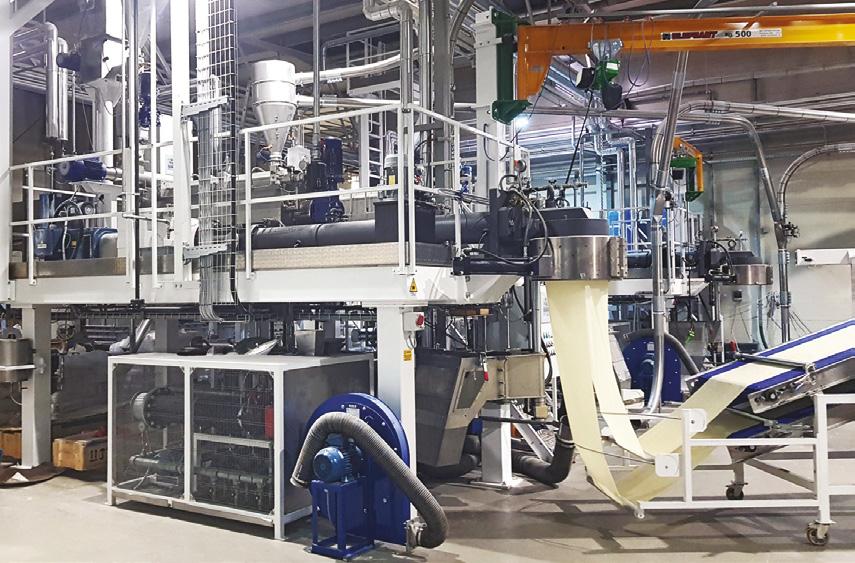
(Tecalit - Via Leonardo 60 - 35018 San Martino di Lupari - PD - Italy - Tel. +39 049 9460985 - www.tecalit.it)
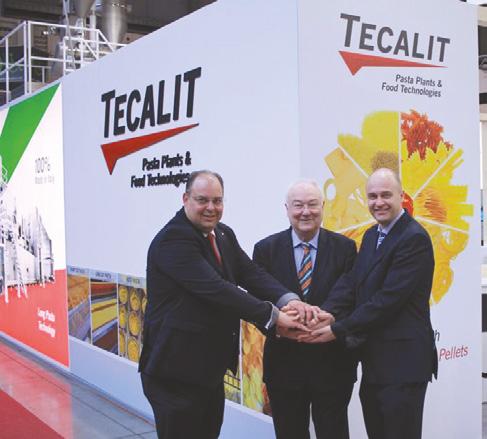

82 ˙ Spring issue 2023 Tecnica Molitoria International
From left Adriano, Pietro, Pierpaolo Guidolin (Tecalit).
New Cooker Extruder CET 162 (Tecalit).
Single Shaft Ribbon Blender

Since the 1980s MAP, a division of Wam group, develops a unique range of mix ers to satisfy the needs of clients and to offer a professional solution for any thing. With years of experience in mixing technology, today it can offer a new ded icated solution for almost every type of mixing problem. The WBR Single Shaft Ribbon Blender is a new generation of ribbon shaft mixers which combines reli able mixing quality with improved fea tures and ergonomics. It is the solution to match market needs in terms of pricequality ratio, maintenance, safety and eco-friendliness.
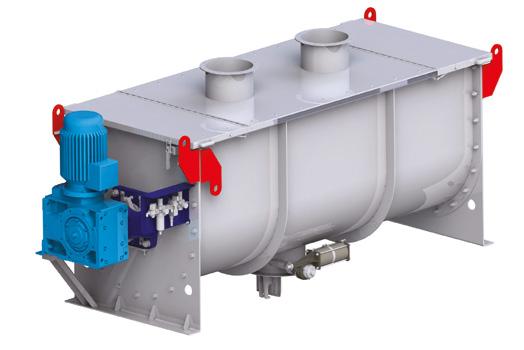
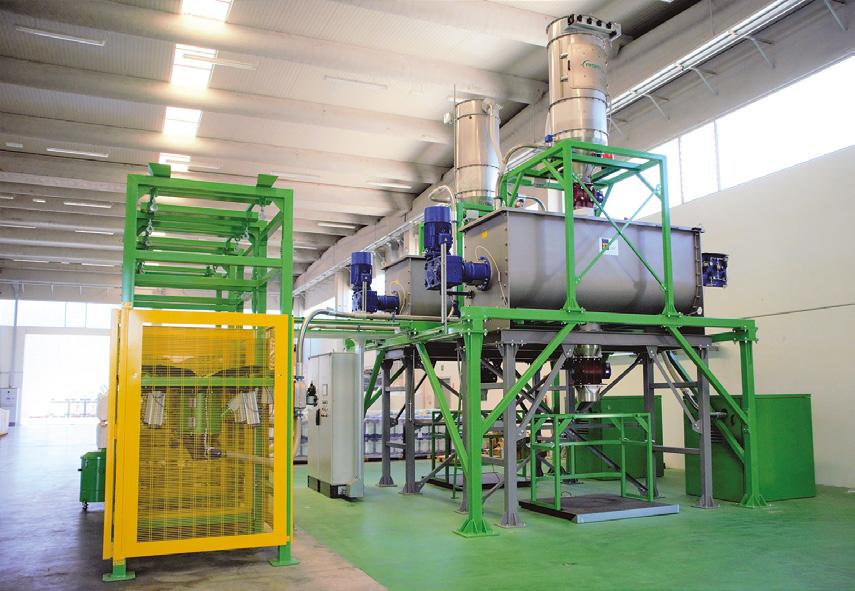
Tecnica Molitoria International Spring issue 2023 ˙ 83 machinery and equipment
WBR Single Shaft Ribbon Blender (MAP).
WBR consist of a horizontal, U shape mixing vessel, drive system and ribbon agitator. The mixing element is combined with inner and outer double helical ribbon. The outer ribbon moves materials into center direction and inner ribbon moves the materials in the opposite direction to shape radially and laterally movement.
The particular shape, position and rotation speed of the mixing tools, creates a centrifugal vortex motion, which allows the materials to be projected in a three-dimensional way and to merge with each other. This ensures that components with a different particle size and bulk density are blended and mixed with high precision within the shortest possible time.
Pasta scraps recovery
Understanding how to manage pasta production scraps is a common issue, because there is always a percentage of finished product that cannot be used for sale on the market – for reasons of aesthetic non-conformity – that varies according to the type of finished product.
In the case of long pasta, the percentage of discarded product is among the largest and corresponds to approximately 7-8% of the total production. This means that, in a production line with a capacity of 4,000 kg/h, the quantity of production scraps corresponds to approximately 320 kg/h. In the case of that short, the percentages are variable
The WBR is used for mixing of dry powders, granules or short fibres, for moistening, agglomerating or granulating the same materials, or for mixing small quantities of liquids or pastes with low viscosity. MAP offers a vast range of solutions to improve plant productivity, to ensure production quality, to help protect the environment and reduce energy and maintenance costs. The comprehensive range of mixers consists of Ploughshare Mixers, Ribbon Blenders, Laboratory Mixers, Conical Screw Mixers and Dustfix Dust Conditioners . All configured for batch or continuous processes.
(Wamgroup - Via Cavour 338 - 41032

Ponte Motta di Cavezzo - MO - Italy - Tel. +39 0535 618111 - www.wamgroup.com)
and depend on packaging errors or aesthetic non-conformities. The product scraps, aesthetically unsuitable for sale but nevertheless compliant with production quality standards, can be recovered and reintegrated into the production cycle.
CMB designs and manufactures scraps recovery systems, which allow to transform the discarded product back into raw material with adequate granulometry. The configuration of these systems is customizable: it can vary depending on the type of product to be recovered, the customer’s needs and the existing production plant in which they have to be installed. In addition,
84 ˙ Spring issue 2023 Tecnica Molitoria International
the scraps recovery systems made by CMB can also handle different raw materials, keeping them separate within the production cycle and managing their traceability. Generally the process involves three steps: crushing, grinding and sieving. The crushing step allows to break the discarded product into smaller pieces, the grinding then transforms these piec-
machinery and equipment
es into granular product, finally the sieving selects the regrind product according to the required particle size. At this point, the regrind product can be inserted into the production line with variable dosages up to a maximum of 15% of the total production.


(CMB - Via Monte Pelmo 8 - 35018 San Martino di Lupari - PD - Italy - Tel. +39 0424 780176 - www.cmbsrl.com)

Tecnica Molitoria International Spring issue 2023 ˙ 85
Pasta scraps crusher with manual loading and pneumatic conveying (CMB).
CMB grinding group: an ideal solution for the recovery of scraps with manual loading and a production capacity from 300 to 500 kg/h.
New complete plant for storage and rapid bulk return of meat flour

During 2022, Technobins, specialized in the construction of industrial storage systems, has completed a turnkey plant of significant dimensions for Inalca, leader in Italy and one of the major European players in the beef sector, as well as being among the top Italian operators in the pork, cured meat & snack sector. It operates also in a leadership position in the distribution of food products abroad and is one of the few Italian companies to oversee the entire produc-
tion chain in the beef sector. The plant was built in Castelvetro di Modena, Italy, and consists of the several sections: 5 smooth spiral storage silos in stainless steel with a flat bottom with a capacity of 500 m3 each. The silos are insulated with rock wool and external corrugated sheets with colors ranging from green to white-grey, and they are equipped with a roof (also insulated) complete with ATEX devices. The silos are sealed and loaded pneumatically.

86 ˙ Spring issue 2023 Tecnica Molitoria International
Overall view of the plant built by Technobins for Inalca.
The instrumentation guarantees the safety (being a product that is difficult to keep) and the supervision and the correct management (for instance radar for continuous management of levels, probes to detect the temperature in the various areas of the silo); access and connection carpentry to the grinding area, which allows to have all the equipment and instruments indoors and easily accessible also for maintenance; silos loading system from the processing area consisting of dense phase pneumatic transport (with pneumatic conveyors), relative accessories (diverters and filters) and stainless steel instruments with a capacity of 3 t/h; silo and recirculation unloading system using hydraulically operated planetary extractors, pallet
machinery and equipment
conveyors and thrusters with a capacity of 25 t/h; bulk truck load unit composed by an high support structure, 2 insulated stainless steel silos of 30 t each, weighing system, extractors with rotating blades, collection augers and telescopic loading bellows; electrical panels and automation system suitable and personalized to the customer’s needs.
Technobins followed the project in all phases – from engineering design to installation and testing – using of the expertise acquired to find solutions during construction and taking advantage of the tried and tested collaborations with specialized partners and suppliers.
(Technobins - Via P. Nenni 4 - 42048 Rubiera - RE - Italy - Tel. +39 0522 943002 - www.technobins.it)
Business between the Rummo pasta factory and Cusinato has been strenghtened

Cusinato Giovanni has been producing machinery and whole plants for conveying and storing pasta and other granular fragile products all over the world since 1964. Almost sixty years of experience gained thanks to continuous research and development, with the target to make their machinery and systems more and more performing and innovative, an example of excellence Made in Italy. Over the years, it has become synonymous with quality, reliability and satisfaction of customer needs: from the
careful analysis of the buyer’s specification comes the optimal solution for the design of products that fully satisfy the initial expectations.
One of the latest projects is the extension of the storage plant for Pastificio Rummo in Campania, Italy. Master pasta makers since 1846, the Rummo family has been a leading player in the production of quality pasta for over 175 years. In 1990 they placed their trust in the expertise of Cusinato and the two companies began to do business together with
Tecnica Molitoria International Spring issue 2023 ˙ 87
the installation of an initial plant. In 2008 Rummo renewed the trust and the plant was doubled. In 2022 a second expansion project was realised. A solid business partnership that has enabled Rummo to maintain high production quality standards and Cusinato to supply a customised plant designed and built using the latest technology.
With the 2022 extension state-of-the-art stainless steel monobloc silos were installed, that guarantee high levels of hygiene with internal walls free of gaps to minimise the risk of contamination and allow faster cleaning times.
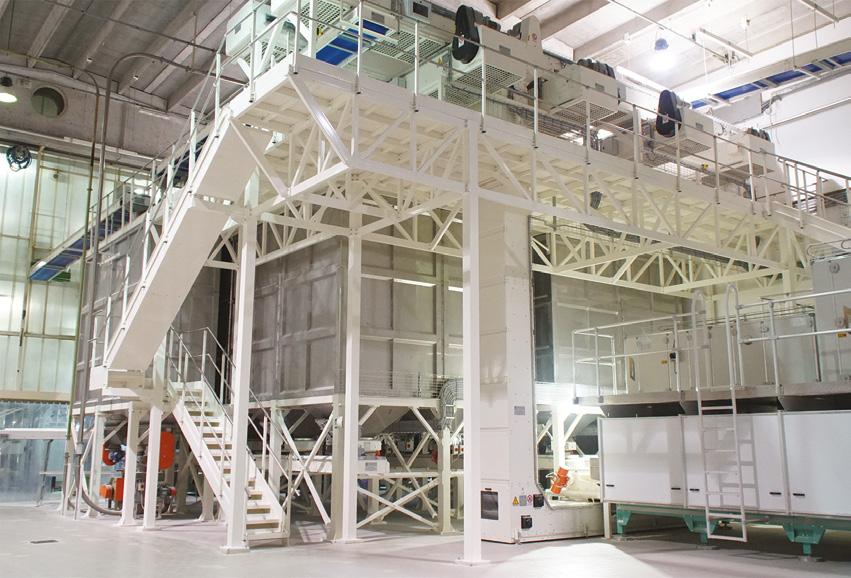
The plant is equipped with proprietary software, the Storage Evolution 8.0, which allows complete control of the plant, providing real-time information on the quantities and pasta shapes in the silos, ensuring complete traceability. Cusinato’s team is ready to analyse requests and needs sharing a preliminary project with the customer up to the definition of a final layout with the widest possible customisation.
(Cusinato Giovanni - Via Monte Pelmo 8
- 35018 San Martino di Lupari - PD - Italy
- Tel. +39 049 9440146 - www.cusinato. com)

88 ˙ Spring issue 2023 Tecnica Molitoria International
Mobile hopper
In addition to the traditional milling machineries, the versatility, the know-how and the desire of Officine Loporcaro to offer to the customers the best that Italian technology can offer, have enabled the realization of technical solutions for an unusual sector.
In the photo, the advanced and complete prototypes (Matr.M-A 1698) of mobile hopper employable in whatever port in order to discharge cereals and granular products from ships to load lorries is shown. This is a complex mobile plant since it is fitted with hydraulic, weighing, aspiration and filters systems. Currently the operators, in order to comply with hygiene rules which forbids goods discharge on the ground (to avoid contamination), they make use of grab, so they firstly discharge the products in the hopper which, in turn, charges the lorries. This mobile hopper prototype has been designed considering some anti-pollution exigencies, since cereals (or other products to discharge), are dusty, such an efficient plant allows the discharging operations without dust emissions. The robust metal carpentry structure is painted with a paint to protect the plant against atmospheric agents. It supports the hopper parties and it is complete with height sturdy wheels which are mounted in pairs by allowing to move the plant. An aspirating plant assure dust collection during the passage of product in the hopper which has a capacity of 83 m3, and a weighing plant allows a fair release of product suitable for the permissible load capacity of the truck.
A hydraulic plant activates 4 jacks by making stable the entire structure which, once it has been placed, it will remain steady and stable during the operations. It will drive also the hopper opening. An electric plant placed in a protected box for the operator, it allows to drive and control all the connected and wired equipment.

Thanks to previously acquired knowledge, this prototype is rich in solutions and it is able to give immediate advantages to the users.
(Officine Loporcaro - Via del Grano 1Zona Industriale - 70022 Altamura - BA - Italy - Tel. +39 080 3101167 - www. loporcaro.it)

Tecnica Molitoria International Spring issue 2023 ˙ 89 machinery and equipment
New automatic bagging machine


Imeco is an Italian company with more than 40 years of experience in dosing, weighing, packaging and bag palletizer for bulk products, both granular and powdery, in bag from 10 to 1,000 kg. The mission has always been to support companies developing packaging solution that can meet customer requirement.
Flagship of the portfolio is the automatic bagging ABP120, with the capability to handle open-mouth pre-made bags, free-flowing products with a capacity up to 20 bags per minute. It can be customized with different types of dosing system, depending on the product that
have to be dose (gravity, belt, double screws and single screw). The machine is designed to work with any type of bag (PP Woven, PP Laminated, PP Woven with PE Liner, PE, Multiwall Paper, Coated Paper...), through the Imeco technology which allows the total control from the bags storage to sewing/welding section, giving the operator the security of being able to manage the entire process through the touch screen located on the integrated control panel. Thanks to the trust and cooperation with the customers the company developed different spout systems for the ABP120, that can be equipped with residual dust
90 ˙ Spring issue 2023 Tecnica Molitoria International
The automatic bagging ABP120 (Imeco).
extraction systems and side buffers to make the bag fit almost hermetically in the mouths.
For better product settlement inside the bag and in order to improve stacking during downstream stages, it is possible to equip the machine with an electropneumatic bag shaker and deaeration bars in order to remove excess air before the bag is closed.
Several bag closing systems are available (sewing, heat sealing, pinch, gluing...) and the standalone Bagging Machine can be also integrated with existing equipment already present at customer plant.
Brushes for milling
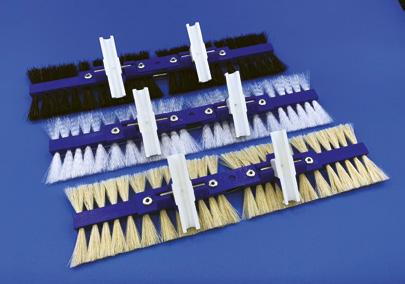
For over 50 years, S.i.a.t. is a world leader in the production of brushes for mills, feed and pasta plants, using only machines with high technological content and certified raw materials suitable for food.
The ESTS cleaning sieve in the shape of a triangular star is designed for the

machinery and equipment
The new innovation is the 3D software that allows the operator to virtually enter the machine for detect any anomalies and thus reduce downtime, maintenance and TCO. 24/7 online support is always available through Remote Assistance Modules directly with the after sales department.
Imeco ABP models are available with the following executions: SS304 or SS316 for product contact parts, aggressive product or environment exposition or for sugar application.
(Imeco - Via delle Viole 23 - 26100 Cremona - Italy - Tel. +39 0372 496826www.imeco.org)
new concept of floor plans with a large screening surface, while the PA purifier brush 604 made of nylon with an 85 mm guide, it can be made in various lengths on request.
(S.i.a.t. - Via Circonvallazione Ovest 53 - 40050 Castello d’Argile - BO - Italy - Tel. +39 051 977027 - www.siat.it)

Tecnica Molitoria International Spring issue 2023 ˙ 91
The sieve cleaner model ESTS (S.i.a.t.).
The PA purifier brush 604 (S.i.a.t.).
Complementary systems for pasta production lines
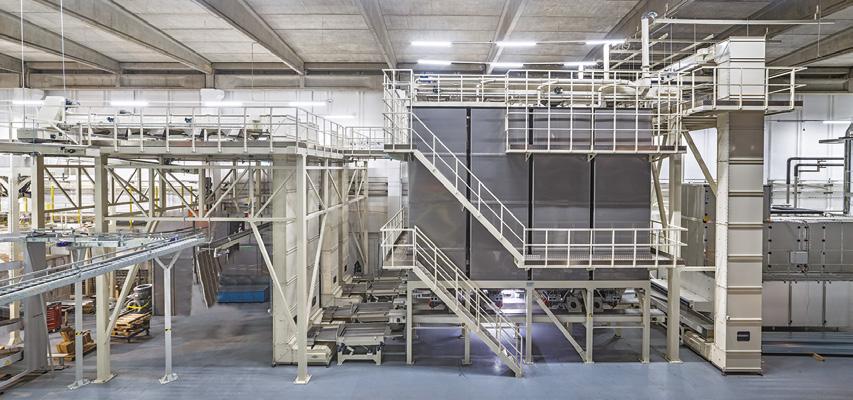

Sircem CM is specialized in the study, design and construction of additional facilities at the service of the production lines of pasta. Founded in the early Sixties, it has strongly affirmed itself first in Italy and then expanded all over the world, studying personalized plants at competitive prices and always with solutions at the vanguard. The industrial supply is enriched with a capacity of specialist advice appreciated: technical and administrative, to assist the customer in different system requirements, production and financial that inevitably arise, when you embark on the construction of new plants and/or renovation and industrial modernization. The qualification design company gets its origin on the human resources: ex-
pert, with specialized training and supported by hardware and software design at the forefront.

92 ˙ Spring issue 2023 Tecnica Molitoria International
Short pasta storage, in monolithics stainless steel silos, and handling systems (Sircem CM).
Raw materials storage, in monolithics stainless steel silos (Sircem CM).
The range includes: systems complete with granular and dusty products storage; systems complete with short format pasta ensilage and packaging machine feeding line; systems complete with dosing and mixing units; systems for scraps and waste pre-crumbling and grinding; compression and suction pneumatic con-
machinery and equipment
veying lines; mechanical conveyance: belt, chain and Archimedean screw conveyors; vertical sloped and “Z” bucket elevators; static and self-cleaning filters; control panels with PLC and computers.
(Sircem CM - Via Armando Diaz 19 - 84018 Scafati - SA - Italy - Tel. +39 081 8631205 - www.sircem.it)
Avantgarde packaging machines
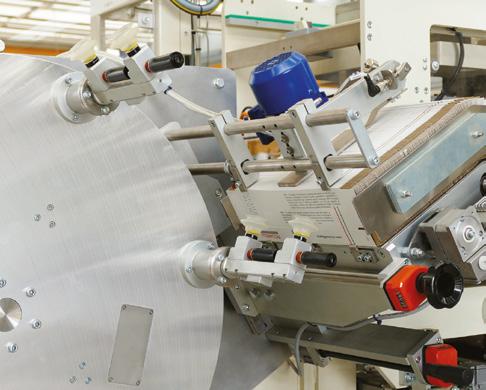
Ricciarelli continues to be a point of reference in the packaging sector, thanks to a client portfolio that reaches out five continents, achieving the success thanks to the staff’s experience and professional proficiency, understanding and anticipation the requirements of an everevolving market, and the capacity of turning them into innovative and efficient solutions supported by closed assistance over time.
Through research process, the company has increased the activity, covering many product sectors, designing and producing packaging and palletizing machines. This has made it possible to increasingly meet the demands, who are interested in offering consumers increasingly attractive product packages on supermarket shelves, stimulating consumption not only for the quality product but also for the brand appeal through attractive packaging.
New machinery put operator safety first, guaranteeing optimal work conditions thanks to increasingly automated operations that reduce time waste and human energy down to the minimum while increasing efficiency of the whole
production cycle. Taking into consideration factors such as ever smaller space and higher expenses to extend factories, Ricciarelli has paid into attention overall dimension and maintained the plants’ reliability and it has developed systems able to process materials such as paper or compostable to support environmental sustainability.

Tecnica Molitoria International Spring issue 2023 ˙ 93
A detail of the Ricciarelli cartoner machine mod. G12RC140 that will be exhibited at the fair (Ricciarelli).
During the next edition of Interpack, in Düsseldorf (Hall. 1, stand D20), Ricciarelli presents two of its latest solutions: high speed mod. G12RC140 packaging unit for long pasta in cartons of 140 carton boxes per minute; continuous packag-
ing unit mod. VS150 equipped with volumetric filler for stand-up bag with four sealed corners of 80 bags per minute.
(Ricciarelli - Via Mariotti 143 - Z.I. Sant’Agostino - 51100 Pistoia - Italy - Tel. +39 0573 44571 - www.ricciarellispa.it)

New goals in Africa for Ocrim
The 350 t/24h hard soft wheat green field milling plant for Sanabel Group International was successfully tested a few months ago, with the full satisfaction of the customer and the Ocrim team. A plant equipped with the latest generation technology, to meet the customer’s needs related to food safety and energy saving. The Ocrim team took into account some specifications for a general optimization of the plant footprint. An intelligent design and cutting-edge machines, for this plant which is complete with a 420 t flour silo and a 150 t stor-
age for by-products, all managed by an automation system, also branded Ocrim, designed and built to simplify the activities of the mill.
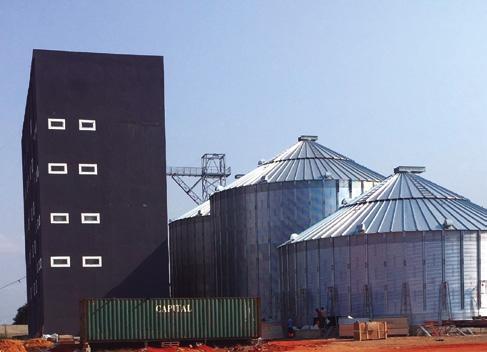
The sales director, Fabrizio Baccinelli, claims that in Africa economic development is growing and Angola is becoming an important point of reference for the entire continent, thanks to virtuous industries such as the Sanabel Group, but also many others that have the strength and foresight to invest and enhance one’s business not only for self-referential issues, but also for the collective community wellbeing.
Hassan Noureddine, CEO of Sanabel Group, is satisfied to have chosen Ocrim for this project: “It is the first time that we have entrusted ourselves to Ocrim. We have always heard of the Cremonabased company as one of the most reliable in the world and I must say that the result has exceeded the expectations. Ocrim is an attentive, innovative and punctual partner. And, to our positive surprise, the delivery times were respected, despite the complexities of the pandemic period”.
(Ocrim - Via Angelo Massarotti 76 - 26100
Cremona - Italy - Tel. +39 0372 4011info@ocrim.com - www.ocrim.com)
94 ˙ Spring issue 2023 Tecnica Molitoria International
External view of the Ocrim plant for the Sanabel Group.
The solution for sorting and grading cereals with maximum accuracy
3U Vision Optica HD is an advanced optical sorter that uses cutting edge sorting technology to identify and separate cereals quickly and accurately. 3U Vision is a flexible company constantly looking for innovative technological solutions and that deal with advanced vision systems optical sorters, designed, and manufactured in Italy.
3U Vision patented 4-wavelength, multispectral advanced technology with fullcolor RGB, near-infrared (NIR) all in the same 4K sensor, and, optional, SWIR (InGaAs) systems rapidly identify and reject impurities and foreign materials, ensuring only the quality grains according to the clients’ needs.
The optical sorter’s high-resolution cameras provide detailed images of each grain being sorted, enabling the ma chine to accurately detect any dif ferences in size, shape, color, and moisture content or contaminants such as stones, straw, and other debris, maximizing the value of the treated product.
This advanced technology, together with LED lighting, that allows the detection of the slightest color variation, assures the sorter’s stability and ensures each grain is sorted to perfection.
Optica HD, wade range of models from 1 to 8 chutes, satisfies every flow request,


offers a comprehensive solution for cereals sorting and ensures top-quality on the field.
In addition, the optical sorter can be integrated into existing production lines, allowing for a seamless transition. With the reliable performance, easy integration, and fast sorting times, the 3U Vision optical sorter is the solution for any cereals processing operation looking to maintain the highest quality standards and increase profits.
(3U Vision - Via Ugo La Malfa 20 - 40026
Imola - BO - Italy -Tel. +39 0542 1881791 - www.3uvision.com)
Tecnica Molitoria International Spring issue 2023 ˙ 95 machinery and equipment
Micro powder dosing systems
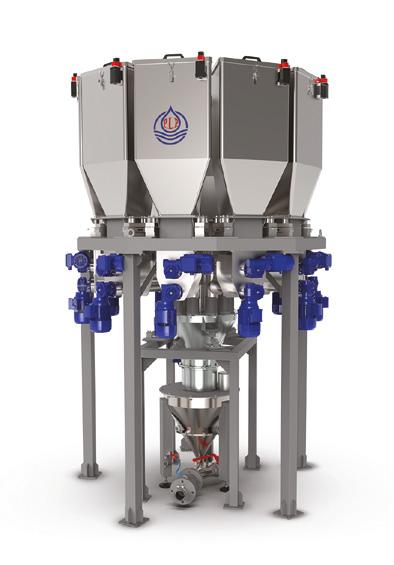

PLP Systems is specialized in the research and development of technical machinery and systems for the food, pet food, aquafeed, animal feed, chemical and cement industry.
Powder and liquid dosing systems for bakeries and the food industry enable precise and reliable dosing together with a clean and hygienic work environment. Materials that are difficult to handle can be dosed reliably and accurately with PLP’s systems. Their modern dosing systems help customers to offer the end products with better and more uniform quality. Thanks to the fast and accurate dosing, production capacity can be increased as well.
In fact, the use of liquid and powder micro ingredients in the modern food industry, as well as in feed and pet food mills, must be implemented using innovation, precision and cost effectiveness, whilst maintaining traceability throughout every stage of the application and avoiding cross contamination. Micro-dosing systems in industrial plants must provide a repeatable weighing capability while maintaining the same level of accuracy. Obviously, the more the weighing maintains good accuracy, the more attractive the machine is qualitatively. The sizing of the dosing devices and their feeding is the basis for achieving the desired results.
For these reasons, the company has developed the latest technology tailored to suit the all demand. PLP’s systems facilitate the addition of small quantities of both liquids and micro powders, they are able to organize production by automatically weighing all powder and/ or liquid ingredients in recipes or preparation batches in all food productions where micro-dosages of ingredients are required. Guaranteeing the quality of the finished product, certainty of weighing accuracy, replicability of recipes, balance of raw materials and optimization of production time and costs.
Micro dosing powder system
Systems used for premix plants, feed mill additive dosing, food recipes, chemical products... or wherever you need to dose powders in small quantities. Micro dos-
96 ˙ Spring issue 2023 Tecnica Molitoria International
Micro dosing powder system (PLP Systems).
ing for powders (MDP) is a system with a standard concept, but the size, capacities and logical function can be designed and adapted to suit the needs. The batch dosing can range from a few grams up to 1,000 kg. The system is normally used as a batch dosing scale, dosing each powder individually into the weighing hopper. Other types of configurations are possible such as loss in weight, continuous and volumetric dosing. All parts in contact with the product are constructed in stainless steel and the MDP has been
machinery and equipment

designed in order to achieve a smooth operational work process and a simple system maintenance. Up to 12 additives in one single carousel system, from the plan view it occupies only 4 m2 . PLP Systems through years of experience, has developed a complete dosing system dedicated to the dosing and conveying of various poor flowability components and is applicable especially in areas where unsuitable environmental conditions are present (high temperatures and humidity).
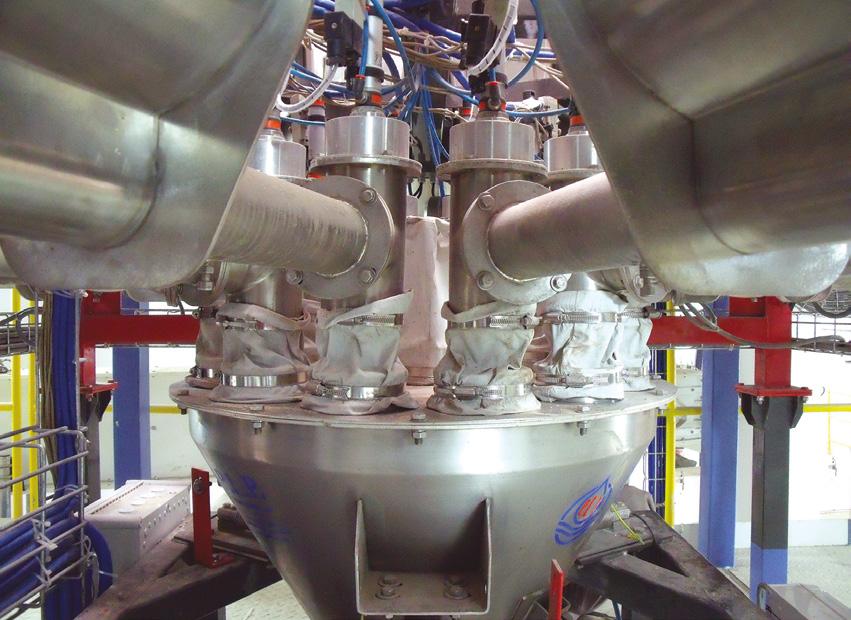
Tecnica Molitoria International Spring issue 2023 ˙ 97
Micro dosing powder system (PLP Systems).
Benefits of the MDP System

With the MDP different ranges of products can be handled which vary in granulometry size and physical/chemical characteristics, from a few grams up to many kilograms. The resolution of the dosing for each additive can start from less than 1 g resolution. The feeders are able to reach up to 500 kg batch in less than 3 minutes. With the MDP, special products can be handled with different concept feeders (vibrating units) such as filaments, flakes, pastes for fragile products. One of the benefits of this technology is also its easy working process, as the system can be supplied with the automation program. Complete with security switches, bar code readers, alarms, reports and traceability database, it has also an easy maintenance, in fact the MDP station contains simple but robust elements that can be easily-be replaced on site. Besides this, it’s easy to clean thanks to the fast clamps connections on the body of the feeders and it can be modulated and ex-
panded on the system according to the customer needs or for any future implementations.

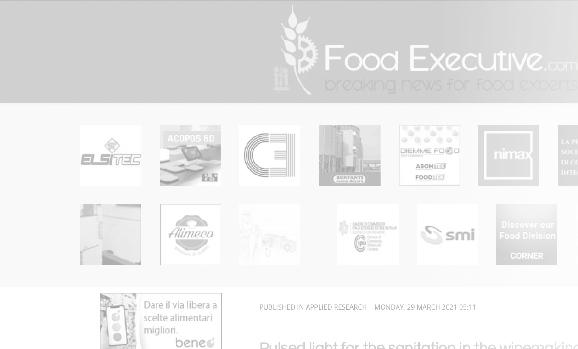

By choosing PLP`s machinery, the users are assured of a system that can be perfectly integrated into the process and also easy to maintain and clean. Resulting from the years of experience, those systems guarantees a high performance. For 2023, the goal is focused on respecting the environment, and is committed to expanding their technology and research, bringing to the market new innovations and ideas, while improving and increasing the economic benefits for the customer.
Some of PLP`s latest machinery will be on show at the following exhibitions this year: Solids (June 14th-15th) and Cibus Tec (October 24th-27 th) in Parma, Cipeu Zaragoza (September 27 th-28 th) and Victam Latam (October 3th-5th) in São Paulo. (PLP Systems - Via Provinciale sp 21 303 - 29018 Lugagnano Val d’Arda - PC - Italy - Tel. +39 0523 891629 - www.plpsystems.com)
98 ˙ Spring issue 2023 Tecnica Molitoria International
SUBSCRIBE TO THE NEWSLETTER www.foodexecutive.com FOODEXECUTIVE TM 1-4.indd 3 30/03/21 18:03
Hygienical storage systems and handling systems

Since 1970 Pro-Tech Italia manufactures quality and hygienic storage silos for short-cut pasta and couscous, buckets elevators, conveyor belts, vibrating channels, vibrating sieves, dosing devices for long pasta and much more. Thanks to the long experience and the continuous development of the machinery, the plants comply with the strict hygiene standards required in the food sector. The handling systems made by the company are also used for the transport of dried fruit, pulses, candies, snacks, breakfast cereals, rice… Thanks to the
characteristics of the plants, in the last years PRO-Tech has been engaged in the start-up of multiple storage facilities for short pasta, couscous and pasta feeding systems for packaging machines in the European and African markets for different customers leaders in the production of dry pasta. The special feature of the short-cut storage cells made by Pro-tech Italia, is the total absence of screws, metal and/or plastic profiles for connection inside the silo cells and in directly in contact with the product (unlike similar products made
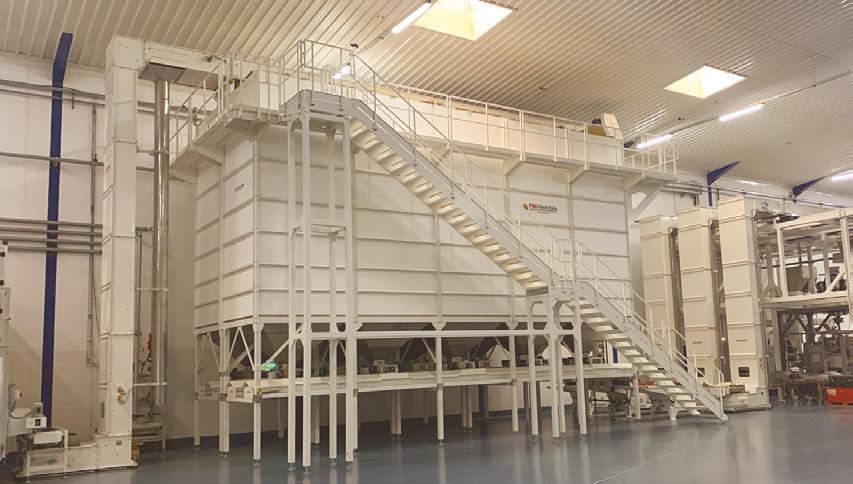
Tecnica Molitoria International Spring issue 2023 ˙ 99
machinery and equipment
Short-cut storage plant 200 m3 with high capacity packaging feeding (Pro-Tech Italia).
by other manufacturers), avoiding possible cracking between the various joints and eliminating the possibility of formation of dust or pasta deposits that would result in infestation with insects or mixing of product.
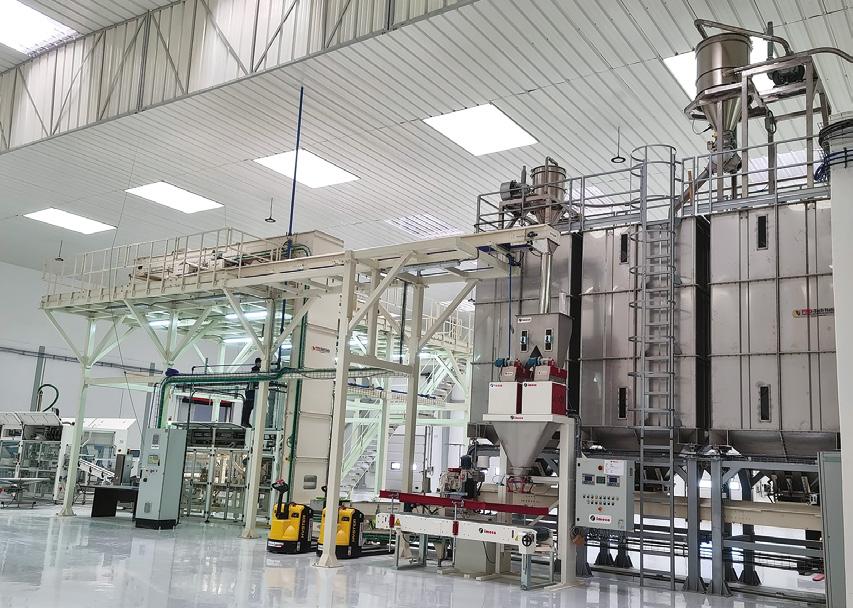

The panels of the silos are made from monolithic walls without joints or profiles, made of 30 mm plywood, coated on both sides with high-thickness laminate (certified for contact with foodstuffs), which also guarantee the absence of condensation (frequent problem in the silos with metallic walls), and are resistant to bending generated during the cell
filling and emptying phases, even in case of small size pasta. Each storage cell is equipped inside with stainless steel spirals with round arms.
The roof of the silos is made of highthickness aluminium sheet, smooth and equipped with an inspection door. The external reinforcements of the silos are made in such a way as to avoid formation of dust deposits. The silos bottom hopper is made of stainless steel, monobloc (without any visible weld inside) with rounded corners, making it hygienic and wear-free over time (unlike what happens in hoppers made of laminated
100 ˙ Spring issue 2023 Tecnica Molitoria International
Couscous storage plant 30 tons with high capacity packaging feeding (Pro-Tech Italia).
wood). The extraction of the product from silos is guaranteed by the most effective, powerful and hygienic system made by a reversible extractor belt, which, in addition to preserving the intact state of the product, guarantee high flow rates, constancy and precision of extraction, especially in the case of production of three-colour pasta, thanks to the adjustable speed.
The feeding of the silos and packaging machines are made by buckets elevators available with plastic ABS buckets also available in metal detectable version certified for contact with food. The elevator buckets are available in various sizes, from 300 to 800 mm, and are available in different materials: plastic ABS, metal detectable plastic ABS, ABS + stainless steel and 304 stainless steel. The gentle movement of the product is also assured by high hygienic conveyors belts. For additional security and cleaning are available two-levels cleaning vibrating sieves with interchangeable nets (operation carried out by a single operator, in a few minutes and without the aid of tools), in order to eliminate any scraps from the product such as crumbs, powders or glued product. An aerial sorting system consisting of bucket elevators and conveyor belts, allows maximum feeding flexibility of all packaging machines. Each packaging machine could be equipped with the storage tank with extractor belt that feeds the multi-head weighing systems continuously and consistently. For the couscous the silos walls are made in stainless steel, with the bottom hopper in stainless steel, monobloc with rounded corners, making it hygienic and wear-free over time.
machinery and equipment
The extraction of the product from silos is guaranteed by hygienic vibrating extractor or by an extractor belt, which, in addition to preserving the intact state of the product, guarantee high flow rates, constancy and precision of extraction. Every plants is managed by electrical panels equipped with PLC and intuitive computerized supervision systems with integrated remote assistance.
Pro-Tech Italia made also big bags downloading systems and handling systems used for dried pulses, dried fruits, breakfast cereals..., in combination with cleaning sieves, belts conveyors and buckets elevators for the feeding of cleanings lines or packaging machines.
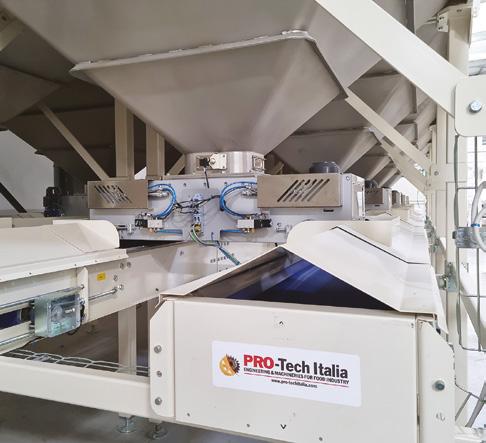
(Pro-Tech Italia - Via Guido Rossa 13 A16012 Busalla - GE - Italy - Tel. +39 010 9642386 - www.pro-techitalia.com)

Tecnica Molitoria International Spring issue 2023 ˙ 101
Details of high hygienical short-cut silos hopper with hight capacity two way belt extractor (Pro-Tech Italia).
Semi-automatic spre sampler
On the global sampling market for years, Borghi presents an automation innovative system of sampler in Industry 4.0 perspective, that foresees a fusion between the automated activity of the machine and human choice.

The operator only chooses where to sample, the machine decides what
manually at any time. The assisted artificial intelligence (semi-automatic) feature can be bypassed; in fact, if necessary, the sampler can also be controlled manually and remotely. In other words, it is possible to operate on the computer screen, via a graphical interface and move the machine as if it were next to it with a traditional joystick or radio control.
Sampling is performed by a combined mechanical/pneumatic system: mechanical, by means of a screw, which performs punctual sampling on the mass reaching the bottom of the truck body, and pneumatic, by means of vacuum circuit, the system conveys the product to be sampled to the laboratory. This system is suitable for sampling both cereals and flours.
At the end of each sampling cycle, the machine returns to the parking position and performs a piping cleaning cycle to avoid contamination in the next sampling.
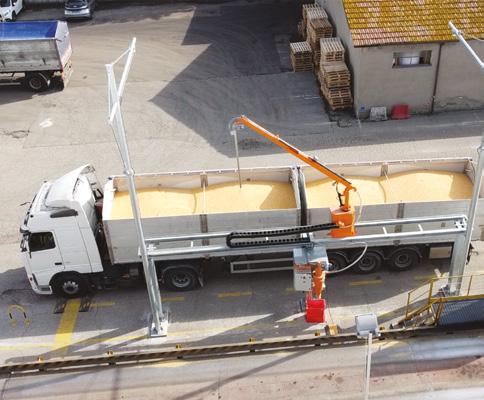
to do, i.e. how to complete the product motion and picking. By means of a touchscreen monitor, the selects various points by pressing by a finger on an image representing a top view of the sampling area.
After this choice, the sampler, autonomously and safety, proceeds with the sampling while maintaining the possibility of being stopped and operated
Generally the sampled product is conveyed directly to the office near an analysis machine. All these operations are recorded and saved in a database which guarantees consultation of the samples at all times. The system also recognizes and decodes the vehicle license plate that has delivered the material autonomously and automatedly. This is very important for the traceability of the origin of the stored products. (Borghi - Via Paradello 7 - 45037 Melara - RO - Italy - Tel. +39 0425 89689 - www. borghigroup.it)
102 ˙ Spring issue 2023 Tecnica Molitoria International
Semi-automatic SPRE sampler (Borghi).
machinery and equipment
Fava’s research achieves new objectives
In 2019, Fava started working on a research project, called Genesis, to produce an innovative range of long and short-cut pasta production lines and new added-value lifecycle services. The project was driven by the need to satisfy the demands of both the traditional semolina pasta market and the emerging market (use of unconventional raw materials, such as soft
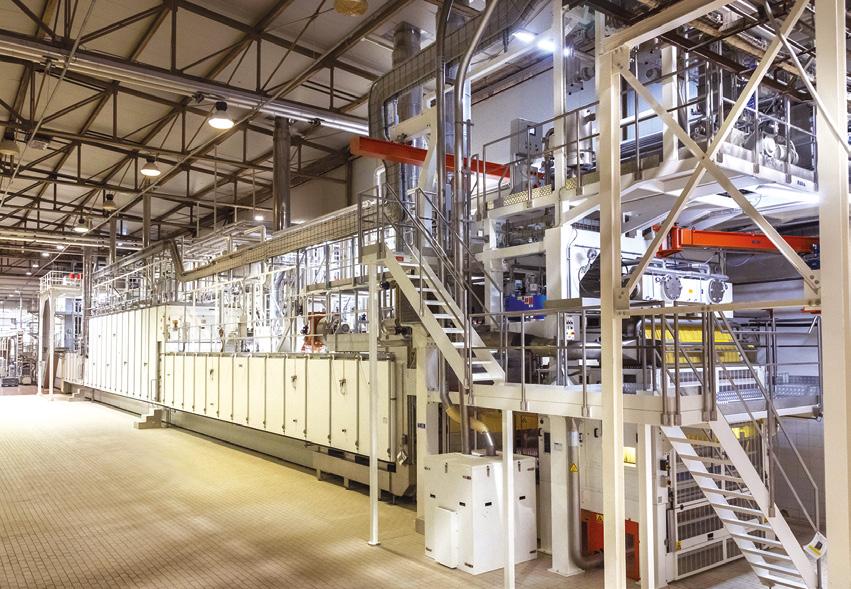
wheat flour and other cereals, including gluten-free flours).
The company identified its targets based on market necessities: optimization of finished product quality with the same raw materials (through value-added technology); optimization of overall flexibility and yields of process equipment, by minimizing whole lifecycle costs; minimization of initial investment costs;

Tecnica Molitoria International Spring issue 2023 ˙ 103
Long-cut pasta line GPL 180 (Fava).
reduction in energy consumption, maintenance costs and footprint area for each production line; improved user-friendliness and ergonomics; improve the level of automation and traceability; provide easy and efficient remote access and assistance; integrate, on the new range of process lines, predictive and automatic services, such as finished product quality control and predictive maintenance for the most critical mechatronic components; improvement and implementation of new training courses, provide services for process optimization and
research of new products to make them more accessible and sastisfactory for the final consumer.

All objectives, both in terms of research and experimental development, were reached in March, in co-operation with a network of universities and specialized companies. The industrial prototype, a 5000 kg/h short-cut pasta line, was started-up and the product and service innovations, identified through accurate market analysis, were qualified between December 2022 and March 2023; to date, other monitoring and technological optimization activities are in place. In addition to what was presented during the design stage at last year’s Ipack-Ima exhibition, significant results have been achieved, such as extensive analytical knowledge on thermo-fluid dynamics and mechatronics of dough formation, pre-drying, drying and cooling systems, obtained through CFD analysis techniques. The new R&D laboratory was launched together with numerous value-added services, including more advanced comprehensive technological training courses and the possibility of carrying out pasta-making tests, aimed at improving current long/shortcut pasta and couscous processes and at developing products with traditional and innovative raw materials. Furthermore, the following services were completed: die inserts which enhance improved cooking performances; artificial intelligence (AI) mathematical models and machine learning related to colour and moisture analysis of raw materials and end products, maintenance of critical components, in order
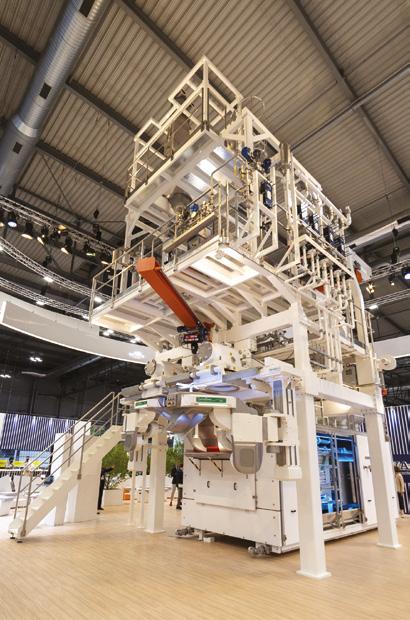
104 ˙ Spring issue 2023 Tecnica Molitoria International
Short-cut pasta line TCM 100 (prototype) presented at the 2022 Ipack-Ima exhibition (Fava).
to develop high added-value predictive digital services; testing of the IIOT system integrating predictive AI models and control dashboard; on-line spare parts portal; augmented reality system, with integrated IIOT dashboard access applications such as remote assistance, machine technical documentation database; research, prototypes and characterization of new high efficiency heat exchangers; start-up phase and short-term qualification of the prototype, launched at an industrial pasta factory.
The comparison between design expectations and performance measured on-site, demonstrated the targeted improvements in production capacity in relation to overall dimensions, reduction of specific energy consumption, product quality and efficiency of the applied predictive services, as well as the operational functionality of the AR system,
designed in accordance with the best solutions currently available on today’s market.
The prototype enabled to validate, in an integrated way, all measurable shortterm research and development results, to obtain an experimental database to complete the development of the new TCM100 range of equipment with capacities from 1000 to 6000 kg/h, making it possible to connect the laboratory to IIOT Fava and to develop the “valueadded services”.
In terms of finished product quality, the application of the most advanced doughmixing, extrusion and drying technologies has made it possible to enhance the raw materials available, achieving qualitative results such as brighter colour and better cooking resistance.

(Fava - Via IV Novembre 29 - 44042 Cento - FE - Italy - Tel. +39 051 6843411 - www. fava.it)

Tecnica Molitoria International Spring issue 2023 ˙ 105
machinery and equipment
Fava Innovative Research Centre.
Creativity and professionality, the winning combination

Anselmo Group announces the participation to the forthcoming edition of Interpack in Dusseldorf (Hall 4 - Stand 4A50), that is an opportunity to the Group to meet customers from all over the world, to start negotiations and establish long-standing business relationships, to start technical and commercial exchange for mutual professional growth. The participation confirms the
company’s mission to offer customers complete and customized solutions, with the commitment to grant the highest quality and flexibility.
Anselmo Impianti has been manufacturing Made in Italy industrial systems for dry pasta for more than 40 years. Highly renowned in the world thanks to hundreds of production lines installed and thanks to a reliable technology, in 2004
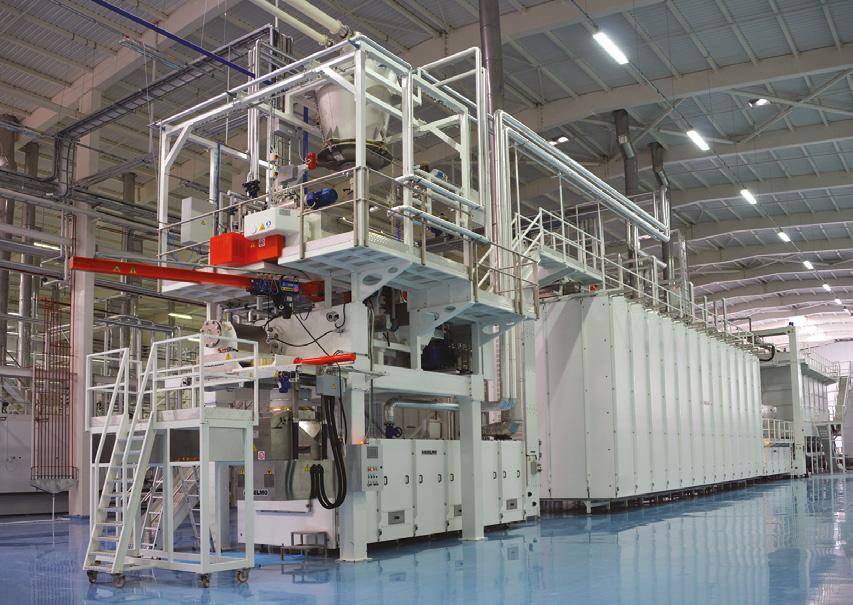
106 ˙ Spring issue 2023 Tecnica Molitoria International
Short pasta line (Anselmo Impianti).
the Group acquired and then developed the Braibanti know-how. In 2017, it started an evolving process that would lead to the merging of other 3 companies, thus creating the present Group, in which in 2019 FEN Impianti, LTA and Omar Impianti became part.
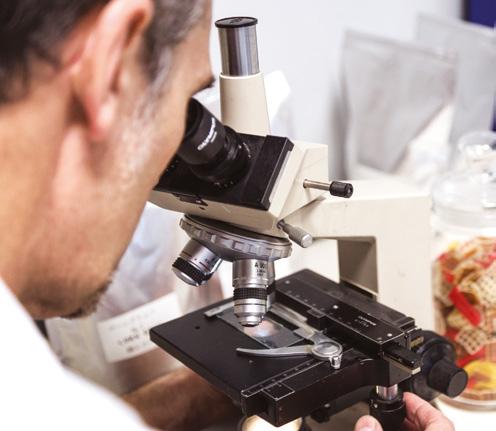
FEN Impianti is the world leader in the field of plants for industrial production of snacks, breakfast cereals, functional dough and gluten-free pasta. It offers personalized and flexible solutions, thanks of its thirty-year experience that has led to the sales of hundreds of plants all over the world. It boasts an R&D center servicing the whole Group equipped with state-of-the-art pilot plants for new product development, and for cooperation with customers for both staff training and tailor made product. Presently, the centre is being
machinery and equipment
enriched with 2 new extruders, in order to offer the possibility to extend the product range that can be developed, and strengthening collaborations with big Corporations.

LTA, on the other hand, is specialized in the manufacturing of automatic and semi-automatic machines for the production of special shapes pasta, such as nests, lasagna and cannelloni, that complete Anselmo Impianti range of product shapes.
Finally, Omar Impianti manufactures sheeting machines and automatic machines for the production of tortellini, ravioli, grains.
(Anselmo Group - Via Fossano 33 - 12041 Bene Vagienna - CN - Italy - Tel. +39 0172 654755 - www.anselmoitalia.com)
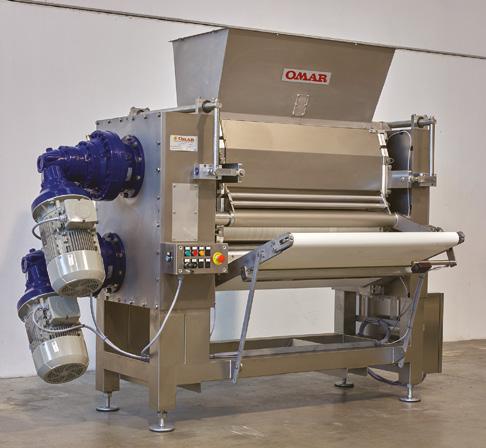
Tecnica Molitoria International Spring issue 2023 ˙ 107
Dough sheeter Omar Impianti.
R&D Center FEN Impianti.
Cimas in a strategic continent
“Our father imagined the presence of Cimas in Africa back when no one would have thought about it. It is through him that we owe the vision that the company developed in this continent, which changes at every longitude because of its historical vicissitudes, political changes, culture and religion”. With these words Mattia and Marco Nataloni, who respectively have crucial commercial and administrative roles, underline the inspiration that moved Cimas towards

sia, Morocco, Libya, Egypt, and Algeria (where, among others, there will be the delivery of a 100,000 tons-plant by July), through sub-Saharan countries, with a stable presence in Senegal, Sudan, Cameroon, Ethiopia, Zimbabwe, Congo and Ivory Coast. Thanks to a team that today embodies the competence and dynamism of Made in Italy production, now the company is the demonstration of successful relocation. It was supported not only by technical know-how and the use of high quality materials, but also by the ability to make the technological approach to the plants intuitive, thus bridging the cultural gap that had often led competitors to failure.
Today in Africa Cimas represents a company able to create new business opportunities in the growing markets of the agri-food chain, which represents a true strategic sector to help shape the future of the cereal, feed and human food industries. Senior decision-makers in the sector, companies, government agencies and experts meet every day with the representatives of Cimas, with the purpose to cooperate and enhance common growth.
this strategic geographical area for the company’s core-business, where the risk is repaid by the strong relationships built and by constant orders (most for plants exceeding 50,000 tons) placed at a consolidated pace.
Thanks to its foresight, Cimas is now in many African countries: from Tuni-
Cimas was founded more than 150 years ago in Ponte Felcino, near Perugia, and the actual AD is Genni Laurenzi (the daughter Giuseppe Puccio Laurenzi). The Italian Group now ranks among the most important European companies in the field of advanced storage systems and plants, aimed at the improvement of production processes in feed milling. In 2003 the company founded Cimas Industrie

108 ˙ Spring issue 2023 Tecnica Molitoria International
From left: Marco Nataloni, Genni Laurenzi and Mattia Nataloni (Cimas).
S.a.r.l. in the industrial district of Bizerte, in Tunisia, with the aim of having an operational tool able to guarantee skills and services in areas characterized by a high growth rate in agriculture and livestock. “We brought the name of our company in one of the most important continents in the world in terms of sustainable development perspectives and this fact confirms our propensity to invest and the assumption of entrepreneurial risk, of which my father became the initiator. The comparison with high-profile managers from foreign countries and the exchange of opinions and reflections with important Italian entrepreneurs was the confirmation of Cimas’s aim to be a protagonist of its reference sector. Africa has been and is going to be the place where innovation, dynamism and healthy relationships are going to be more and more
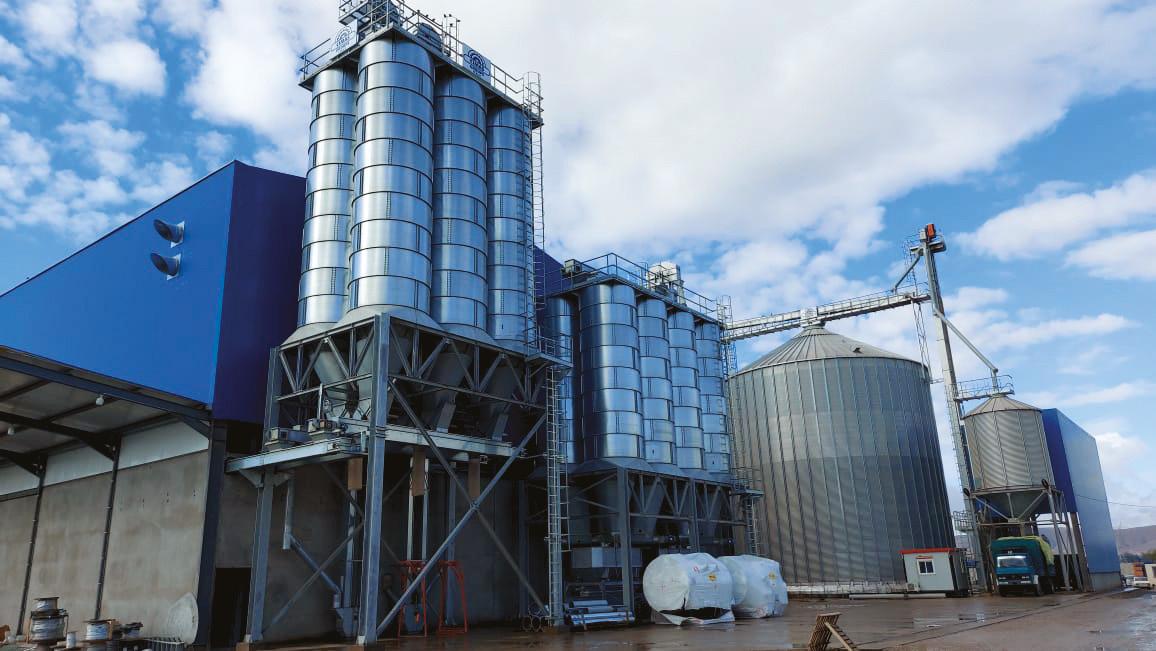
the key to success in our sector. This also confirms what we have been trying to do for 6 generations, i.e. to keep up with the technologies that the sector requires, to create new ones and to internationalize”, Mattia Nataloni concludes.
(Cimas - Via Val di Rocco 42 - 06134 Ponte
Felcino - PG - Italy - Tel. +39 075 5918339 - www.cimasitalia.it)
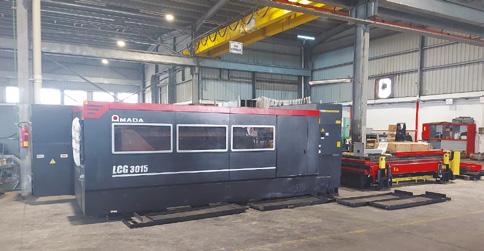

Tecnica Molitoria International Spring issue 2023 ˙ 109
machinery and equipment
Plant of a feed mill in Algeria with a production capacity of 34 tons/h in pellets (Cimas).
AMADA brand laser cutting system installed in a Cimas production plant in Tunisia.
Accessories for milling industry
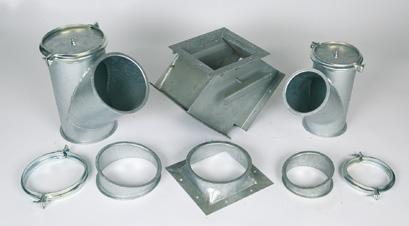
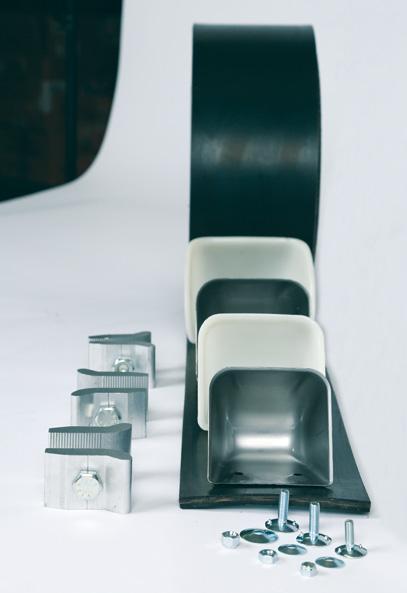

Agrinova has been selling spare parts for the milling industry for decades, such as piping enameled or stainless steel; tip tap and extruders; portable sewing machines and related yarns; brushes; iron sheets; screeners; stainless steel tissues; pesticides and its nebulizer; filter bags; automatic lubricators; moisture control equipment; appliances tend fabric “pneumapp”; along with a more generic
items such as belts and chains for industrial use.
The collaboration with Sefar, leader in the production of nylon fabrics for mill industry continues in a profitable way, thanks to the innovative products.
During 2022 the trimmed frames for cleaners and plansifters were added to the product range, as well as drilled rubber and pvc belts for bucket and pitch conveyors according to customer requests. The range of elevator buckets includes iron, stainless steel, plastic and nylon buckets with all bolts and washers.
(Agrinova - Via Togliatti 52 - 12038 Savigliano - CN - Italy - Tel. +39 0172 715488 - www.agrinova.it)

110 ˙ Spring issue 2023 Tecnica Molitoria International
Cleaners and tip tap (Agrinova).
Belts for bucket elevators, iron or resin buckets, bolts with or without nut (Agrinova).
Piping equipment (Agrinova).
The seek for nutrient-dense foods
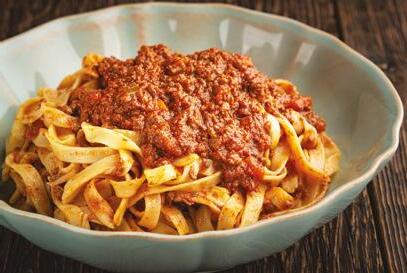
Consumer interest in eating more nutrient-dense foods continues to climb, with the 18% of them saying they look for these foods, that pack in a lot of beneficial nutrients relative to their energy content.
“Compared to 2021, this was the eating behaviour that had the biggest increase”, says food industry expert Julian Mellentin. In a recent survey in five countries by New Nutrition Business, of which Mellentin is director, nutrient density was mentioned by 18% of consumers, compared to 12% in 2021.

Of the countries surveyed (USA, UK, Australia, Brazil and Spain), Brazil had the highest level of interest in nutrient density, at 37%. Spain ranked second with 23%, and the UK scored lowest with 7%
of people interested. Consumers aged under 34 are more likely to be looking for nutrient density than older ones. And the trend of consuming fewer carbohydrates appears to be levelling off: across the five countries, 26% of interviewed said they were trying to eat fewer carbs in 2022, the same as in 2021.

“Consumer beliefs about food and health have become increasingly diverse over the last 10 years – Mellentin explains –. People do their own research online and try out new eating patterns to find out what works for them. And interestingly, most eating patterns reach a natural ceiling with about 25-30% of consumers. With the exception of sugar reduction, very few become a truly mass behaviour”. The trend to consume less meat, which grew very strongly from 2014 onwards, is also levelling off. In 2022, 24% of people said they were reducing their meat consumption, unchanged from 2020.
Brazil and Spain had the most meat reducers (31 and 30% respectively). The US scored lowest on meat reduction (18%). It’s a behaviour which is more common among consumers aged 55 and above.
As a sign of the growing diversity of consumers’ health beliefs, there are more emergent new health interests showing
Tecnica Molitoria International Spring issue 2023 ˙ 111 news
up, but which have been growing steadily over the past five years. Two examples are:
1. eating to improve hormonal health –followed by 8% of consumers in the US, Australia and Spain, slightly more in Brazil, and 4% in the UK. “It’s an issue that matters more to women than men and affects wellbeing over the whole of their adult lives. It’s an issue that women often say the medical mainstream pays little attention to. An increasing number are managing their hormonal health through food and supplements”.
A new identity

One of the leading companies in pasta manufacturing technologies, AXOR announces the launch of the new logo, representing the next step for the brand, based on featuring a modern, elegant font and lines that reflect the company’s evolution.

In 2021, Alapala, one of the leaders in grain processing technologies, became a majority shareholder of AXOR. This acquisition has enabled to expand its capabilities, to have the opportunity to grow
2. Avoidance of seed-oils – such as canola or sunflower – which is a concern for 6% of people, up from almost zero back in 2019, mainly related to concerns about inflammation.
“These emergent behaviours are much more important for corporate strategy than veganism – Mellentin adds –. A vegan diet is the choice followed by the lowest percentage of consumers, just 3%. Veganism has shown no increase since 2019. It’s notable that a topic which is often described by the media as growing is in reality a topic of least interest in the real world”.
in global markets, as well as to provide integrated innovative solutions in the Food Processing Industry.
The new logo is a modern representation of AXOR’s transition towards a futureoriented approach. The minimalist design embodies the company’s new ambition and its commitment to continue growing in the market. Featuring the Italian flag with an aesthetic appearance emphasizing that AXOR is an Italian company with high level of production quality, technology, know-how and engineering. “We believe that it’s important to stay ahead of the curve and embrace change – says Marco Mistroni, AXOR CEO –. The new logo represents the willingness to take bold steps to achieve future goals. We’re ambitious for the future and this new brand identity reflects that”.
(AXOR - Via Maestra Grande 20 - 44045 Cento - FE - Italy - Tel. +39 051 6842166www.axor-italia.com)
112 ˙ Spring issue 2023 Tecnica Molitoria International
Olocco joins the VDL Groep

Leader in the market of valves and components for pneumatic conveying and dosing of powder and granular products, Olocco has a strong market position in Europe, Asia, the Middle East, South and Central America.
Founded by Mario Olocco in 1970, in 2010 it was taken over by his sons Umberto and Andreana, and today it has 30 employees and a turnover of around € 9 million.

A reality that becomes part of VDL Groep BV, a family-group based in the Eindhoven Brainport region, the Netherlands. Founded in 1953, since 2017 the third generation of the van der Leegte family has been at the helm of the group with over 16,000 employees, operating in 19 countries, thanks to over 100 manufacturing operating companies in various fields of specialization. In 2021, combined annual sales amounted to € 4,995 billion.
Umberto Olocco remains executive and managing director of the company, which is renamed VDL Olocco, becoming the 107th operating company of the group. Andreana keep being the administrative manager.
The president and CEO of VDL Groep BV, Willem van der Leegte , states: “One of the ambitions is to further strengthen our position in the food industry. With VDL Olocco we add specialist knowledge and skills, and high-quality machinery. The benefits of the synergy will lead to a broader and more complete product package for customers”. “We have had a pleasant cooperation
with VDL Groep BV for 30 years. It is great that they understand the ethics and dynamics of a family business, as well as the needs of the next generation. The diversity of sectors in which the various companies are active will also offer many opportunities for our businesses. We look forward to further shaping and interacting with this newly initiated partnership,” says Umberto Olocco.
(Olocco - Via del Santuario 41 - 12045
Fossano - CN - Italy - Tel. +39 0172 692579
- www.olocco.eu)
news Tecnica Molitoria International Spring issue 2023 ˙ 113
At the operational headquarters in Fossano, with (from left): Carlos Ooijen (General Manager of VDL Industrial Products), Andreana Olocco (Administrative Manager), Umberto Olocco (Managing Director of Olocco), Willem van der Leegte (CEO of VDL Groep BV) and Rémi Henkemans (Senior Vice President of VDL Groep BV).
Retail Plaza by TuttoFood the format to discuss the future of retail
In just a few years, TuttoFood has become a reference point for both Italian and international organized distribution and retail, thanks to its ability to match demand with a diversified offer ranging from major companies to small highquality producers.
In addition to the business opportunities in the expo – at Fieramilano from 8 th to 11th May –, the heart of this all-round meeting of supply and demand is Retail Plaza by TuttoFood, a format developed in collaboration with Business International, Fiera Milano’s content company, in which the major Italian and global retail brands interact with companies and other stakeholders in a close dialogue that is difficult to achieve in other settings. Also confirmed the partnership with the Retail Institute, which has helped identify the current topics, which will also be addressed from a sustainability point of view: these include supply chain innovation, the opportunities offered by digital transformation – such as the metaverse – or the Green Retail approach.
“This year Retail Plaza will once again bring together industry players to discuss the most interesting emerging trends and the new ways in which the trends are be-
ing consolidated – comments Alberto Miraglia, general manager of Retail Institute –. A central theme will definitely be the new meaning of sustainability, which has gone from being a nice-to-have to a must-have. Sustainability across the board, i.e. with an ESG (Environment, Social & Governance) approach, now has to be part of corporate strategies, not least because it has become one of the prerequisites required by the banking system for funding. At the same time, companies face new challenges such as logistics, although we are now seeing a leveling off of online sales, or inflationary pressures, which have become difficult to reabsorb along the value chain. Also, new marketing strategies are needed to deal with phenomena such as the rapid growth of the private label, which is increasingly focused not only on price, but also on quality products”.
The experience of Appetite 4 Disruption also confirms that dialogue among supply chain stakeholders is essential to meet these challenges, as founder Cris Nulli confirms: “We are a community that shares insights into emerging trends with initiatives such as the Innovation Tours, whereby we take entre -


114 ˙ Spring issue 2023 Tecnica Molitoria International
agenda
preneurs, including small ones, to learn about new formats in the most interesting marketplaces. Recently, for example, we went to London and Madrid. The willingness to innovate in SMEs is one of the critical issues of the Italian economy, but this means that there are also great margins for growth, think for example of the South, which in many ways is still

a prairie to be explored. A major theme that we will have to analyze in the coming months will be the further evolution of multi-channel towards hybridization, for example with virtual brands becoming physical sales outlets and vice versa. Another theme will be the increasing integration of a quality food offer in retail in a drive-to-store perspective”.




Trade show Solids gets Italian flair
The Solids European Series is moving to the south of Europe. For the first time, the bulk solids industry trade show will take place in Italy as Solids Parma on 14 and 15 June, and the organiser Easyfairs is already expecting around 150 exhibitors and more than 4,000 trade visitors.



The region of Emilia-Romagna is one of the most attractive locations for foreign direct investment in Europe. Many of the exhibiting companies are already rooted in the north of Italy and work locally
with branch offices or sales partners. The Easyfairs Group will rely on its successfull all-inclusive stand concept. Exhibitors greatly appreciate the compact format and the ready-to-use exhibition stands, as they allow a time- and costsaving trade fair presence. On the two trade show days, exhibitors will present a broad spectrum of bulk solids technologies. The suppliers will show solutions and trends for all essential process steps in handling powders, granulates and bulk solids.
agenda Tecnica Molitoria International Spring issue 2023 ˙ 115
+ NEWS + INFORMATION
ve.com FOODEXECUTIVE TM 1-4.indd 2 29/03/21 16:40
www.foodexecuti
Host 2023, where innovation gets a sneak preview
Italian and foreign manufacturers are looking to Host 2023 – at Fieramilano from 13th and 17th October 2023 – as the place where to showcase a preview of their innovations, as the numbers confirm: more than 1,200 companies have already registered to date, and international companies, from 44 Countries, account for 45% of the total participants. The U.S. is among the most represented non-European areas alongside the strong presence of European manufacturer, particularly aside from Italy, Germany, Spain, France, Turkey, Switzerland, the Netherlands and the United Kingdom. This is thanks to the event formula, which combines an overview of innovation across professional hospitality with vertical insights in individual sectors, thanks to a layout in to three
macro-areas that enhance supply chain affinities among specialized compartments: to date 51% of the participants hail from the professional cateringbakery, pizza, and pasta segment; 31% from the coffee-tea, bar-coffee machines, and ice cream-pastry segment; and 18% from tableware.
Workshops and engaging competitions

The award is dedicated to products and solutions that stand out in terms of functionality, technology, environmental sustainability, ethics or social implications in three categories: Smart Label for its characterizing innovative content, Innovation Smart Label for innovation that exceeds established trends, and Green Smart Label for eco-sustainability.
IN ROME THE SYMPOSIUM ON GLUTEN FREE CEREALS
The 6th International Symposium on gluten-free cereal products and beverages 2023 (GF23), which will take place in Rome from 18 to 20 October, hosted by the Research Centre for Food and Nutrition of CREA, the Italian Council for Agricultural Research and Economics, and co-organised by ICC. The GF23 is entitled “Gluten-Free Cereal Products and Beverages: Designing Food for Individual Needs and Choices” and aims to bring together scientists and representatives of academia and the industry from all over the world, working in all fields of gluten-free grain products. The latest findings on coeliac disease research will be presented, as well as on foods and beverages developed for people who benefit from or consciously choose a gluten-free diet. The GF23 will focus on current issues, trends and perspectives: Coeliac disease and gluten allergies, nutrition and health, detection of allergens, food safety, plant breeding and gluten-free raw materials, functional foods, food processing and engineering, food sustainability, sensomic, marketing, legislation, and citizen perception covering the newest solutions for different products, including bakery products, dairy alternatives and beer.
116 ˙ Spring issue 2023 Tecnica Molitoria International
International events in Italy
The Chiriotti Editori Publishing house takes part at the green coloured events, where you can find our magazines free of charge

8-11 May 2023 - TuttoFood - Food industry show - Milan - www.tuttofood.it
15-17 May 2023 - Zoomark - Exhibition for petBologna - www.zoomark.it
23-25 May 2023 - SPS Italia - Automation exhibition - Parma - www.spsitalia.it
14-15 June 2023 - Solids - Exhibition for granules, powders and bulk solids technologies - Parmawww.solids-parma.de
13-17 October 2023 - Host - Exhibition of professional hospitality - Milan www.host.fieramilano.it
18-19 October 2023 - Save - Automation exhibition - Verona - www.exposave.com
18-20 October 2023 - ICC - 6th Symposium on Gluten-Free Cereal Products and BeveragesRome - www.icc.or.at
24-27 October 2023 - Cibus Tec - Food industry show - Parma - www.cibustec.it
22-23 November 2023 - In-Vitality - Exhibition of ingredients and functional foods - Milan www.in-vitality.it
16-17 January 2024 - MarcabyBologna FiereExhibition-conference on private label - Bologna www.marca.bolognafiere.it
20-24 January 2024 - Sigep - Exhibition of ice cream, pastry, bakery and coffee - Rimini www.sigep.it
20-24 January 2024 - AB Tech Expo - Exhibition of ice cream, pastry, bakery and coffee - Rimini www.abtechexpo.it
31 January - 3 February 2024 - FieragricolaExhibition on agriculture - Verona www.fieragricola.it
28 February - 1 March 2024 - PestMed Expo - Exhibition dedicated to the world of pest management - Bologna www.pestmed.it
8-12 September 2024 - IUFOST - World Congress of Food Science and Technology - Rimini www.iufost.org
27-30 May 2025 - Ipack-Ima - Exhibition of packaging and pasta industry - Milan www.ipackima.com
Worldwide events
4-10 May 2023 - Interpack - Packaging exhibition - Düsseldorf (Germany) - www.interpack.com
16-18 May 2023 - Graintech - Exhibition for the milling industry - Cairo (Egypt) - www.graintecheg.com
14-17 June 2023 - Propak Asia - Packaging exhibition - Bangkok (Thailand) www.propakasia.com
27-30 June 2023 - Fispal Tecnologia - Exhibition of the food and packaging industry - Sao Paulo (Brazil) - www.fispaltecnologia.com.br
6-8 July 2023 - Foteg - Exhibition of the food and beverage industry - Istanbul (Turkey) www.fotegistanbul.com
16-19 July 2023 - IFT Expo - Food technology exhibition-conference - Chicago (USA) www.iftevent.org
30 August-2 September 2023 - CNR FoodExhibition for the food and beverage industryIstanbul (Turkey) www.cnrfoodistanbul.com
agenda Tecnica Molitoria International Spring issue 2023 ˙ 117
12-14 September 2023 - Propak West AfricaPackaging exhibition - Lagos (Nigeria) www.propakwestafrica.com
26-28 September 2023 - Powtech - Exhibition on technologies for bulk materials - Nuremberg (Germany) - www.powtech.de
26-29 September 2023 - Alimentaria FoodtechFood industry show - Barcelona (Spain) www.alimentariafoodtech.com
7-11 October 2023 - Anuga - Food industry show - Cologne (Germany) - www.anuga.com
9-11 October 2023 - World Mycotoxin ForumConference on mycotoxins - Anversa (Belgium) www.worldmycotoxinforum.org
22-24 October 2023 - Natexpo - Organic exhibition - Paris (France) - natexpo.com
22-26 October 2023 - Iba - Bakery exhibitionMunich (Germany) - www.iba.de/en
23-25 October 2023 - Process Expo - Food industry show - Chicago (USA) - www.myprocessexpo.com
7-9 November 2023 - Gulfood ManufacturingFood industry show - Dubai (EAU) www.gulfoodmanufacturing.com
8-9 November 2023 - JTIC - Giornate tecniche per l’industria dei cereali - Dijon (France) www.jtic.eu
11-13 November 2023 - Foodtech - Salone dell’industria alimentare - Athens (Greece) www.foodtech.gr
14-16 November 2023 - SPS - Salone dell’automazione - Nuremberg (Germany) www.sps-exhibition.com
22-24 November 2023 - Swop - Salone del processo e del confezionamento - Shanghai (China) - www.swop-online.com
27-30 November 2023 - AndinaPack - Salone del processo e del confezionamento - Bogota (Colombia) - www.andinapack.com
12-14 December 2023 - Pacprocess MEA - Salone del processo e dell’imballaggio - Cairo (Egypt) www.pacprocess-mea.com
12-15 March 2024 - Alimentaria - Salone dell’alimentazione - Barcelona (Spain) www.alimentaria.com
12-15 March 2024 - Auspack - Salone per l’industria dell’imballaggio - Melbourne (Australia) www.auspack.com.au
12-14 March 2024 - Victam Asia - Salone sull’alimentazione e la salute degli animaliBangkok (Thailand) - www.victamasia.com
19-22 March 2024 - Anuga FoodTec - Salone dell’industria alimentare - Cologne (Germany)
www.anugafoodtec.com
10-11 April 2024 - MeetingPack - Salone dell’imballaggio - Valencia (Spain)
www.meetingpack.com
14-17 May 2024 - Hispack - Salone dell’industria alimentare e imballaggio - Barcelona (Spain)
www.hispack.com
10-14 June 2024 - Achema - Salone mondiale della chimica - Frankfurt (Germany)

www.achema.de
19-20 June 2024 - Snackex - Salone degli snackStockholm (Sweden) - www.snackex.com
3-5 September 2024 - Anuga Horizon - Salone dell’alimentazione - Cologne (Germany)
www.anuga-horizon.com
24-26 September 2024 - FachPack - Salone dell’imballaggio - Nuremberg (Germany)
www.fachpack.de
19-23 October 2024 - Sial - Salone dell’alimentazione - Paris (France)
www.sialparis.com
26-29 October 2024 - Südback - Salone della panificazione - Stuttgart (Germany)
www.messe-stuttgart.de/suedback
3-6 November 2024 - Packexpo - Salone dell’imballaggio - Chicago (USA)
www.packexpointernational.com
4-7 November 2024 - All4Pack - Salone dell’imballaggio - Paris (France)
www.all4pack.com
3-5 June 2025 - Victam International e VIV Europe - Salone per l’industria alimentare - Utrecht (Holland) - www.victaminternational.com
www.viveurope.nl
14-17 September 2025 - IBIE Baking ExpoSalone dei prodotti da forno - Las Vegas (USA)
www.bakingexpo.com
118 ˙ Spring issue 2023 Tecnica Molitoria International
SUPPLIER DIRECTORY 20 SUPPLIER DIRECTORY 32
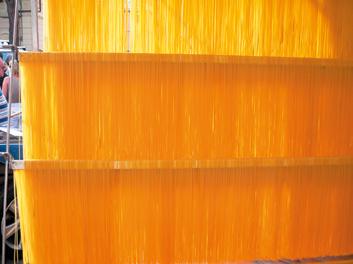
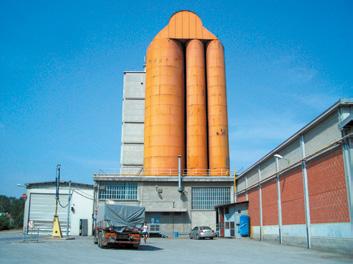
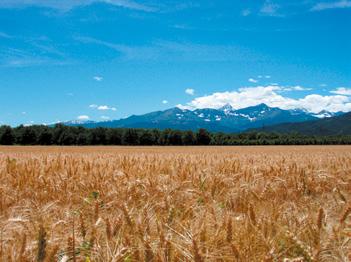

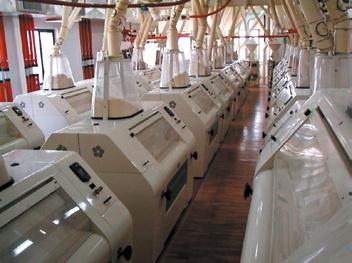
SUPPLIER DIRECTORY
3U VISION SRL
Via Ugo La Malfa 20 40026 - Imola BO - ITALY +39 0542 1881791 info@3uvision.com www.3uvision.com
AGRINOVA SRL
Via Togliatti 52 12038 - SAVIGLIANO CN - ITALY +39 0172 715488 info@agrinova.it www.agrinova.it
ANSELMO IMPIANTI SRL
Via Fossano 33 12041 - BENE VAGIENNA CN - ITALY +39 0172 654755 anselmo@anselmoitalia.com www.anselmoitalia.com
ANTENORE VISENTIN SRL
Via Cartera 39 31100 - TREVISO TV - ITALY +39 0422 300311 info@antenorevisentin.com www.antenorevisentin.com
AXOR SRL
Via Maestra Grande 20 44045 - CENTO FE - ITALY +39 051 6842166 info@axor-italia.com www.axor-italia.com
BECCARIA SRL
Via Sperino 46 12030 - SCARNAFIGI CN - ITALY +39 0175 274737 beccaria@beccaria.it www.beccaria.it
BORGHI SRL
Via Paradello 7 45037 - MELARA RO - ITALY +39 0425 89689 info@borghigroup.it www.borghigroup.it
BRAMBATI SPA
Via Strada Nuova 37
27050 - CODEVILLA PV - ITALY +39 0383 373100 info@brambati.it www.brambati.it
BÜHLER SPA
Via San Bovio 3 - San Felice
20090 - SEGRATE MI - ITALY +39 02 703111 buhler.milan@buhlergroup.com www.buhlergroup.com
CAREDI SRL
Via Sant’Elena 52
31057 - SANT’ELENA DI SILEA TV - ITALY +39 0422 94073 info@caredi.it www.caredi.it
CBC SRL
S S 75 C. U. Km 4,190 - Z.I.
06083 - OSPEDALICCHIO BASTIA UMBRA PG - ITALY +39 075 808151 sales@concetti.com www.concetti.com
CIMAS SRL
Via Val di Rocco 42
06134 - PONTE FELCINO PG - ITALY
+39 075 5918339
commerciale.cimas@cimasitalia.it www.cimasitalia.it
CIMBRIA SRL
Via Colombarotto 2
40026 - IMOLA - BO - ITALY
+39 0542 361423
seainfo@agcocorp.com www.cimbria.com
graders, sorters
Cereal Equipment
cereal milling equipment belts brush sieves pipes, piping clothing, gaskets stitching ancillary equipment sleeves bucket elevators
pasta machines
Feeds Pasta Mills
cereal milling equipment
pasta machines
cereal milling equipment feed equipment silos hammer mills feed mixers extractors pneumatic conveyors
cereal milling equipment bucket elevators dust collectors, cyclones pipes, piping silos fans, blowers ancillary equipment sifters sieves hoppers rice milling trieurs
pasta machines coffee equipment silos feeders, proportioners, dosers roasters crackers extractors peelers cutting machines peelers
washers pellet mills driers alveographs cereal milling equipment feed equipment pasta machines confectionery bakery equipment dampers sifters farinographs roller mills moisture testers silos pasta presses purifiers plansifter extruders coffee equipment cocoa processing machines granulators granulating machines degerminators rice millings courers hammer mills refiners pasta driers
Ancillary Packaging Feeds Pasta Mills Cereal Equipment Name Street City Tel. E-mail web Name Street City Tel. E-mail web Name Street City Tel. E-mail web Name Street City Tel. E-mail web Name Street City Tel. E-mail web Name Street City Tel. E-mail web Name Street City Tel. E-mail web Name Street City Tel. E-mail web Name Street City Tel. E-mail web Name Street City Tel. E-mail web Name Street City Tel. E-mail web Name Street City Tel. E-mail web Name Street City Tel. E-mail web
graders, sorters
trieurs silos
machines palletizers de-
weight checker silos ✔ ✔ ✔ ✔ ✔ ✔ ✔ ✔ ✔ ✔ ✔ ✔ ✔ ✔ ✔ ✔ ✔ ✔ ✔ ✔ ✔ ✔ ✔ ✔ ✔ ✔ ✔ ✔ ✔ ✔ ✔ ✔
packaging equipment sacks filling
palletizers
Ancillary Packaging
SUPPLIER DIRECTORY
CMB SRL Via Anconetta 16 36063 - MAROSTICA VI - ITALY +39 0424 780176 info@cmbsrl.com www.cmbsrl.com
CMF FERRARI CARLO SRL
Via Venezia 3 25037 - PONTOGLIO BS - ITALY +39 030 7376774 amministrazione@cmf-italia.it www.cmf-italia.it
COLOMBO PIETRO DI A. COLOMBO & C SNC
Via Marco D’ Oggiono 21 - C.P. 63 64 23848 - OGGIONO LC - ITALY +39 0341 576251 info@colombopietro.it www.colombopietro.it
CONCETTI GROUP
S S 75 C.U. Km 4,190 - Fraz. Ospedalicchio
06083 - BASTIA UMBRA PG - ITALY +39 075 801561 salesitaly@concetti.com www.concetti.com
CPS SRL
Via Montecassino 47 - Località Larghe
40050 - FUNO DI ARGELATO BO - ITALY +39 051 6647979 info@cpscucitrici.it www.cpscucitrici.it
CRISTIANO TORRE SRL
Via Rezza 24/162
16033 - LAVAGNA GE - ITALY +39 0185 311991 torre@torre-eng.com www.torre-eng.com
CUSINATO GIOVANNI SRL
Via Monte Pelmo 8
35018 - SAN MARTINO DI LUPARI PD - ITALY +39 049 9440146 info@cusinato.com www.cusinato.com
D.V. SRL DEPURATION VEHICULER
Via E. Ellero 9
33080 - CUSANO DI ZOPPOLA PN - ITALY +39 0434 574192 info@dvsrl.com www.dvsrl.com
DEFINO & GIANCASPRO SRL
Via Archimede 27/33 - Zona Pip
70024 - GRAVINA IN PUGLIA BA - ITALY +39 080 3266196 info@defino-giancaspro.com www.defino-giancaspro.com
DELLAVALLE SRL
Via Per Suno 2
28040 - MEZZOMERICO NO - ITALY +39 0321 97097 dellavalle@cerealmachinery.it www.cerealmachinery.it
DOLZAN IMPIANTI SRL
Via Roma 260
35015 - GALLIERA VENETA PD - ITALY +39 049 5969375 dolzan@dolzan.com www.dolzan.com
DUETTI PACKAGING SRL
Via Leonardo da Vinci 43
35015 - GALLIERA VENETA - PD - ITALY +39 049 9471274 sales@duettipackaging.com www.duettipackaging.com
ELICA ASM SRL
Via della Tecnica 3/2
40050 - ARGELATO BO - ITALY +39 051 6630419 info@elica-asm.com www.elica-asm.com
feeders, proportioners, dosers
feed equipment flakers driers roller mills toasters sacks filling machines scourers
flour, feed, rice mills handling and storage sub supplying screws, worms ancillary equipment
packaging and bottlingh handling and storage packaging equipment sacks filling machines depalletizers palletizers palletizing robots stitching
stitching sacks filling machines
analysis laboratories, tests
pasta machines material handling and storage silos bucket elevators sieves sifters pipes, pipings crews, worms conveyor belts silos hoppers vibrators
probes
pipes, piping ancillary equipment cereal milling equipment
rice milling aspirators, suction units, exhaust units dust collectors, cyclones scourers bucket elevators plansifter bleachers graders, sorters
packaging equipment vffs vertical form fill seal machines vacuum packaging machines filling closing machines
packaging equipment palletizers, carton formers, strecth wrappers
graders, sorterspackaging
Ancillary Packaging Feeds Pasta Mills Cereal Equipment Name Street City Tel. E-mail web Name Street City Tel. E-mail web Name Street City Tel. E-mail web Name Street City Tel. E-mail web Name Street City Tel. E-mail web Name Street City Tel. E-mail web Name Street City Tel. E-mail web Name Street City Tel. E-mail web Name Street City Tel. E-mail web Name Street City Tel. E-mail web Name Street City Tel. E-mail web Name Street City Tel. E-mail web Name Street City Tel. E-mail web ✔ ✔ ✔ ✔ ✔ ✔ ✔ ✔ ✔ ✔ ✔ ✔ ✔ ✔ ✔ ✔ ✔ ✔ ✔ ✔
SUPPLIER DIRECTORY
ELVEM SRL
Via delle Industrie 42 36050 - CARTIGLIANO -VI - ITALY +39 042 4513972 mail@elvem.it www.elvem.it
EUROFINS TECNA SRL Area Science Park, LOC. Padriciano 99 34149 - TRIESTE TS - ITALY +39 040 3755341 tecna@tecnalab.com https://tecna.eurofins-technologies.com
FAVA SPA Via IV Novembre 29 44042 - CENTO FE - ITALY +39 051 6843411 info@fava.it www.fava.it
FRAGOLA F.LLI SPA Via Del Caminaccio 2 06088 - SANTA MARIA ANGELI PG - ITALY +39 075 805291 commerciale@fragolaspa.com www.fragolaspa.com
GENERAL DIES SRL
Via Strà 182 37030 - COLOGNOLA AI COLLI VR - ITALY +39 045 7650600 info@generaldies.com www.generaldies.com
GRANAIR
Area industriale di Larisa - PO Box 3049 41500 - LARISA - GREECE +30 2410 541641 info@grainar.com www.grainar.com
GRESPAN IMPIANTI TECNOLOGICI SRL
Via Roma 144
31020 - CASTRETTE DI VILLORBA TV - ITALY +39 0422 608848 info@grespan.it www.grespan.it
GROUP PACK SRL
Strada del Lavoro 71
47892 - ACQUAVIVA REPUBLIC OF S. MARINO - ITALY +378 0549 911186 info@group-pack.com www.group-pack.com
IGUS SRL
Viale delle Rovedine 4
23899 - ROBBIATE LC - ITALY +39 039 59061 igusitalia@igus.it www.igus.it
IMAGIN SOLUTIONS SRL
Via Dante Alighieri 25
24030 - MEDOLAGO BG - ITALY +39 035 902103 info@bonfanti.eu www.bonfanti.eu
IMECO – EFFEGIELLE SRL
Via delle Viole 23
26100-CREMONA CR - ITALY +39 0372 496826 sales@imeco.org www.imeco.org
IMMAC SRL
Via Strada Nuova 25
27050 - CODEVILLA PV - ITALY +39 0383 373044 info@immacsrl.com www.immacsrl.com
INTECH SRL
Via A Vivaldi - Traversa I, 1
25012 - CALVISANO - BS - ITALY
+39 030 968299
intech@intechsrl.it www.intechsrl.it
motors
analysis equipmentchemicalscleaning disinfection
pasta machines pasta presses pasta driers emulsifiers
feed equipment silos crumblers pellet mills
feed equipment
yeast, leavens
feed equipment silos
sacks filling machines
ancillary equipmentholdersductschains
driers
Machines for dosing, weighing, bagging, palletizing, dampening controller and outflow free-flowing electronic controller.
cereal milling equipment roller mills plansifter material handling and storage aspirators, suction units, exhaust units
silos
Ancillary Packaging Feeds Pasta Mills Cereal Equipment Name
E-mail web Name Street City Tel. E-mail web Name Street City
E-mail web Name Street City Tel. E-mail web Name Street City Tel. E-mail web Name Street City Tel. E-mail web Name Street City Tel. E-mail web Name
City
E-mail web Name
City Tel. E-mail web Name
E-mail
Name
E-mail web Name
City Tel. E-mail web Name Street City Tel. E-mail web
Street City Tel.
Tel.
Street
Tel.
Street
Street City Tel.
web
Street City Tel.
Street
✔ ✔ ✔ ✔ ✔ ✔ ✔ ✔ ✔ ✔ ✔ ✔ ✔ ✔ ✔ ✔ ✔ ✔ ✔ ✔ ✔ ✔ ✔ ✔ ✔ ✔ ✔ ✔ ✔ ✔ ✔ Ancillary Packaging Feeds
Pasta Mills Cereal Equipment
SUPPLIER DIRECTORY
IST SRL Via Corazza 22 44124 - FERRARA FE - ITALY +39 053 2099536 info@istsort.com www.istsort.com
ITALPACK SRL Via Costa 106 47822 - SANTARCANGELO DI ROMAGNA RN - ITALY +39 0541 625157 italpack@italpack.net www.italpack.net
ITALSAVE SRL Via Vecellio 13 31025 - SARANO DI SANTA LUCIA DI PIAVE TV - ITALY +39 0438 460640 info@italsave.it www.italsave.it
ITALVIBRAS SPA
Via Ghiarola Nuova 22 26 41042 - FIORANO MODENESE MO - ITALY +39 0536 804634 italvibras@italvibras.it www.italvibras.it
KONICA MINOLTA SENGING EUROPE B.V. Viale Fulvio Testi 128
20092 - CINISELLO BALSAMO MI - ITALY +39 02 84948800 info.italia@bs.konicaminolta.it www.konicaminolta.eu
LANDUCCI SRL
Via Landucci 1
51100 - PISTOIA PT - ITALY +39 0573 532546 landucci@landucci.it www.landucci.it
MAGNETICA TORRI SNC
Via Giovanni XXIII 10
25086 - REZZATO BS - ITALY +39 030 2594184 info@magneticatorri.it www.magneticatorri.it
MAIN TECH SRL
Via Fornace I Ia Strada 16
35010 - San Giorgio delle Pertiche PD - ITALY +39 049 7968480 info@maintechworld.it www.maintechworld.it
MARANI SNC
Frazione Casalfoschino 16/BIS
43018 - SISSA TRECASALI PR - ITALY +39 0521 877223 info@marani.it www.marani.it
MAZZOLARI SRL
Via Aldo Moro 14 - Z. I. Cignone
26020 - CORTE DE’ CORTESI CR - ITALY +39 0372 926002 info@mazzolariricambi.it www.mazzolariricambi.it
MIG SRL
Via Guglielmo Garconi 21
24040 - FORNOVO S GIOVANNI BG - ITALY +39 0363 351919 ufficioacquisti@migsrl.it www.migsrl.it
MIX SRL
Via Volturno 119/a
41032 - CAVEZZO MO - ITALY 0535 46577 info@mixitaly.com www.mixitaly.com
MOLITECNICA SUD SNC
Cda Torre La Macchia
70022 - ALTAMURA BA - ITALY +39 080 3101016
info@molitecnicasud.it www.molitecnicasud.it
graders, sorters
feeders, proportioners, dosers filling closing machines vffs vertical form fill seal machines sacks filling machines packaging equipment shrink tunnels
assistance, maintenance paints, lining, coating
vibrators
automation and controls
pasta machines dies cutting machines washing machines
ancillary equipment
cereal milling equipment assistance, maintenance
ancillary equipment
meat, fish equipment
ancillary equipment feed mixers filters granulators nozzles level indicators granulating machines
cereal milling equipment
Ancillary Packaging Feeds Pasta Mills Cereal Equipment Name Street City
E-mail web Name Street City Tel. E-mail web Name Street City
E-mail web Name Street City Tel. E-mail web Name Street City Tel. E-mail web Name Street City Tel. E-mail web Name Street City Tel. E-mail web Name Street City Tel. E-mail web Name Street City Tel. E-mail web Name Street City Tel. E-mail web Name Street City Tel. E-mail web Name Street City Tel. E-mail web Name Street City Tel. E-mail web ✔ ✔ ✔ ✔ ✔ ✔ ✔ ✔ ✔ ✔ ✔ ✔ ✔ ✔ ✔ ✔ ✔ ✔
Tel.
Tel.
SUPPLIER DIRECTORY
MULMIX SRL
Via Palladio 7, Marsango 35010 - CAMPO SAN MARTINO PD - ITALY +39 049 9638211 mulmix@mulmix.it www.mulmix.it
NAMAD DI MADDALENA NANNI
Via Diano d’Alba 5/7 00166 - ROMA RM - ITALY +39 06 6140707 info@namadimpianti.com www.namadimpianti.com
NATRO TECH SRL
Via Copernico snc 24053 - BRIGNANO DI GERA D’ADDA BG - ITALY +39 0363 916130 info.natro-tech@mondigroup.com www.mondigroup.com/natro
NEWPHARM SRL
Via Tremarende 24/B
35010 - SANTA GIUSTINA IN COLLE PD - ITALY +39 049 9302876 info@newpharm.it www.newpharm.it
NICCOLAI TRAFILE SRL
Via Cardarelli 19 - Z I Sant’Agostino
51100 - PISTOIA PT - ITALY +39 0573 92731 niccolai@niccolaitrafile.it www.niccolai.com
NORD MOTORIDUTTORI SRL
Via Newton 22
40017 - SAN GIOVANNI IN PERSICETO BO - ITALY +39 051 6870711 info@nord-it.com www.nord.com
NTE Process SRL
Via Milano 14/N
20064 - GORGONZOLA MI - ITALY +39 02 9516875 info@nte-process.com www.nte-process.com
OBR BULGARELLI SRL
Via Parri 3
42045 - LUZZARA RE - ITALY +39 0522 976972 obr@obr.it www.obr.it
OCRIM SPA
Via Massarotti 76
26100 - CREMONA CR - ITALY +39 0372 4011 info@ocrim.com www.ocrim.com
OFFICINE LOPORCARO SRL
Via Del Grano 1 - Z.I.
70022 - ALTAMURA BA - ITALY +39 080 3101167 info@loporcaro.it www.loporcaro.it
OLI SPA
Via Canalazzo 35
41036 - MEDOLLA MO - ITALY +39 0535 410611 info@olivibra.com www.olivibra.com
OLOCCO SRL
Via Del Santuario 41
12045 - FOSSANO CN - ITALY +39 0172 692579 olocco@olocco.it www.olocco.eu
PAGANI IMBALLAGGI SNC
Via G. Morandi 32
21047 - SARONNO VA - ITALY
+39 02 96701343
info@paganiimballaggi.com
www.paganiimballaggi.com
feed equipment silos driers hammer mills
analysis equipment
sacks filling machines
disinfestation
pasta machines dies washing machines dough sheeter cutting machines
variable-speed drives, reducers
pilot plantslevel indicators
ancillary equipment cereal milling equipment feed equipment
cereal milling equipment silos roller mills cleaners pneumatic conveyors purifiers degerminators washers hammer mills
cereal milling equipment
vibrators
ancillary equipment valves pipe fittings pneumatic conveyors
bundling machines sacks filling machines palletizers depalletizers palletizing robots sealing welding machines pallet wrapping, hooding machines
Ancillary Packaging Feeds Pasta Mills Cereal Equipment Name Street City Tel. E-mail web Name Street City Tel. E-mail web Name Street City Tel. E-mail web Name Street City Tel. E-mail web Name Street City Tel. E-mail web Name Street City Tel. E-mail web Name Street City Tel. E-mail web Name Street City Tel. E-mail web Name
City Tel. E-mail
Name
Tel. E-mail web Name Street
Tel. E-mail web Name Street City Tel. E-mail web Name Street City Tel. E-mail web
Street
web
Street City
City
✔ ✔ ✔ ✔ ✔ ✔ ✔ ✔ ✔ ✔ ✔ ✔ ✔ ✔ ✔ ✔ ✔ ✔ ✔ ✔ ✔ ✔ Ancillary Packaging Feeds Pasta Mills Cereal Equipment
SUPPLIER DIRECTORY
PAGLIERANI SRL Via Santarcangiolese 5 47825 - TORRIANA RN - ITALY +39 0541 311111 info@paglierani.com www.paglierani.com
PARTISANI SRL Via Buli 2 47122 - FORLI’ FC - ITALY +39 0543 796165 info@partisani.com www.partisani.it
PERKIN ELMER ITALIA SPA Viale dell’Innovazione 3 20126 - MILANO - MI - ITALY +39 02 36012500 cc.italy@perkinelmer.com www.perkinelmer.it
PLP LIQUID SYSTEMS SRL Via Provinciale SP 21,303
29018 - LUGAGNANO VAL D’ARDA PC - ITALY +39 0523 891629 info@plp-liquidsystems.net www.plp-liquidsystems.net
PRO-TECH ITALIA SRL
Via Guido Rossa 13/a
16012 - BUSALLA GE - ITALY +39 010/9642386 info@pro-techitalia.com www.pro-techitalia.com
RAM ELETTRONICA SRL
Via Ospedaletto km 1,700 int D
76123 - ANDRIA BAT - ITALY +39 0883/553719 info@ramelettronica.it www.ramelettronica.it
RAMBALDO ANTONIO
Via Tessara 9/11
35010 - SANTA MARIA DI NON - CURTAROLO PD - ITALY +39 049 557094 info@rambaldoantonio.com www.rambaldoantonio.com
RICCIARELLI SPA
Via U. Mariotti 143 - Z I SANT’AGOSTINO
51100 - PISTOIA PT - ITALY +39 0573 44571 info@ricciarellispa.it www.ricciarellispa.it
RIMA SRL
Via Viazza Sinistra 2
40050 - MEZZOLARA DI BUDRIO BO - ITALY +39 051 805912 rimarticolitecnici@libero.it www.articolitecnici.it
ROSA CATENE SPA
Via San Rocco 5/b
23801 - CALOLZIOCORTE LC - ITALY +39 0341 630294 rosa@rosacatene.com www.rosacatene.com
SAINT GOBAIN ABRASIVI SPA
Via per Cesano Boscone 4
20090 - CORSICO MI - ITALY +39 02 44851 stefano.natalicchio@saint-gobain.com www.saint-gobain.com
SARP srl
Via Montebelluna 43 - loc. S. Andrea o. m.
31033 - CASTELFRANCO VENETO TV - ITALY +39 0423 482633 sarp@sarp.it www.sarp.it
SCOLARI SRL
Via Romiglia 2
25050 - PADERNO FRANCIACORTA BS - ITALY +39 030 6848012
info@scolarisrl.com www.scolarisrl.com
bundling machines sacks filling machines palletizers depalletizers palletizing robots sealing welding machines pallet wrapping, hooding machines filling closing machines
cereal milling equipment cleaners, stone mills
analysis equipment
feed equipment, liquid and powder dosing, coating
material handling and storage silos conveyor belts bucket elevators hoppers packaging
electrical installation, automation and control
ancillary equipment
weighers, scales
stitching sacks filling machines ancillary equipment
chains
sieves
fresh pasta machinery proving tunnel freezing tunnels pasta machines fresh pasta pasteurizers
flour, feed, rice mills driers
Ancillary Packaging Feeds Pasta Mills Cereal Equipment Name Street City Tel. E-mail web Name Street City Tel. E-mail web Name Street City Tel. E-mail web Name Street City Tel. E-mail web Name Street City Tel. E-mail web Name Street City Tel. E-mail web Name Street City Tel. E-mail web Name Street City Tel. E-mail web Name Street City Tel. E-mail web Name Street City Tel. E-mail web Name Street City Tel. E-mail web Name Street City Tel. E-mail web Name Street City Tel. E-mail web ✔ ✔ ✔ ✔ ✔ ✔ ✔ ✔ ✔ ✔ ✔ ✔ ✔ ✔ ✔ ✔ ✔ ✔ ✔ ✔ ✔ ✔ ✔ ✔ ✔
SUPPLIER DIRECTORY
SEFAR ITALIA SRL
Via Nazioni Unite 44 10093 - COLLEGNO TO - ITALY +39 011 42001 info@sefar.it www.sefar.it
SGM LEKTRA SRL
Via Papa Giovanni XXIII 49 20090 - RODANO MI - ITALY +39 02 95328257 info@sgm-lektra.com www.sgm-lektra.com
SIAT SRL
Via Circonvallazione Ovest 53 40050 - CASTELLO D’ARGILE BO - ITALY +39 051 977027 info@siat.it www.siat.it
SIMA SRL
Via Marmolada 15 - Z I Nord 31027 - SPRESIANO TV - ITALY +39 0422 881034 info@simaimpianti.net www.simaimpianti.net
SIRCEM CM SPA
Via Armando Diaz 19 84018 - SCAFATI SA - ITALY +39 081 8631205 sircem@sircem.it www.sircem.it
TECALIT SRL
Via Leonardo 60
35018 - SAN MARTINO DI LUPARI PD - ITALY +39 049 9460985 tecalit@tecalit.it www.tecalit.it
TECHNOBINS SRL
Via P. Nenni 4
42048 - RUBIERA RE - ITALY +39 0522 943002 techbins@tin.it www.technobins.it
TECNOGRAIN CARLINI SRL
Via Aldo Moro 23
46010 - CURTATONE MN - ITALY +39 0376 478584 info@tecnograin.com www.tecnograin.com
TUBIMONT SRL
Corso Asti 2 I
12050 - GUARENE CN - ITALY +39 0173 228414 info@tubimont.it www.tubimont.it
VEGA ITALIA SRL
Via Fermi 8 20090 - ASSAGO MI - ITALY +39 02 8914081 info.it@vega.com www.vega.com
VERDI SPA
Via Volta 7 1
42024 - CASTELNUOVO DI SOTTO RE - ITALY +39 0522 683899 info@verdispa.com www.verdispa.com
WAM ITALIA SPA
Via di Sotto 9/A
41032 - PONTE MOTTA DI CAVEZZO MO - ITALY +39 0535 740111 gianni.salvioli@wamgroup.com www.wamgroup.com
ZANIN F.LLI SRL
Viale Delle Industrie 1
31032 - CASALE SUL SILE TV - ITALY +39 0422 785444 info@zanin-italia.com www.zanin-italia.com
ancillary equipment textiles frames
automation and controls
brushes
ancillary equipment dust collectors, cyclones aspirators, suction units, exhaust units
pasta machines silos feeders, proportioners, dosers pneumatic conveyors filters bucket elevators control panels industrial pc
pasta machines pasta presses pasta driers
material handling and storage silos
refrigerating units
feeders, proportioners, dosers
automation and controls
ancillary equipment bucket elevators screws, worms conveyor belts level indicators
material handling and storage ancillary equipment conveyors valves
Ancillary Packaging Feeds Pasta Mills Cereal Equipment Name Street City Tel. E-mail web Name Street City Tel. E-mail web Name Street City Tel. E-mail web Name Street City Tel. E-mail web Name Street City Tel. E-mail web Name Street City Tel. E-mail web Name Street City Tel. E-mail web Name Street City Tel. E-mail web Name Street City Tel. E-mail web Name Street City Tel. E-mail web Name Street City Tel. E-mail web Name Street City Tel. E-mail web Name Street City Tel. E-mail web
ancillary equipment
driers
✔ ✔ ✔ ✔ ✔ ✔ ✔ ✔ ✔ ✔ ✔ ✔ ✔ ✔ ✔ ✔ ✔ ✔ ✔ ✔ ✔ ✔ ✔
Year 73
n. 4 - April 2023
Monthly ISSN 0040-1862
BIANNUAL IN ENGLISH
Spring Issue 2023 SUPPLEMENT OF
Tecnica Molitoria International is published once a year with a circulation of 6,500 free copies either sent by air mail or distributed at international exhibitions. Furthermore it is sent to over 18,500 email addresses.




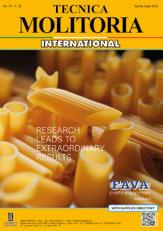
If your company is not yet in the mailing list and you wish to receive the next issue, please complete the form below.
MONTHLY IN ITALIAN
Since 1950 Chiriotti Editori has published the monthly technical magazine Tecnica Molitoria devoted to flour and feed mills, storage, rice and pasta industries. Even though it is in Italian, this journal is sent to paying subscribers all over the world. In each issue, scientific and technical studies carried out by universities and researchers are featured, besides a rich choice of articles and news about new machinery, plants, equipment and technology, new product developments, economical and legislative news, statistics and trends, congresses and exhibitions, and so on. To receive a free sample copy, together with a subscription module, please complete the form below.
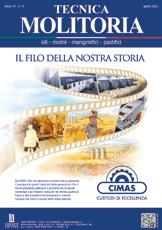
FREE sample request form to fill in and send to info@chiriottieditori.it or go to shop.chiriottieditori.it
Please send me a sample copy of: o o
Surname and name Company name
Type
Address City ................................................................................................... State/Province ....................................................... Country .............................................................................................................. Zip/postal code ................................... e-mail .............................................................................................................................................................................. ! CHIRIOTTI EDITORI SRL Viale Rimembranza, 60 - 10064 PINEROLO (TO) - Tel. + 39 0121 378147 - www.chiriottieditori.it - abbonamenti@chiriottieditori.it
of business
Group - Bastia Umbra (I) ............19
Cusinato - S. Martino di Lupari (I) 79
Advertisers index
Defino & Giancaspro -
Gravina in P. (I) 7
Fava - Cento (I) cover 1-cover 2-1
Fragola - S. Maria Angeli (I) ............... 4-5
Imeco - Cremona (I) 29
Immac - Codevilla (I) ...........................30
IST - Ferrara (I) October
Landucci - Pistoia (I) cover 3
Molitecnica Sud - Altamura (I) .............33
Mulmix - Campo San Martino (I) 25
Niccolai Trafile - Pistoia (I).....................9
OBR Bulgarelli - Luzzara (I) 6
Ocrim - Paglierani - Cremona (I) 2-3
Officine Loporcaro - Altamura (I)...........8
Olocco - Fossano (I) ..................... cover 4
Partisani - Forlì (I) October
P.L.P. Liquid Systems -
Lugagnano Val d’Arda (I) 15
Pro-Tech Italia - Busalla (I) ..................26
Ram Elettronica - Andria (I) 10
Rambaldo Antonio - Curtarolo (I) 57
Ricciarelli - Pistoia (I) ...........................17
Siat - Castello d’Argile (I) 20
Sima - Spresiano (I) .............................24
Sircem CM - Scafati (I) 12-13
Tecalit - S. Martino di Lupari (I) 23
Technobins - Rubiera (I) ......................21
Wamgroup - Cavezzo (I) 27
3U Vision - Imola (I) ......................................95 Agrinova - Savigliano (I) ............................. 110 Alapala - Çorum (TR) .................................. 112 Anselmo Group - Bene Vagienna (I)............ 106 Axor - Cento (I) ........................................... 112 Borghi - Melara (I) 102 Cimas - Ponte Felcino (I) ............................. 108 CMB - S. Martino di Lupari (I) 84 Cusinato Giovanni - S. Martino di Lupari (I)...87 Fava - Cento (I) 103 FEN Impianti - Tezze sul Brenta (I) .............. 106 Imeco - Cremona (I) 90 LTA - Thiene (I) ............................................ 106 MAP-WamgroupPonte Motta di Cavezzo (I)...........................83 Molitecnica Sud - Altamura (I) ......................80 Ocrim - Cremona (I) ......................................94 Officine Loporcaro - Altamura (I) ..................89 Olocco - Fossano (I) .................................... 113 Omar Impianti - Sala Bolognese (I) 106 PLP SystemsLugagnano Val d’Arda (I) ............................96 PRO-Tech Italia - Busalla (I) ..........................99 Ricciarelli - Pistoia (I) ....................................93 Sanabel Group International - Dbayeh (LB) 94 Sefar - Collegno (I) 110 S.i.a.t. - Castello d’Argile (I) ..........................91 Sircem CM - Scafati (I) .................................. 92 Tecalit - San Martino di Lupari (I) ..................81 Technobins - Rubiera (I) 86 VDL Groep BV - Eindhoven (NL) 113
Companies index 3U Vision - Imola (I).............................34 Agrinova - Savigliano (I)
Anselmo
(I) 11
(I) 31
16
(I)
(I)
(I) 14
53
- Bene Vagienna (I)...............28 AXOR - Cento
Beccaria - Scarnafigi
Borghi - Melara (I) ...............................18 Brambati - Codevilla (I)
Chiriotti Editori - Pinerolo (I) ....... October Cimas - Ponte Felcino
32 CMB - Marostica
59 CMF Ferrari - Pontoglio (I) ...................22 Colombo - Oggiono
Concetti
RESEARCH LEADS TO EXTRAORDINARY RESULTS


